Our Trip to Newfoundland
This summer, Beth and I wanted to go on a trip to some place exotic, some place where nobody that we knew had visited. However, we also wanted to go where it was not hot and humid, and we really aren’t beach people—or bug people (i.e., we try to avoid insect- and disease-infested places)—and we sort of like indoor plumbing and showers. So, how exotic could it be? Of course, we chose Newfoundland, Canada.
In case you aren’t up on your geography, Newfoundland is an island—a big island, bigger than the entire British Isles—way up north of the Maritime Provinces and east of the St. Lawrence River. North of it is Labrador (politically a part of the Canadian province of Newfoundland).
We flew to Halifax, Nova Scotia and switched planes for St. John’s, the capitol city of Newfoundland, on the Avalon Peninsula, the eastern most part of the island. The quirky Flat Earth Society claims that St. John’s is one of the four corners of the world. Quirky, but maybe it makes sense that they chose this place. Surprisingly, St. John’s is the oldest, continuously inhabited, English speaking city in North America. It was first inhabited back around 1500, but by seasonal fishermen only. About 1630 it became a year-round settlement. But let me return to St. John’s a little later in this travelogue.
Newfoundland, heart and soul, is not St. John’s but the rolling grasslands, open hills, low growing forests, rocky cliffs, birds by the millions, humpback whales, fish and more fish, and fog. It is eerie and lonely, mysterious and rainy, windswept and primitive, but above all—beautiful. It’s an island; so everything has to do with the sea, and with fishing, or at least it did. The Newfoundlanders of today are predominantly of Irish and English ancestry, but mostly Irish. In several places we saw Beth’s family name written—Hennessey—much more frequently than we saw it in Ireland. (If it’s Scottish ancestry you want, you need to cut across the Gulf of St. Lawrence to Cape Breton Island and Nova Scotia.) Newfoundlanders’ accent seems to me to be a mash up of an Irish and a Mainer accent.
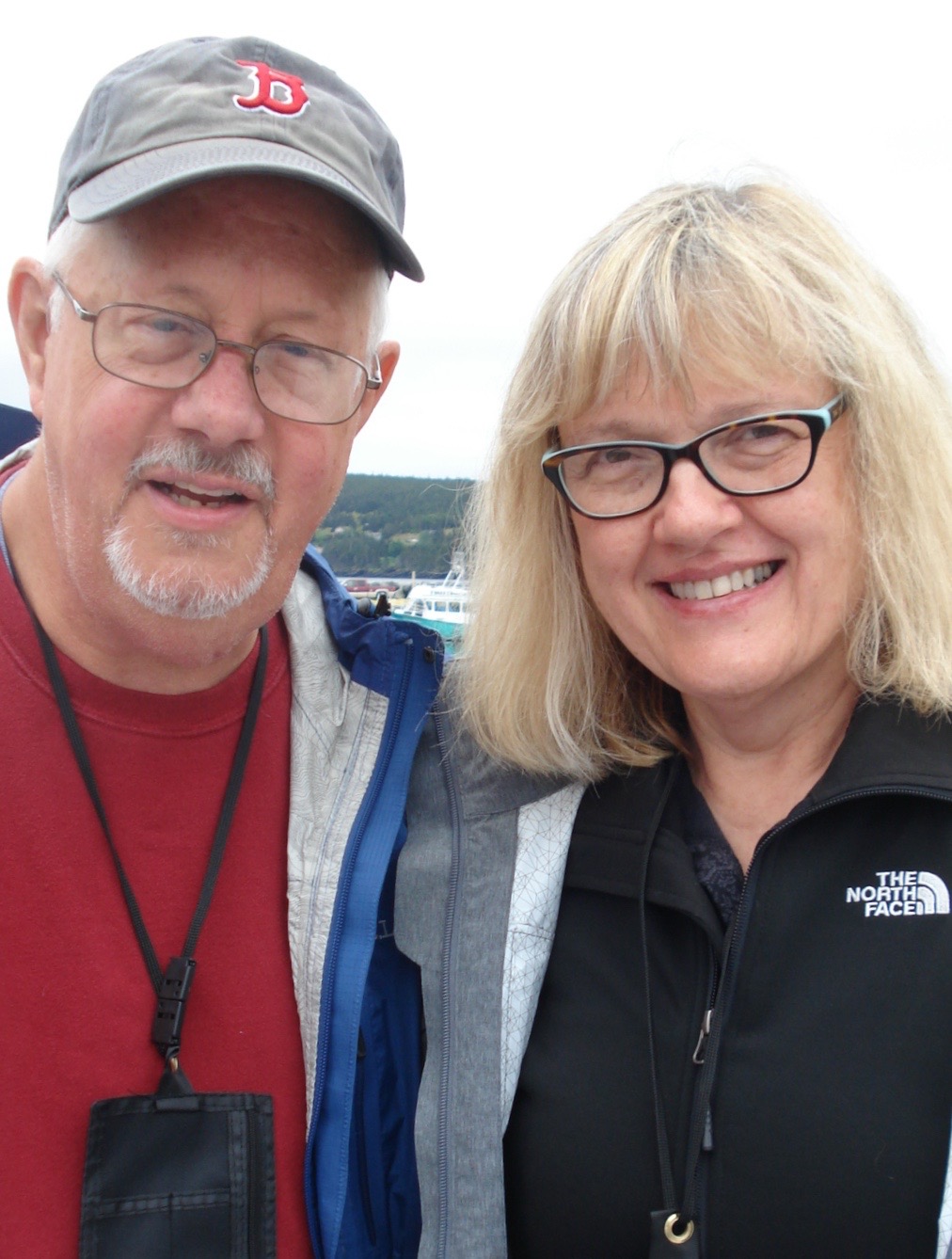
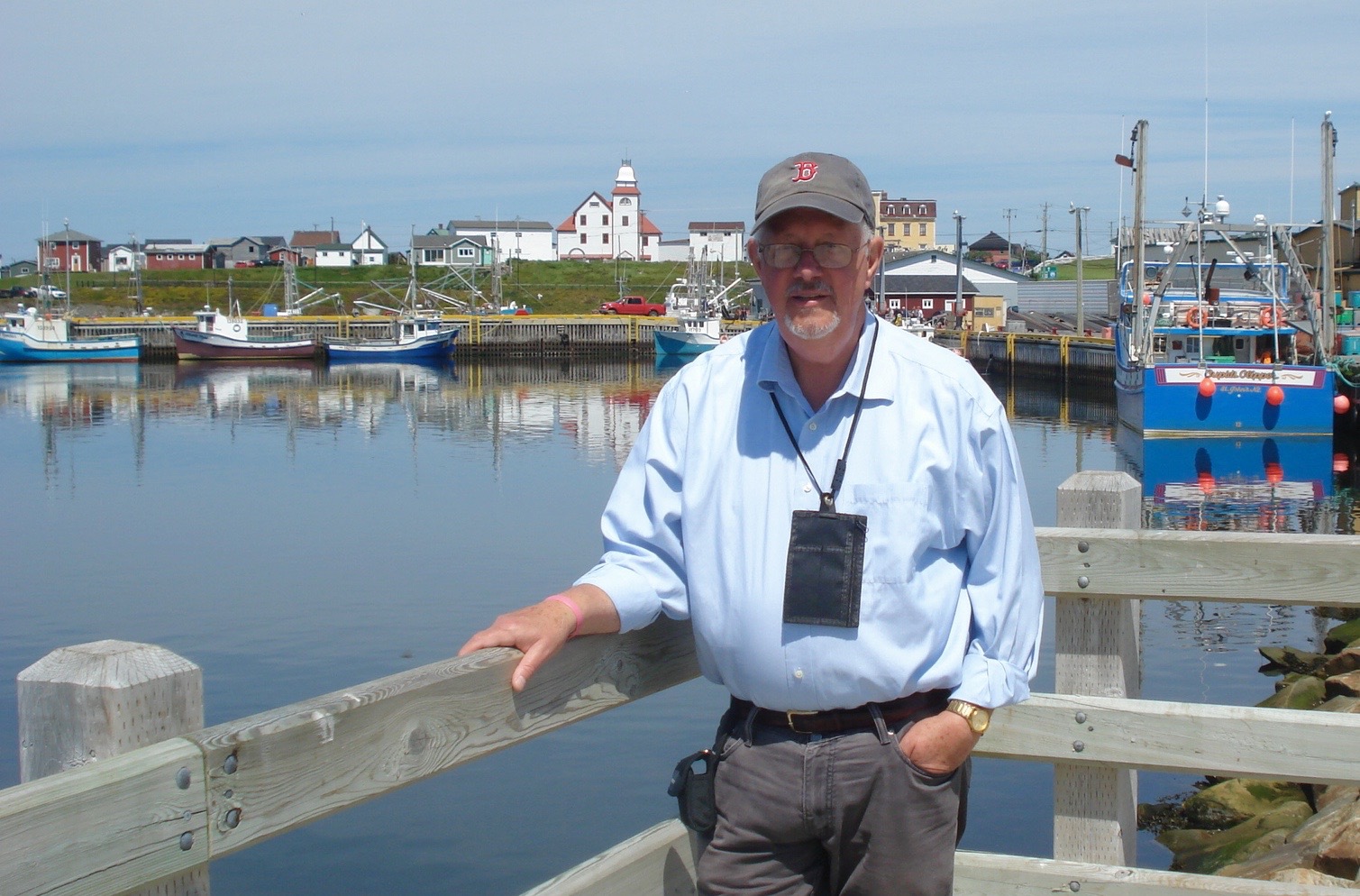
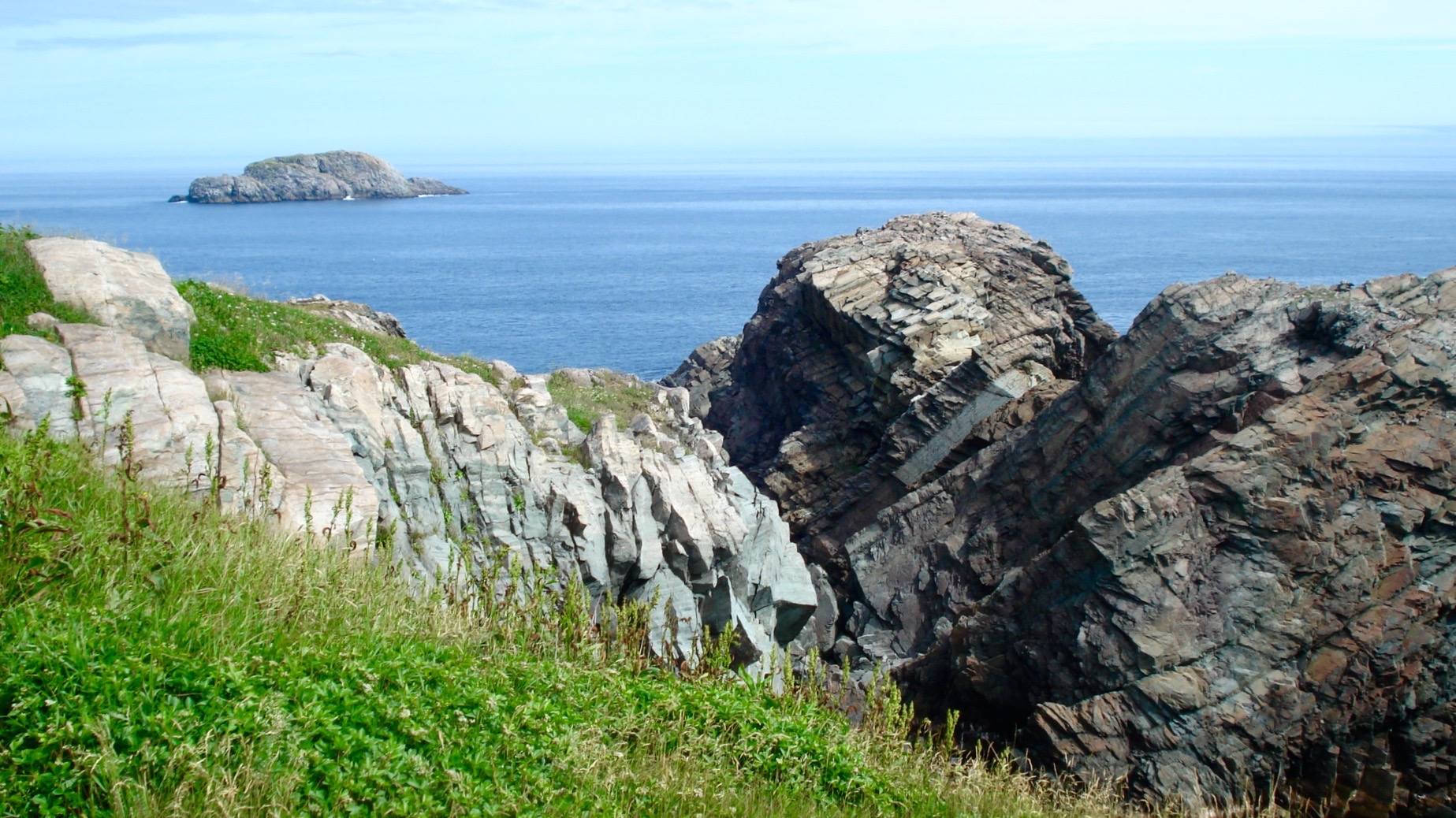
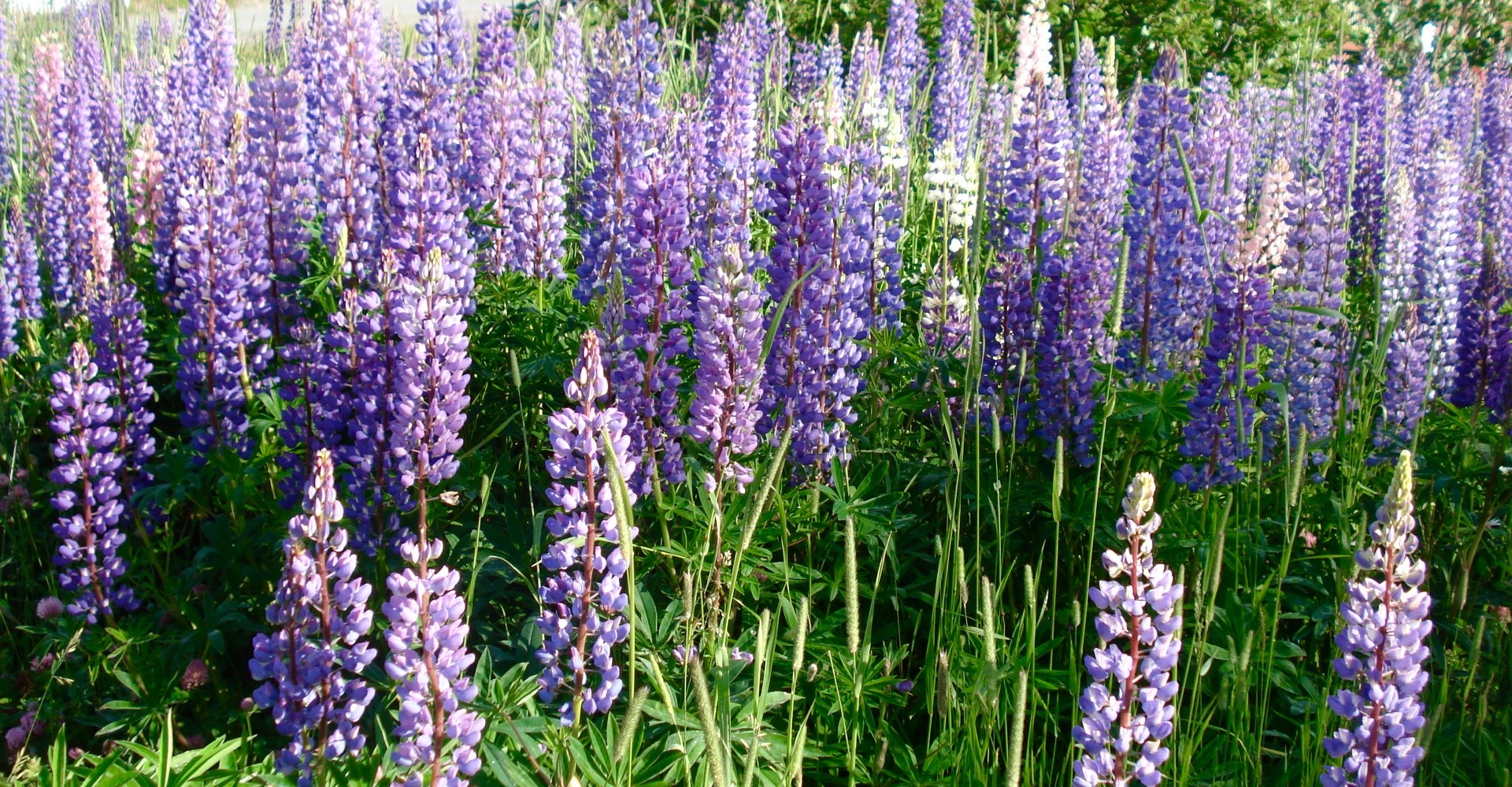
I realize that we visited only the eastern side of Newfoundland. After all, this is a big island, and it takes about 10 hours to drive from St. John’s to the western coast. By all accounts, the western side has great forests and mountains and cliffs and rivers and lakes—a different world, but I think the places we visited represent the heart and soul of Newfoundland.
The original, indigenous peoples pretty much abandoned the place when Leif Eriksson and the Vikings arrived in the 11th Century. (Vikings apparently put the fear of God in peoples wherever they went.) There is evidence of Norse settlements there even as early as 1000. But the Vikings abandoned their settlements as well, and the Beothuk and Mi’kmag peoples returned, only to be virtually wiped out later by European infectious diseases (same old story). In 1497, Italian Giovanni Caboto (a.k.a. John Cabot), while being sponsored by King Henry VII of England, rediscovered Newfoundland. (Think of that—not long after Columbus.) They called the place Terra Nova (Newland). (By the way, today they pronounce their province as Newfun-land, with the accent on land.) For many years, fishermen from several countries came here to fish but didn’t stay year round. In 1583, England officially claimed Newfoundland, as its oldest colony. In 1610, the small village of Cuper’s Cove was settled by 40 English colonists. Then colonies began springing up all over the place.
Ironically, even though Newfoundland sports the oldest European settlements of North America, it is the youngest Canadian province. Up until 1949 it was a self-governing colony, only loosely tied to Canada, but in 1949, after World War II and a divisive vote, they joined Canada. Apparently, most of the citizens still think of themselves as first and foremost Newfoundlanders and only secondarily as Canadians.
Much of the year the place is cold, rainy, and foggy. Why did they come here in the first place? The answer is the Grand Banks—probably the best fishing grounds in the entire world, especially the spawning grounds for the cod. Apparently cod fish were so numerous (and huge) that they could be seen from the surface and clogged up the water. That time period was of course before anyone had refrigeration, and Newfoundland was a long way from major world ports; so what good did all those fish do them? Well, a massive fish packing and shipping industry developed. Fishermen would haul in the cod, and their wives and children would slice them open into flat slabs, heavily salt them, and put them out on wooden racks or on rocks to dry and cure in the sun and wind. If they were cured properly, they could be jam packed into barrels and shipped all over the world. Salted cod would keep for an extremely long time and later could be placed in water to get rid of much of the salt. In addition, they provided cod liver oil. As with other industries, rich and powerful businessmen came to own virtually the entire cod industry, buying the cod from the local fishermen and their families, who were kept working on meager wages that resulted in continual indeptedness to the big bosses. But life went on.
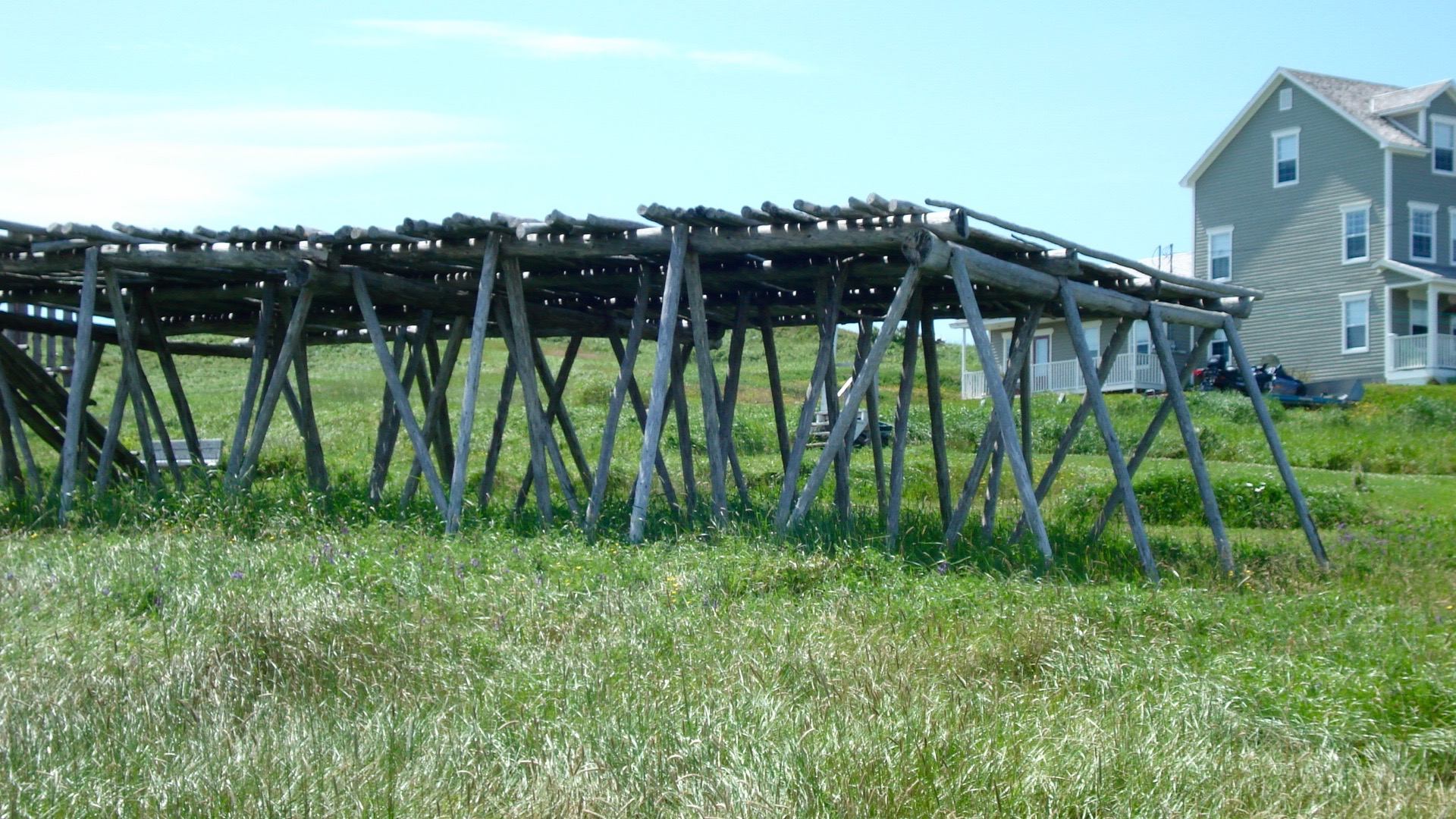
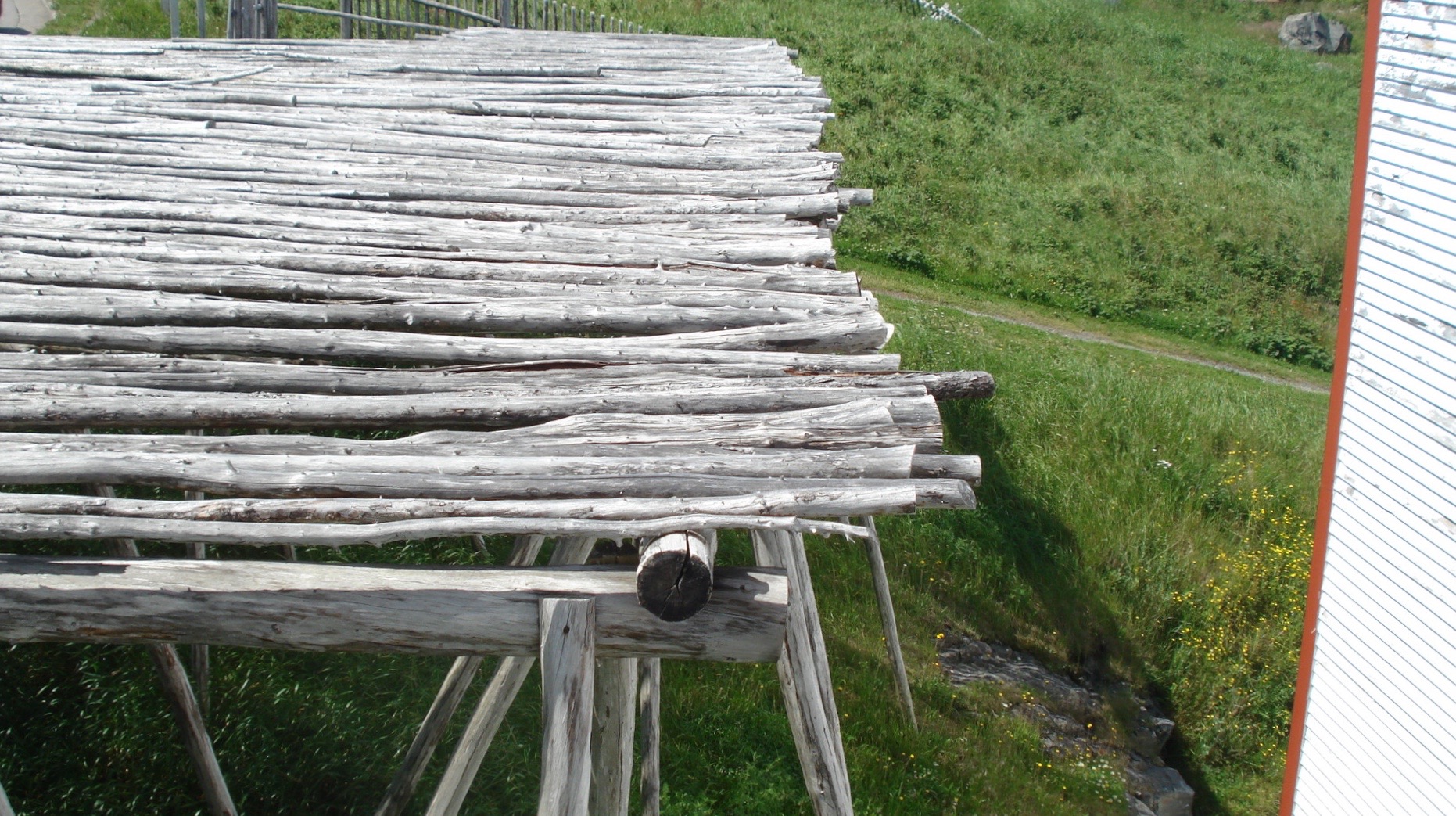
Because fishing reigned supreme, numerous small villages developed all along the rocky coastline, especially at every cove or inlet that would support a harbor. We found these villages to be the most beautiful and interesting places in Newfoundland. I will describe some of them later.
Fishermen first tied hooks to a line with sinkers at the end. They would feed out the line until it hit the bottom then pull it off the bottom by several feet and then shake it (jigger it) to attract the fish. It was hard work, and dangerous because of storms. Over time, fishermen developed more efficient ways of catching ever more cod, mainly by trawling and dragging nets rather than jiggering. And more countries—Spain, Portugal, and Japan in particular—began massive fishing on the Grand Banks. In their greed and with their efficient fishing techniques, they scoured the spawning grounds, and the cod were reduced from millions and millions to almost going extinct. In the 1990s, Canada outlawed virtually all cod fishing on the Grand Banks, and the cod industry died. And along with it, so did Newfoundland’s economy. Nowadays, only a small amount of cod fishing is allowed, and individuals, for a few days each year can go out and catch cod for themselves, with a limit of about five fish per person and using only jiggers. Reports show that the ban is working and the number of cod is growing. They are coming back.
Newfoundlanders talk a lot about their people being displaced, mainly to other parts of Canada, because of the bad economic conditions, and they seem to share a belief that most of those displaced have a yearning to return. Today, St John’s economy seems to be doing pretty well--and they have Labrador, which has rich oil and mineral deposits and hydropower production. Newfoundland’s and Labrador’s population, combined, is about 500,000, and perhaps those that had moved away will return.
I read three novels supposedly taking place in Newfoundland and written by Newfoundlanders. I loved all three. The first, and best known is Shipping News, by Annie Proulx. It garnered her the Pulitzer Prize and was made into a successful movie. It is the story of one of those displaced Newfoundlanders who returns and comes to grips with his past life and family. It does capture many aspects of the eeriness and loneliness of the place, and also its beauty.
Let me return to St. John’s. Viewing it from higher ground, the harbor for this city looks like a whale’s tail, appropriately enough, with lush, green mountains flush on the sea and a light house and a few homes perched precariously on the steep mountain walls guarding the narrow inlet (into the whale’s tail). On the opposite, western side of the harbor, the oldest part of the city rises up on a steep slope reminiscent of San Francisco or Seattle. Many of the streets are lined with row houses painted bright colors. They call these homes “jelly bean houses,” and zoning ordinances protect them and their colors. In aggregate they reminded me of a box of Crayola crayons stacked in rows. Maybe the inhabitants painted their houses as they did to liven things up during the foggy, dreary winters. Maybe they were a welcome sight to the returning fishermen and sailors.
The main commercial streets of St. John’s are Water Street and Duckworth Street, each sporting bright buildings, galleries, and restaurants. George Street supposedly has a higher concentration of pubs than any other street in Canada, or maybe the world.
While in St. John’s, we went to the top of nearby Signal Hill for an incredible view of the city below and also to visit the tower where in 1901 Guglielmo Marconi received the first transatlantic wireless signal from his station in England. As you might guess, telegraph companies, such as Western Union, were angry that this new-fangled invention had come along and tried to block it, but we know how that turned out. After all, today we use “wireless” to talk down the street, all over the world, and even into space. We particularly liked being in Marconi’s wireless room in the tower because formerly when we were in Bologna, Italy, we had visited the place where he sent his first wireless signal--across his kitchen. He had come a long way.
On Signal Hill we also visited a geological center to view some of the oldest rock found on earth. I can’t tell you how old, but these rocks formed way back when the earth’s crust was forming. (There is a point on the southern tip of the Avalon Peninsula, Mistaken Point, which holds some of the oldest fossils in the world, but at this time visitors are not allowed there. It is a place that our son, John, would love to visit.)
We then drove out of town, north of St. John’s, to Portugal Cove to see a small beach between rocky cliffs where the locals spend time fishing for capelin, small smelt-like fish, plentiful around Newfoundland, and perhaps the prime reason the wildlife is what it is. The capelin feed the large fish and the myriad birds and whales. The capelin are the wheels on the bus. And folks are worried that, with the rising sea temperatures, the capelin will die off. If that happens, the wheels on the bus will fall off.
In the late Spring, eastern Newfoundland is visited by many icebergs, which break off from glaciers in Greenland and float down past the coast. But in July, we were too late to see any. Wait a minute! Was that an iceberg out there? While we were watching the waves near Portugal Cove, we spotted a solitary, tardy iceberg floating by. How cool is that?
I mentioned that the cod fishing industry is practically defunct, but fishermen have switched to fishing for various varieties of shellfish. We had lobster a few times on our visit and salmon, and cod. In fact, in one Irish pub in St. John’s I had the best cod fish and chips I have ever tasted.
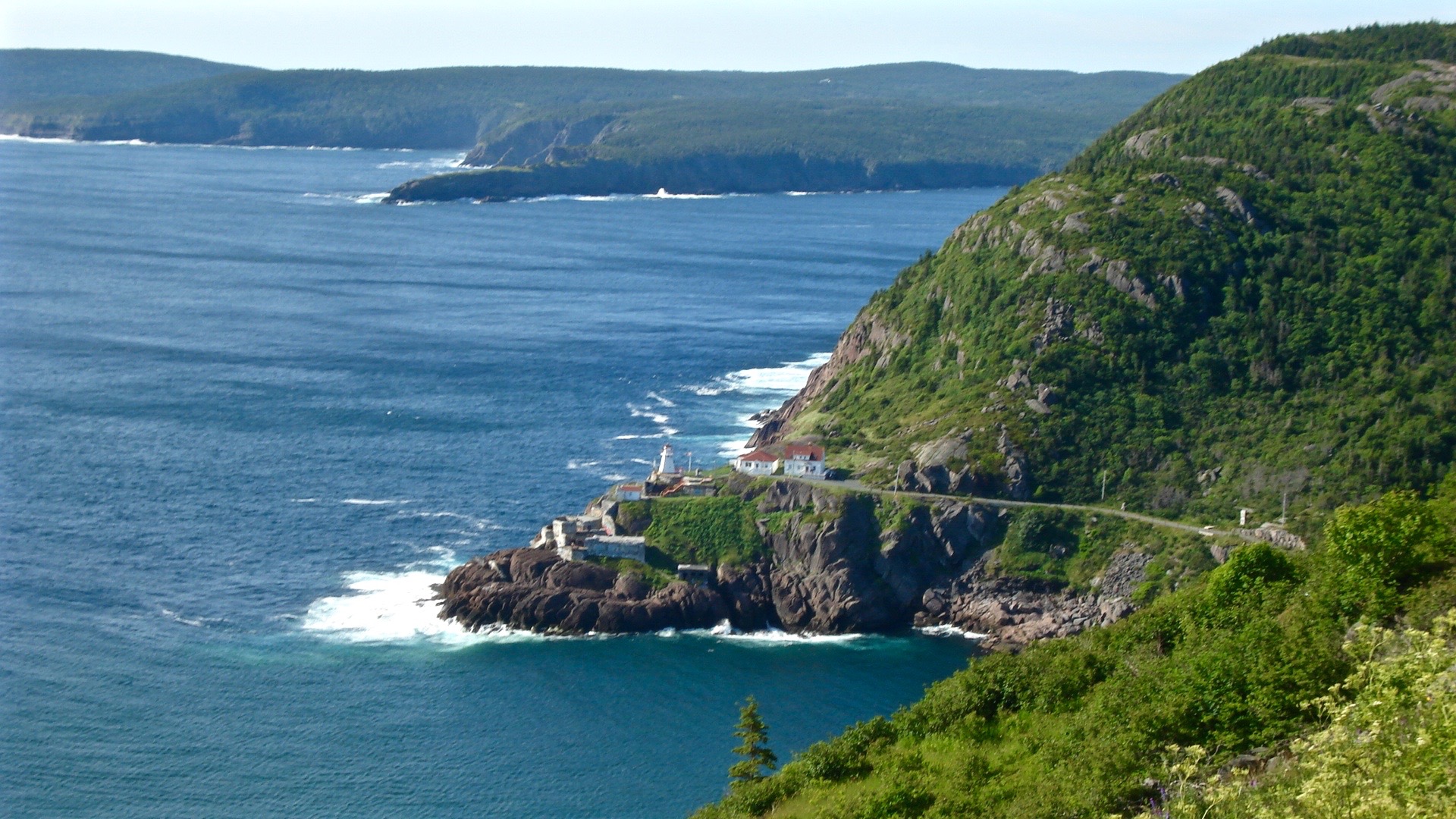
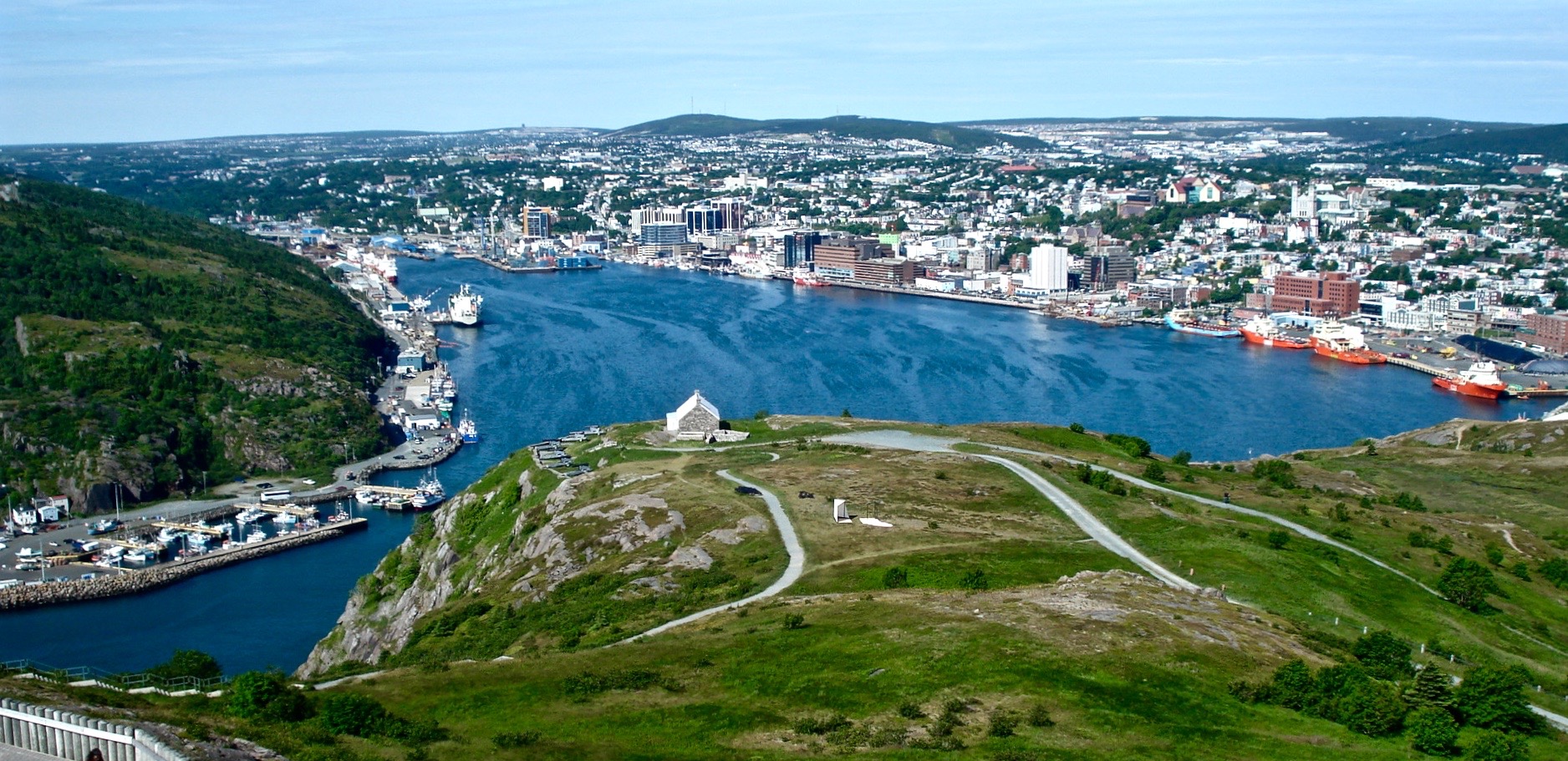
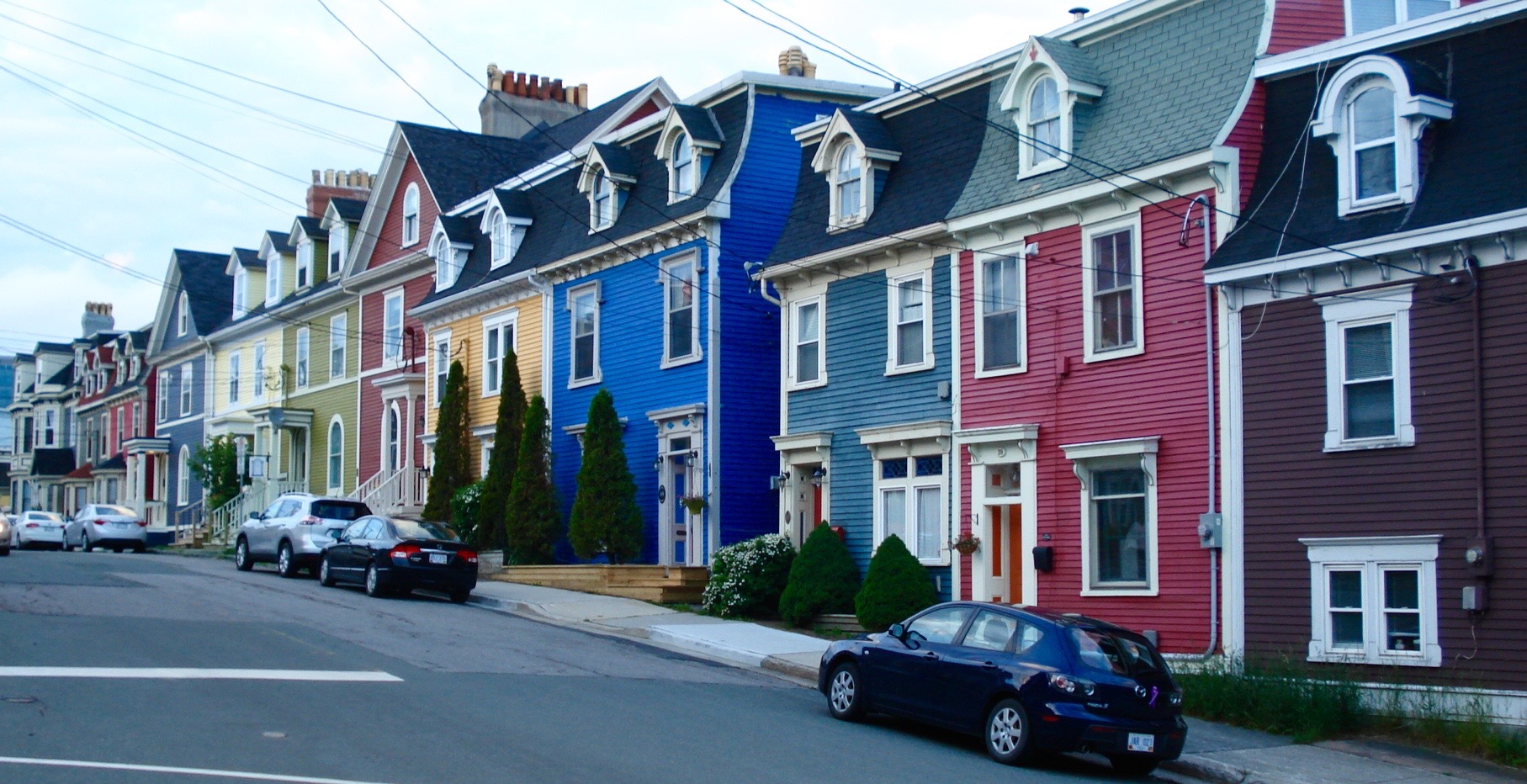
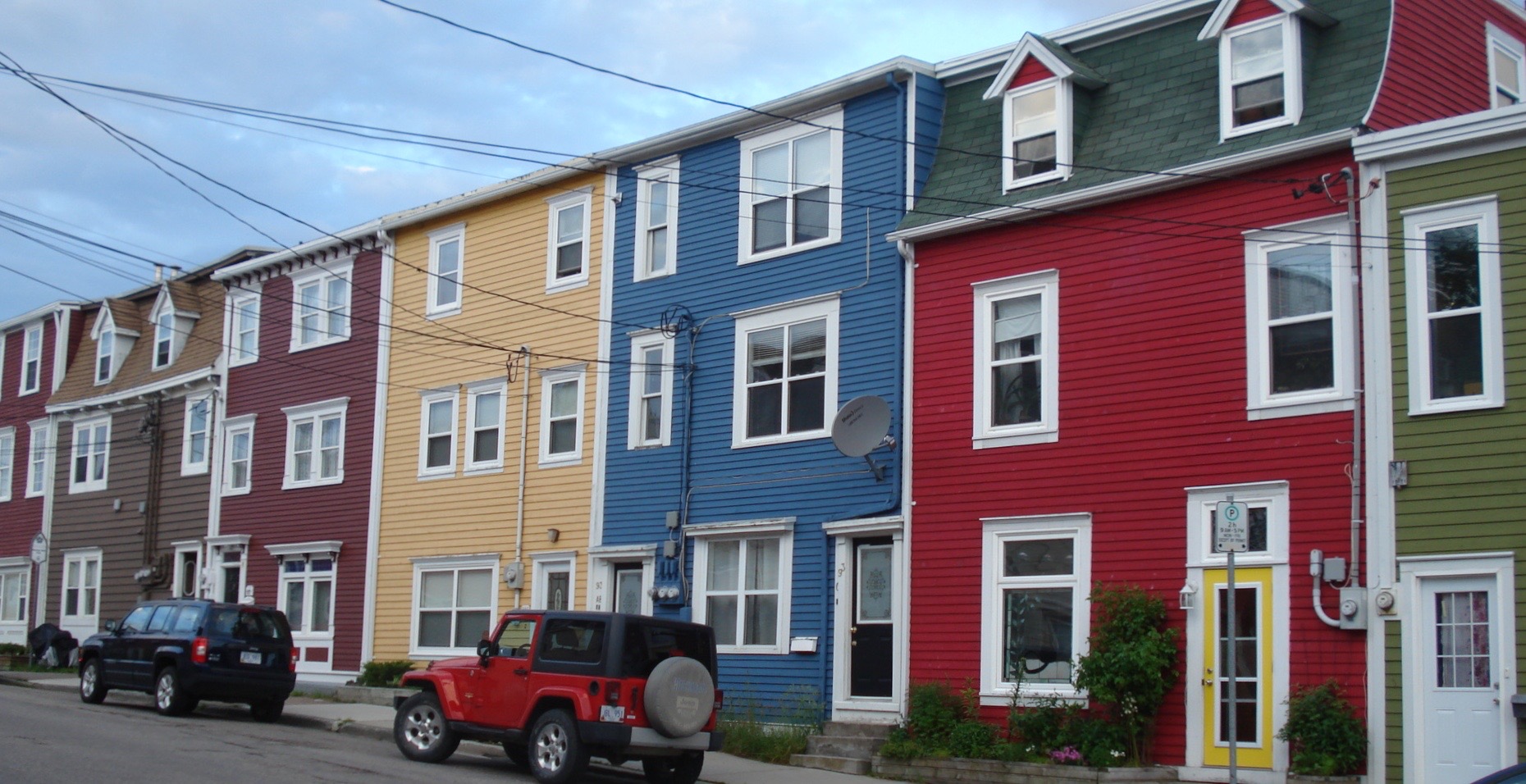
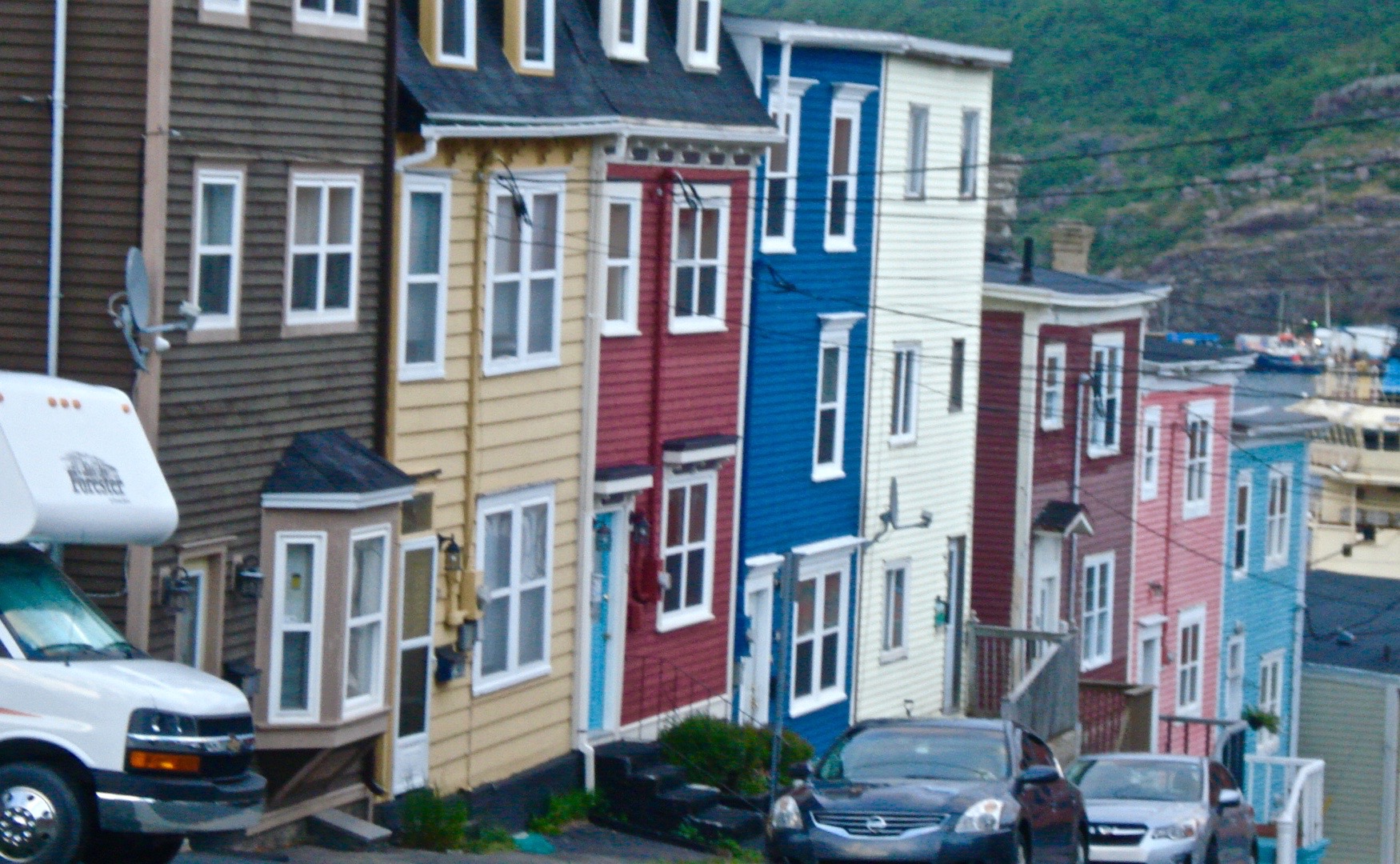
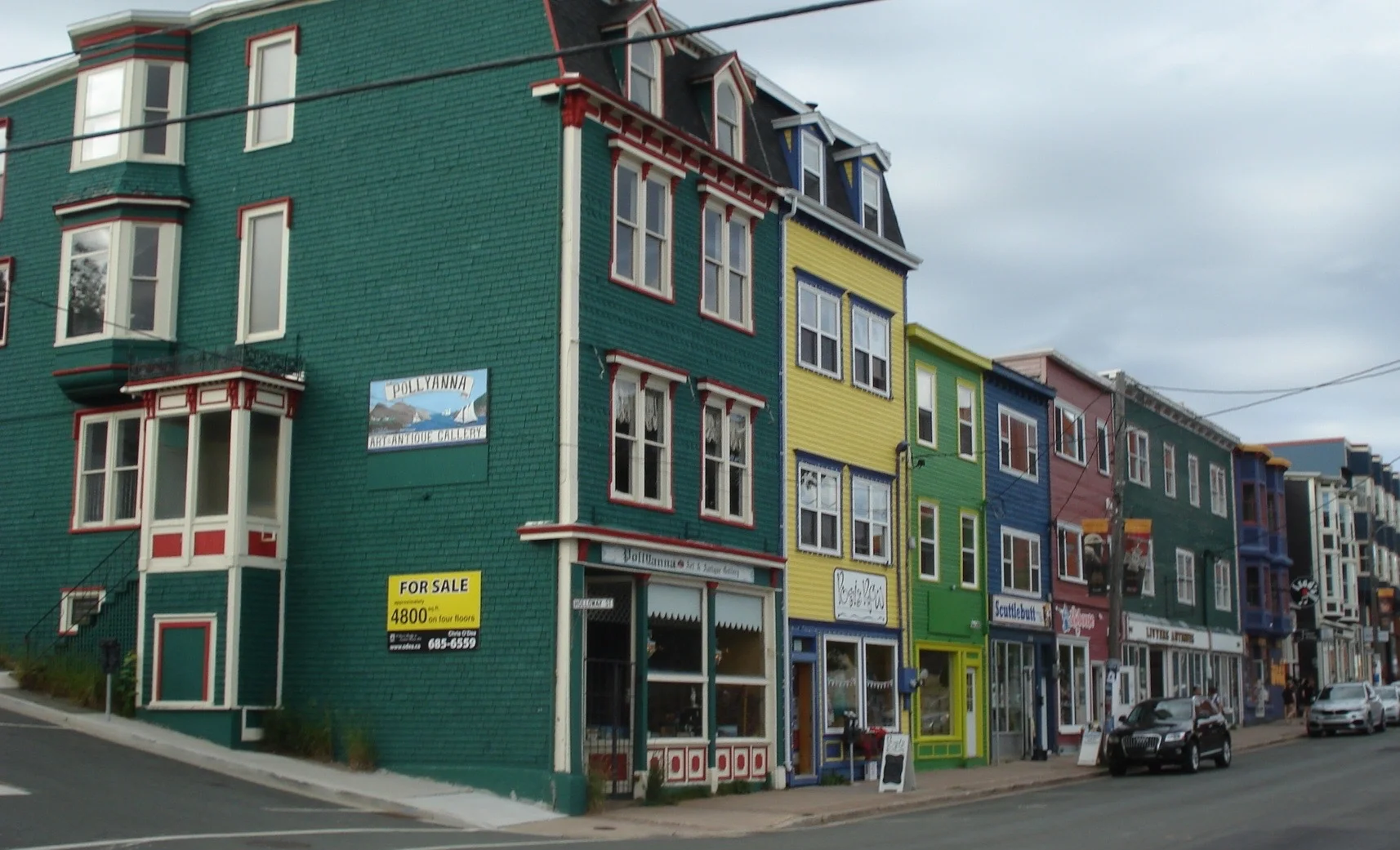
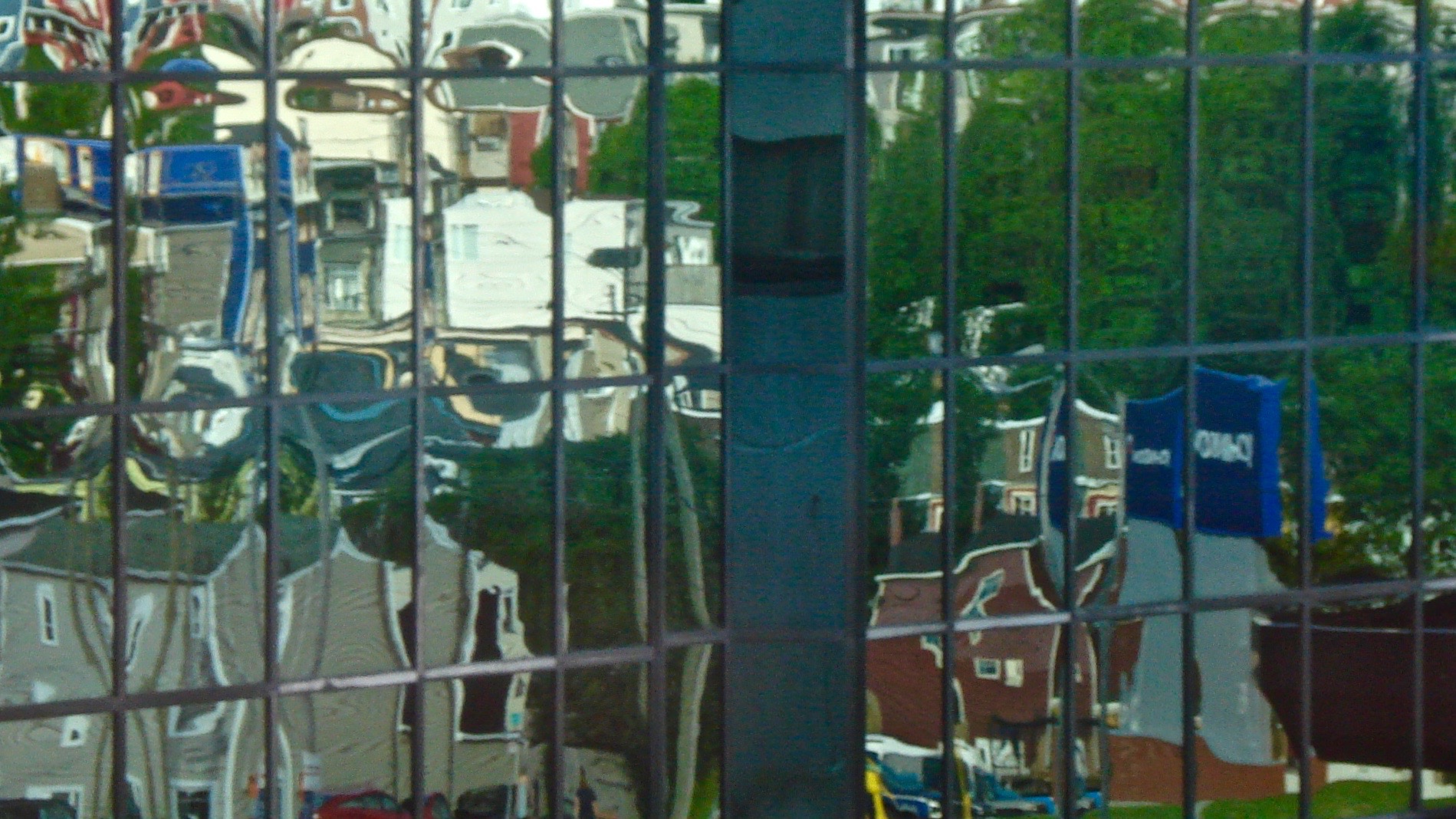
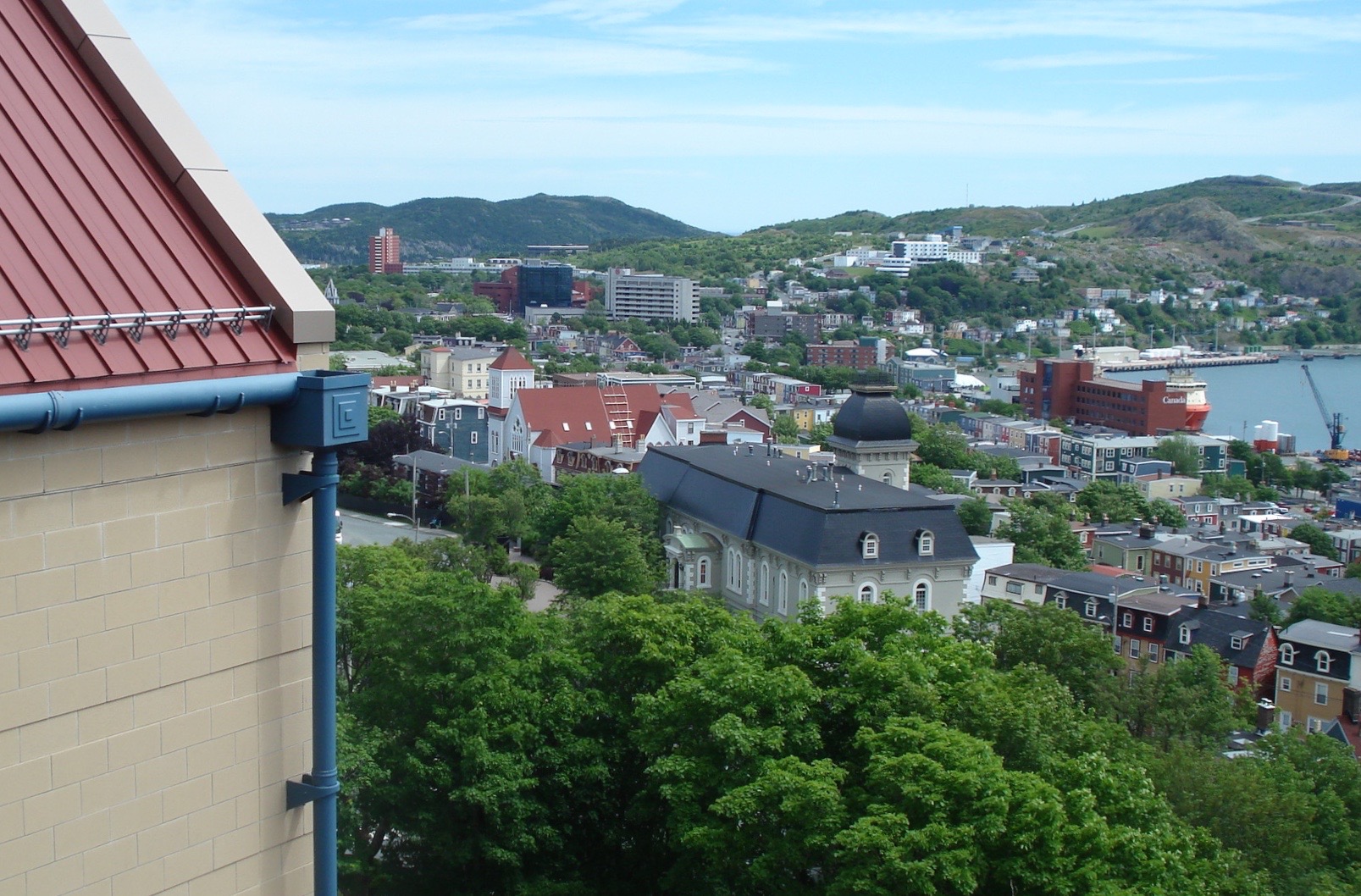
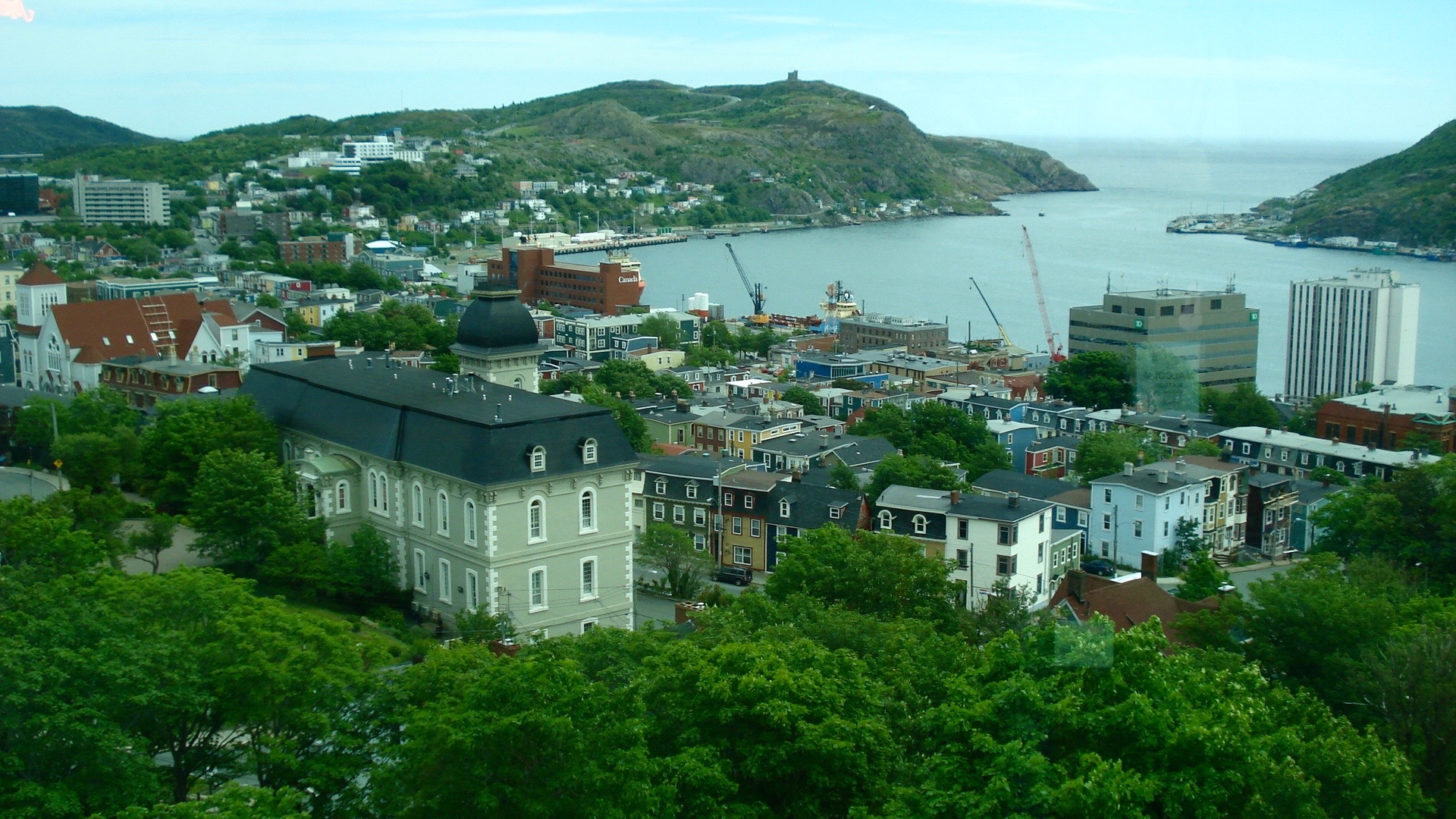
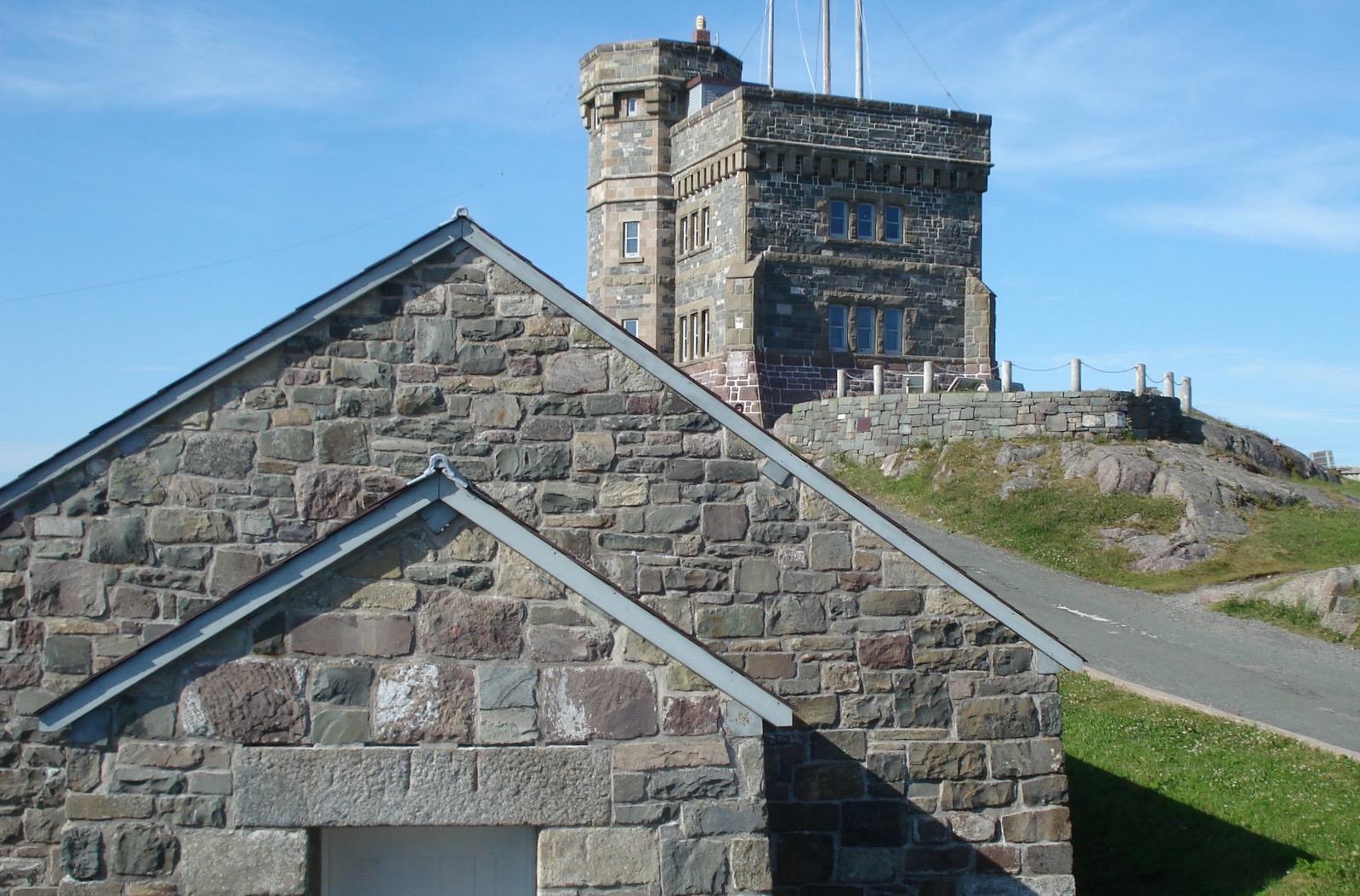
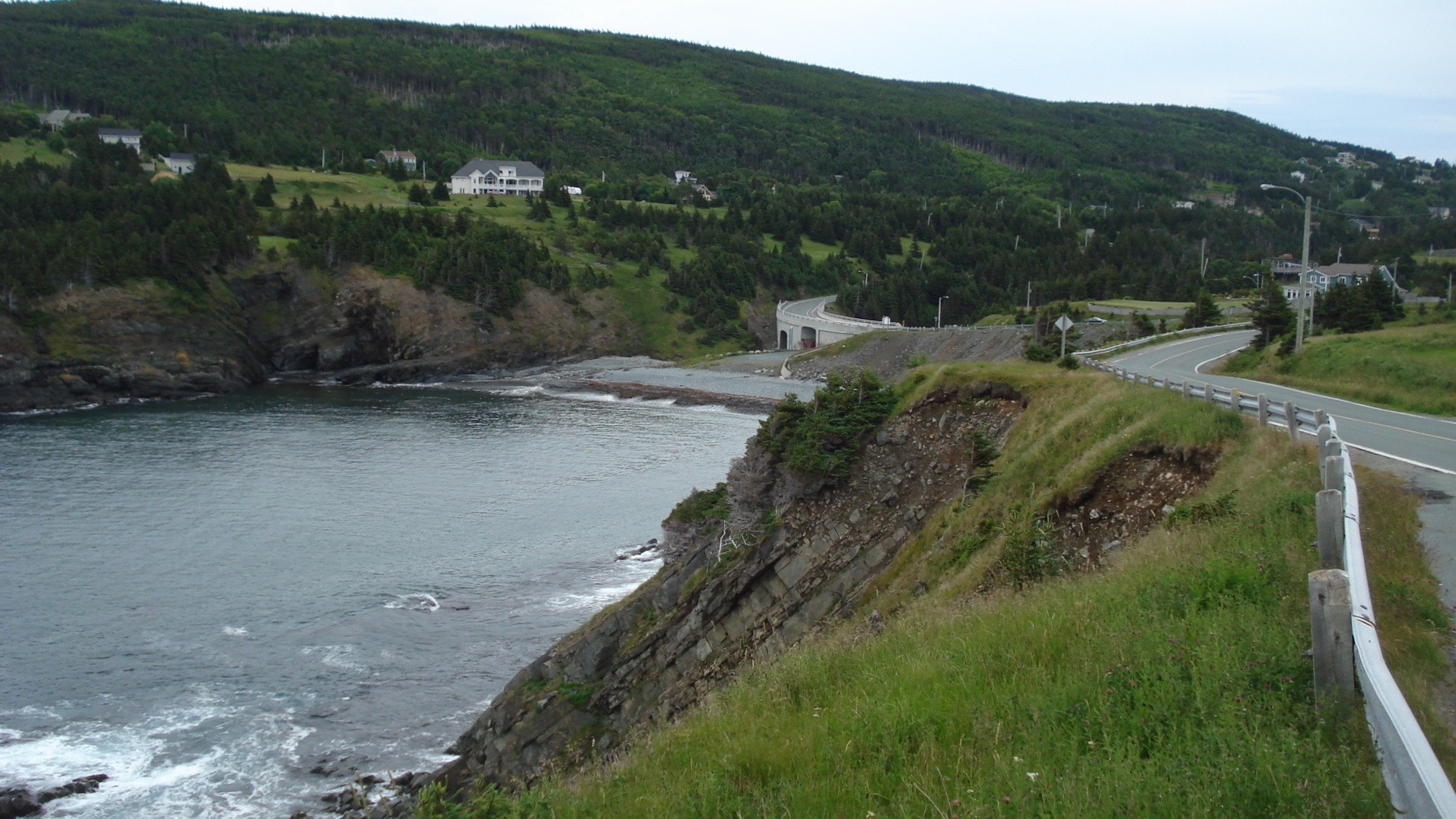
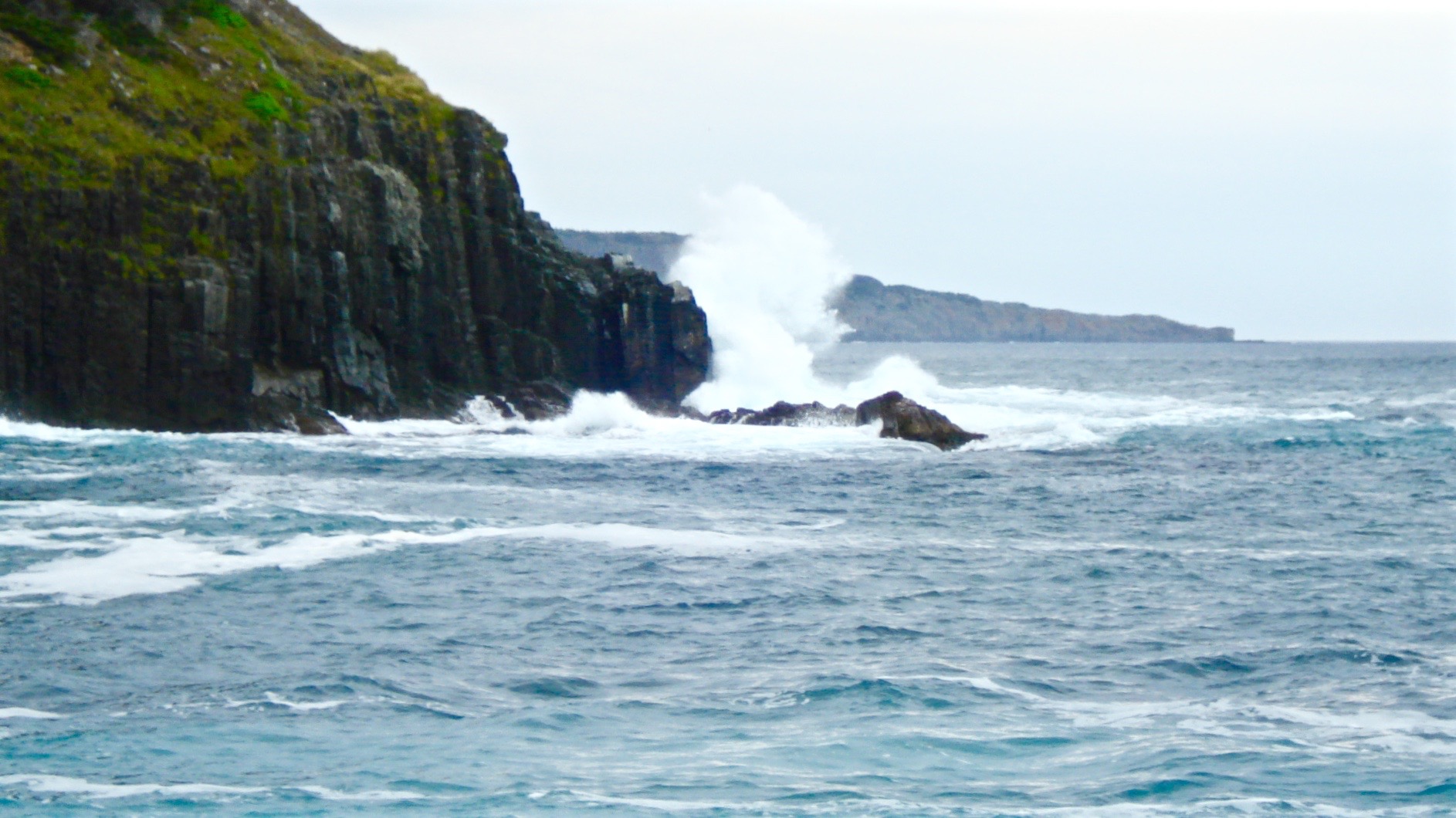
When our family has traveled to various places, we often complain about and make fun of “Bus People,” those folks who pull into a tourist destination in bus loads and swarm all over the place. I can’t believe we did this, but we signed up for a multi-day guided tour of Newfoundland to visit the small towns and sites. We were bus people. At first I thought, “They are all so old,” but as we got to know many of them and enjoy their company, I came to realize that no small number of them were younger than I was. (Many of you know how it is when you keep thinking of yourself as younger than you actually are.) All of our bus people except the two of us were Canadians, but, like us, the foreigners, this was their first time visiting Newfoundland. Most of them were enjoyable to be with. But, as might be expected, a few of them were cantankerous and creepy. One guy in particular had a loud, foul mouth, made the bus stop several times so he could buy more liquor, and throughout the entire tour publicly criticized and belittled his wife, who quietly took it. One evening in a pub when we were all eating together and listening to a band headed by an accordion player, he made the rounds trying to dance with each of the women. At one point he looked directly at Beth and took a step toward her. Wow, you should have seen Beth in action. She looked straight at him with a look that could stop a grizzly bear and shook her head ever so slightly. He backed off as if he had been shocked and returned to his seat.
We had a great guide and storyteller for our tour. At one point he told a story and showed us a video that I wish I could reproduce for you. Some years back, he was a schoolteacher in Bay Bulls, one of the towns that we visited (more on that later). Canadian public television launched a project to make videos depicting the way of life from a child’s perspective in the various provinces, especially in those small communities that had different customs and dialects. They asked him if he had a girl in his class who might have the type of outgoing personality to be the charming star of the film representing Newfoundland. He did. He then had to arrange with the girl, Sandra, what class he should teach for the portion of the film that would show her in school. Eleven-year-old Sandra replied with excitement, “Oh, my favorite subject this year was when we talked about how babies are made and what boys’ bodies are like and how they are different from girls’ bodies and how we are changing. And I like to learn about how boys and girls go out together. Can we have another class on that, eh?” (We found that it is true; all Canadians, including Newfoundlanders, end most of their sentences with “eh?’) Her teacher started to panic. After all, he was teaching in a Catholic school, and he wasn’t so sure how it would go over if on national television he was giving a class on sex education. He and Sandra reached a compromise, and in the film that we saw, he taught a short class on human relationships and how people handle them. However, in the film, as Sandra was interviewed after the class, she exclaimed with enthusiasm that she liked her teacher and that her favorite subject was learning about boys’ and girls’ bodies and how everything works to make a baby. She wasn’t going to be denied saying what she liked about school. She was cute and delightful, and I guess her teacher didn’t lose his job after all.
We heard several uniquely Newfoundlander phrases that are used frequently. Here are my favorites. If you are saying good-by and wish someone all the best, you say, “Long may your big jib draw.” Wherever we went, people had wash hung out on lines to dry, even though sometimes they were hanging in fog and drizzle. If it is good weather, you say, “Good day on clothes.” But if someone asks about the weather, a more common answer is, “rain, drizzle, and fog,” always those three. In windy weather, when someone’s hair is tossled about, they say, “Your hair looks like a birch broom in the fits.” I loved that one and kept saying it to Beth whenever it was windy. And my all-time favorite was what you answer when someone asks “How are you?” You answer, “The finest kind.” In fact, they use that answer for many occasions: “How’s your dinner?” “The finest kind.” “How was your trip?” “The finest kind.”
To visit the coastlines and small towns, we first made a trek south of St. John’s down the Irish Loop. We visited the small, coastal fishing villages of Bay Bulls, where our guide had taught school, and Witless Bay and then Ferryland (what great names.) In Bay Bulls we took a tour boat out among several islands. Our trip to view sea life was richly rewarded. First, a pod of porpoises came diving and swimming directly at the bow of the boat. They veered off in time to avoid a collision. Then we entered a pod of humpback whales. We were surrounded by about 20 whales, blowing water out of their blow holes to clear them, surfacing, looking us over, and flipping their tails out of the water. One close to the boat even did a full breech. We were so excited. They seemed to be intent on gorging themselves on capelin, which were thick in the water. The whales spend their winters in the Caribbean or other warm waters and have their calves down there. They don’t eat during that time. Then in summer they come up to these northern waters and fatten up, usually doubling their weight.
And then we glided close by the cliffs of one steep island that housed the rookeries for several kinds of sea birds. Each particular species had its own niche on the island cliffs or grassy slopes above the cliffs. Some held to nooks and crannies on the cliff faces; others hovered on the sloping rocks above the vertical cliffs; others stayed on the edge of the slopes up above.
And the puffins—ah the puffins. These were the cute little birds we came to see; these were the key to our choosing to visit Newfoundland. There were millions of them in the grassy slopes above the cliffs. Each pair mates for life and comes back to the same spot each year to lay their one egg and raise their one baby. They burrow tunnels into the grass and dirt and raise their chick back in their burrow. All around us, millions of birds, including the puffins, flew over the water diving and catching capelin to bring back to the young. The sky and cliffs were filled with bird sounds and with swarms of birds flying every which way. In fact, two puffins pooped on my windbreaker, but luckily they didn’t hit my Red Sox cap. So this is what a rookery is like. We loved these birds. We loved the experience. We first thought the whales were the highlight, but this was even better.
But those cute little puffins have a tough start in life—truly survival of the fittest. When their parents think their babies are ready to leave the nest, they simply push them off the cliff. They are good parents up to that point, but there is no returning home after that. And well over half the puffins don’t fly on that first drop and die on the rocks below or immediately get picked off by other predator birds.
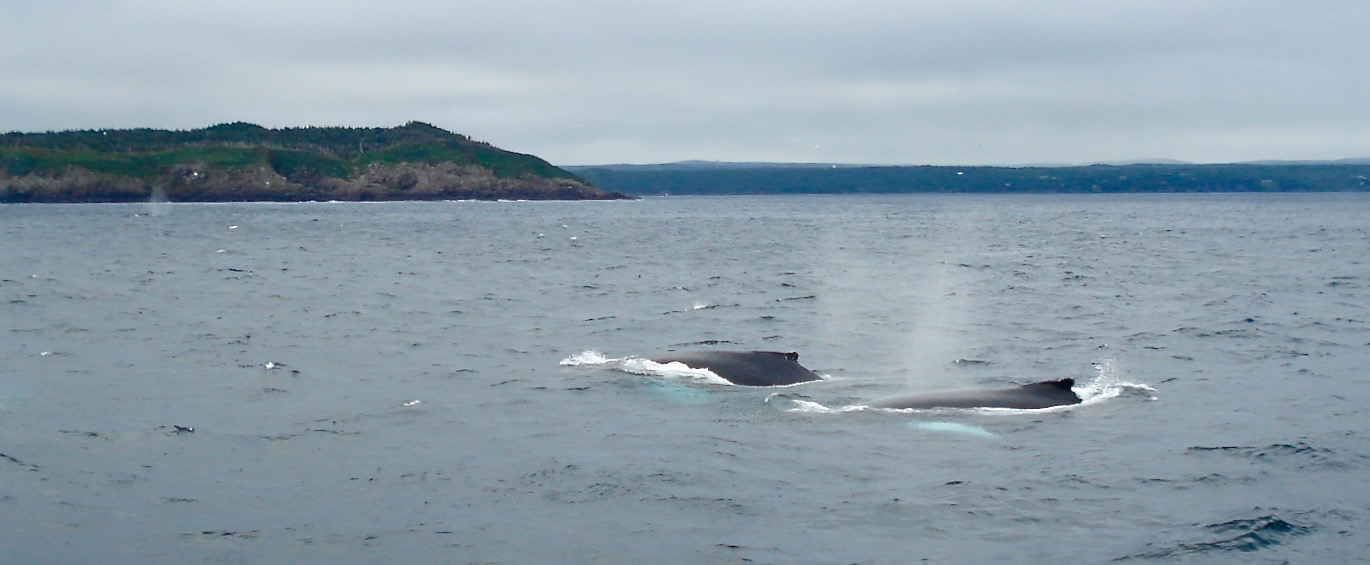
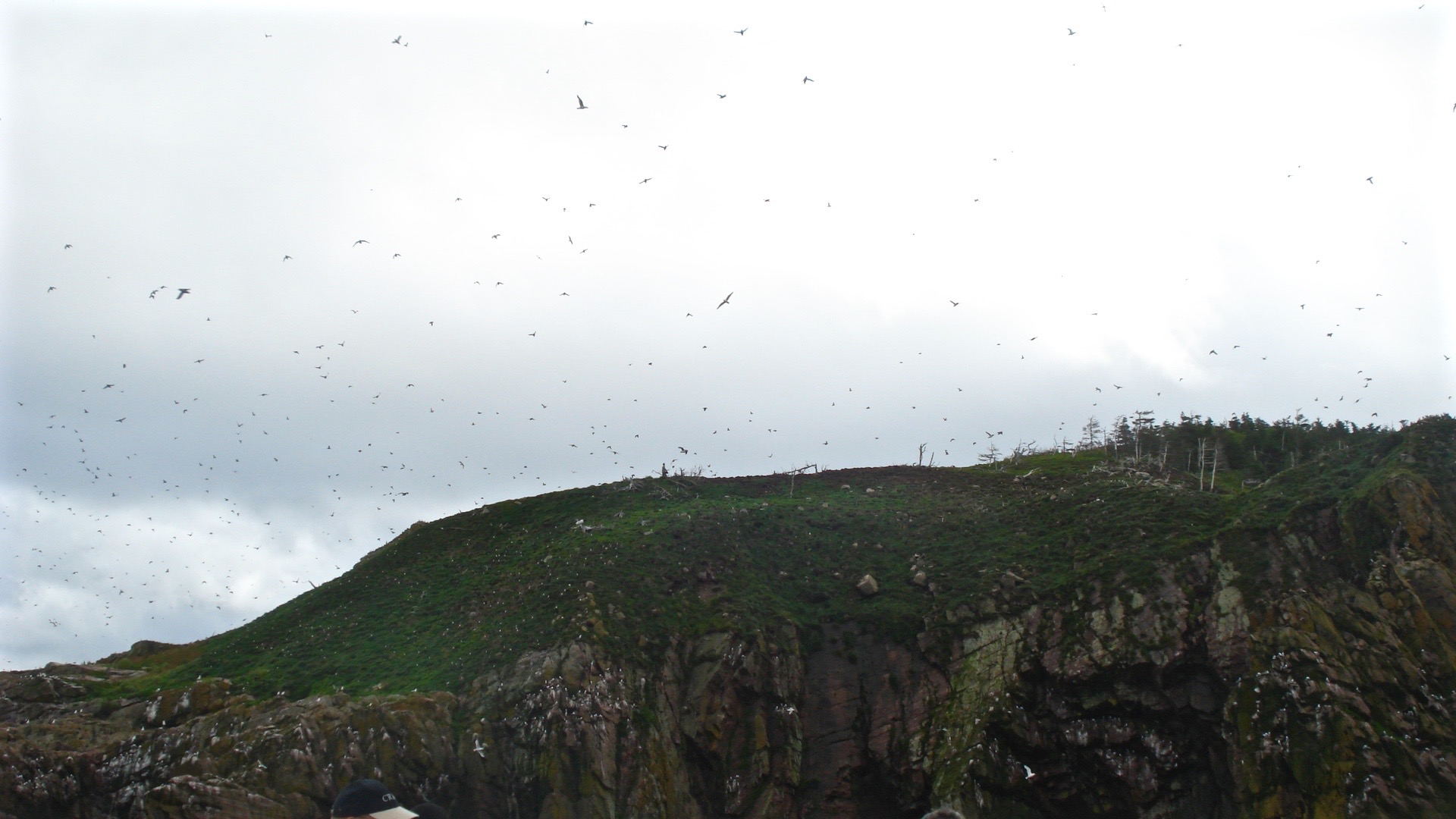
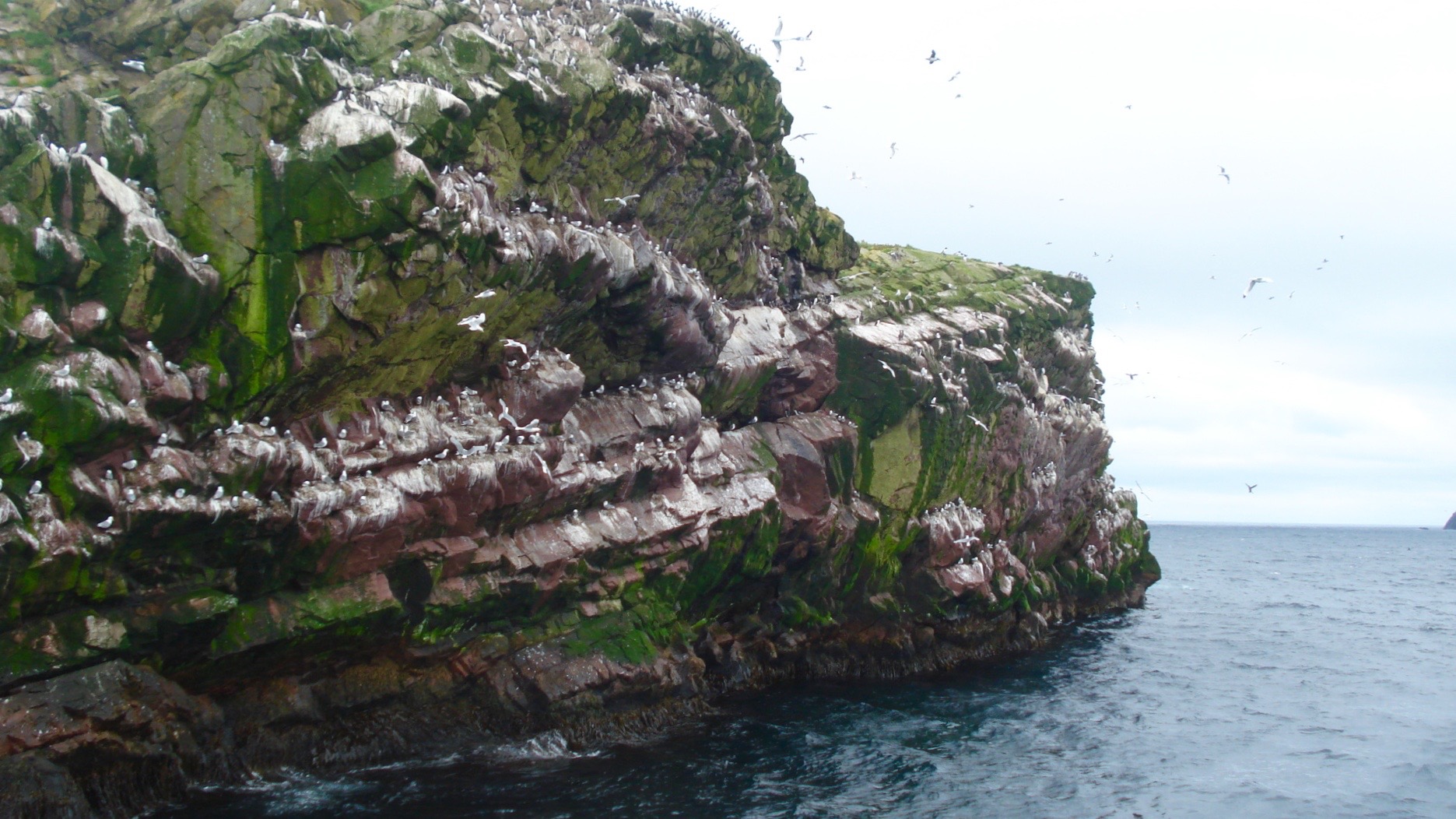
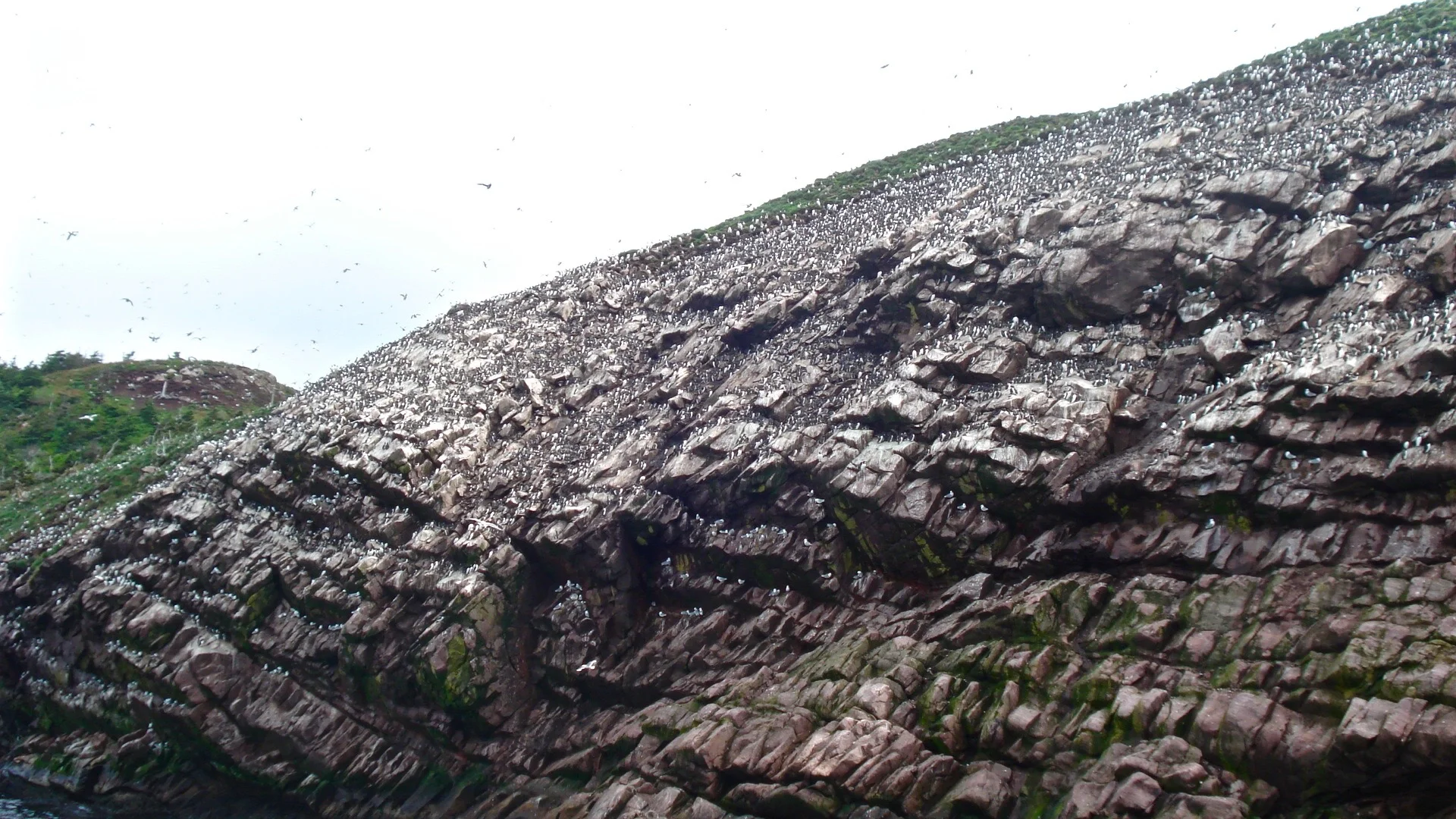
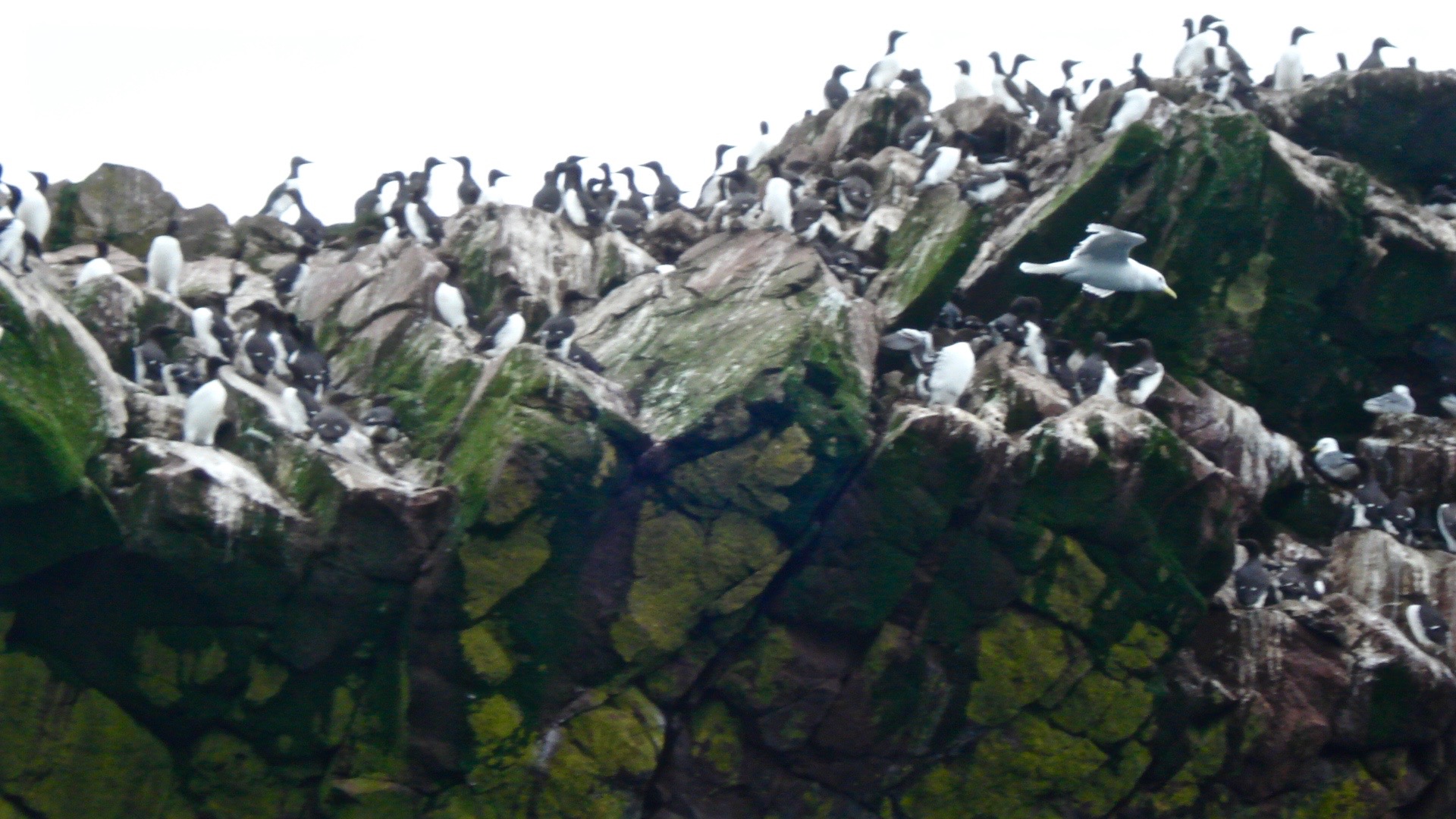
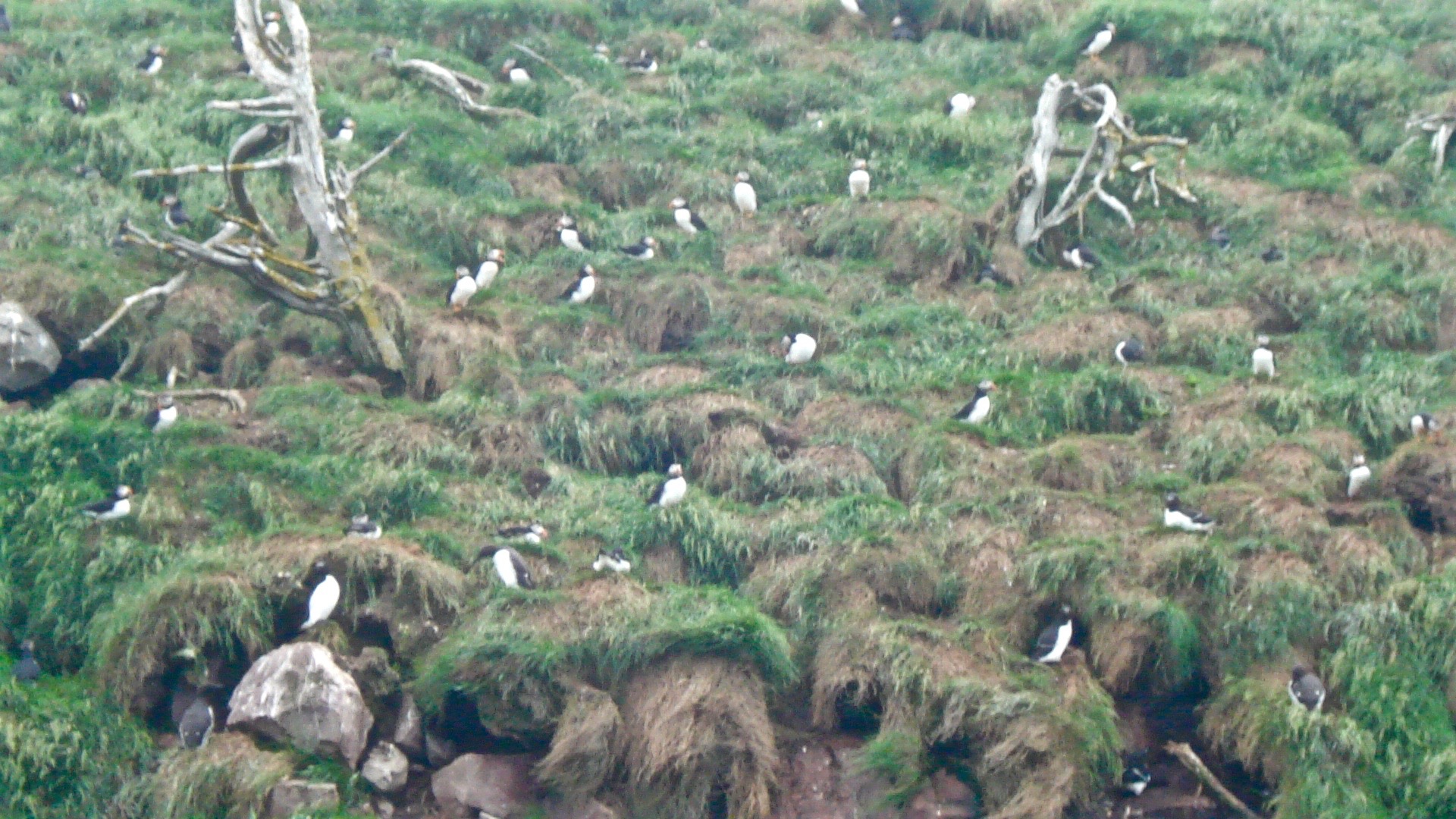
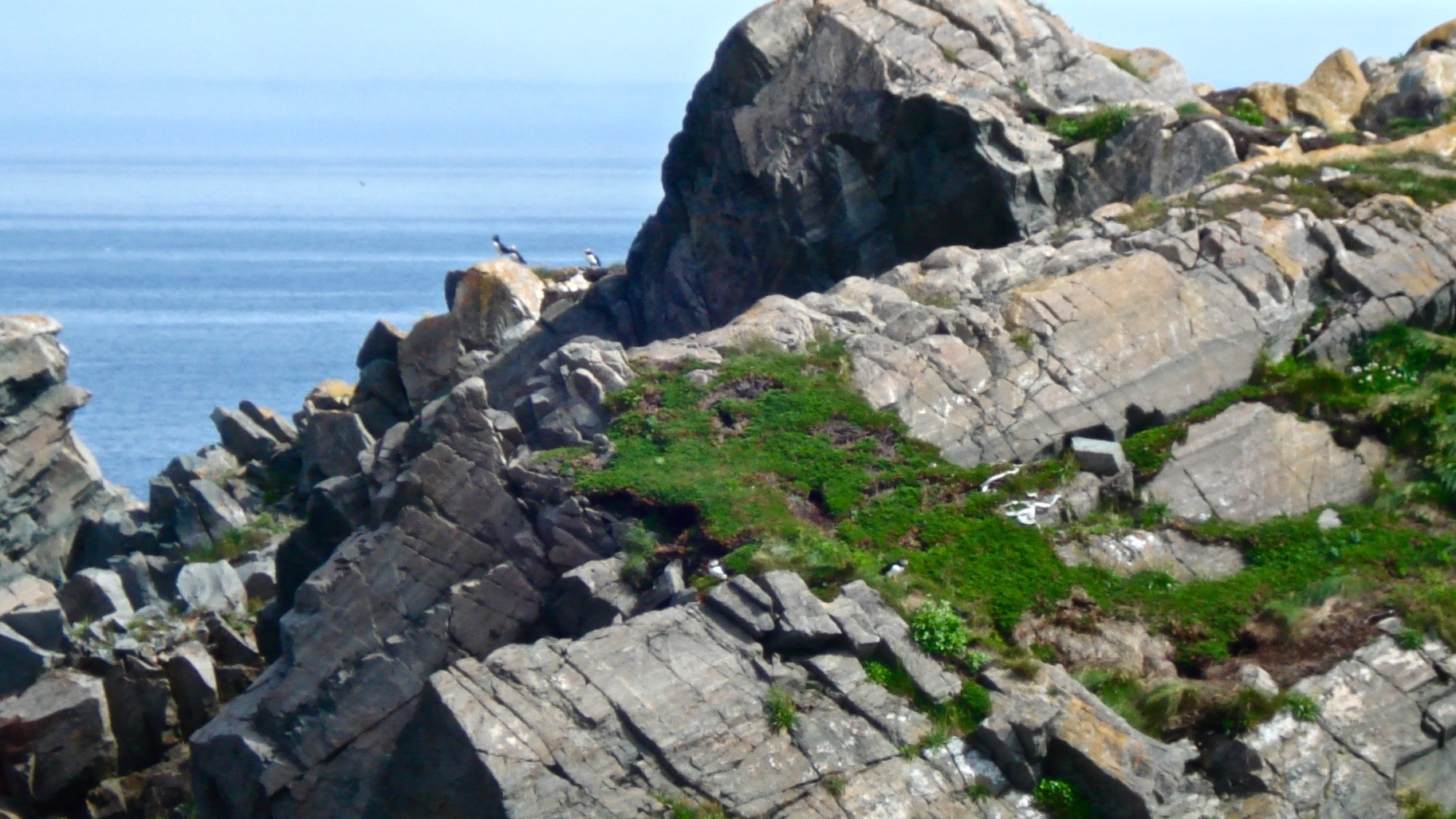
After seeing the whales and birds and then looking around the small community of Bay Bulls, with it’s sparsely arranged houses down by the bay and then creeping up the gentle green slopes to a white church up on the hill, Beth declared that she wanted to live there. She says that about a lot of places we visit, but I could see why she felt that way about this place.
Next we visited the town of Witless Bay, which was pretty much fogged in on our visit. The second novel that I mentioned reading about Newfoundland, supposedly took place in Witless Bay. It is The Bird Artist by Howard Norman. It is about an artist who commits a murder and goes through a process of redemption, and it seems to fit the fog and sea as we saw it that day. I loved this book even more than Shipping News.
The third town we visited was Ferryland. While there we explored an archaelogical dig of one of the oldest English settlements in Newfoundland and spent some time talking to the archaeologist in charge of the dig. We then hiked up the path past some inlets and boats, through grasslands and a low lying evergreen forest that looked like a Christmas tree farm (though it was natural), and out on a narrow peninsula with the ocean on both sides to arrive at the Ferryland lighthouse. Lighthouse, cliffs, blue ocean—it didn’t get much better than this. While there we ate a most delicious lunch on the grass at the base of the lighthouse, overlooking the cliffs surrounding us. It was sunny but windy. At one point the wind whipped my cap off and blew it to the edge of the cliff. Should I chance going after it? Of course; it was my well broken in Red Sox cap. Fortunately, it got stuck in some rocks right at the edge of the cliff, and, gingerly, I was able to recover it without tumbling over the edge.

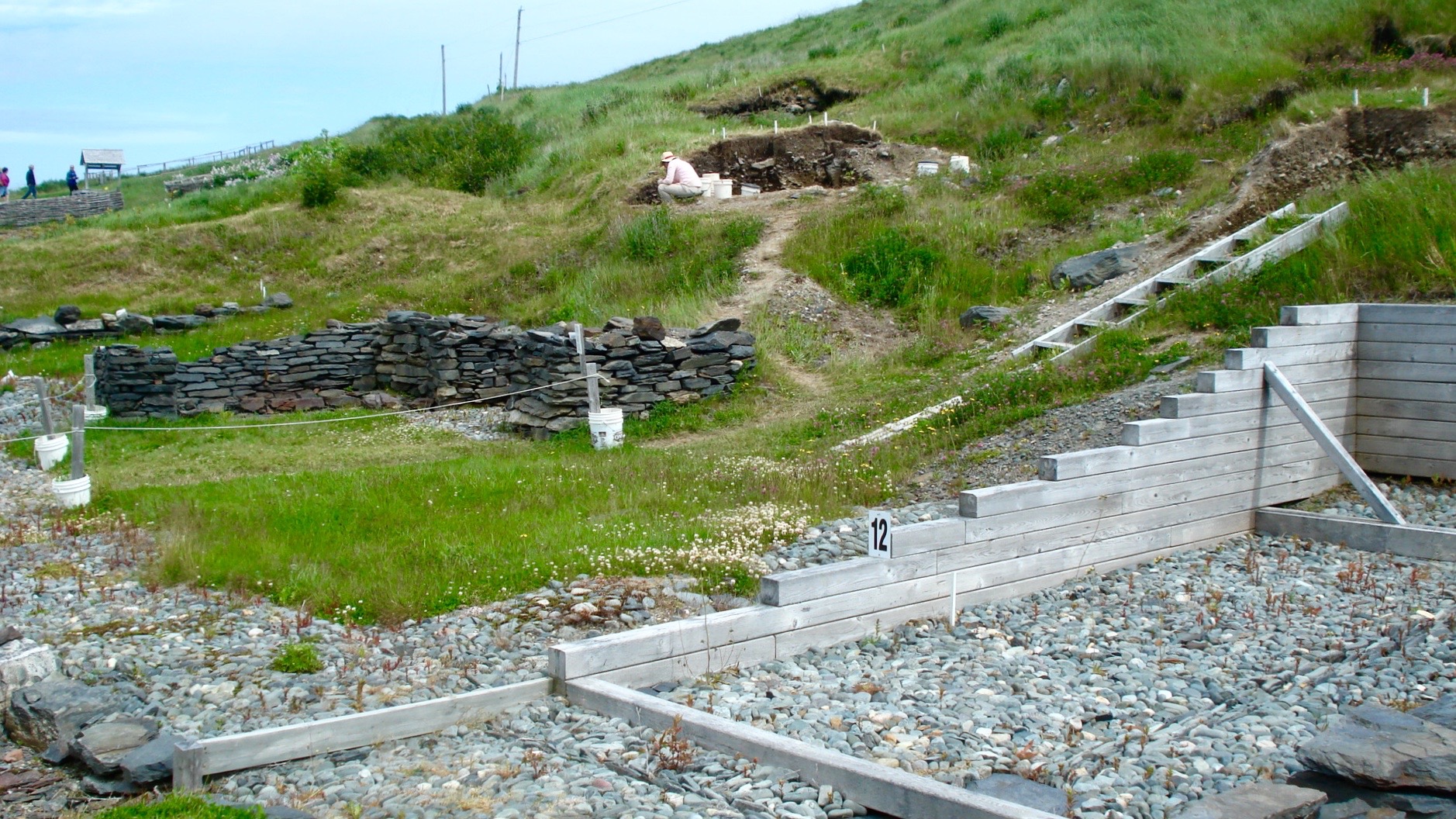
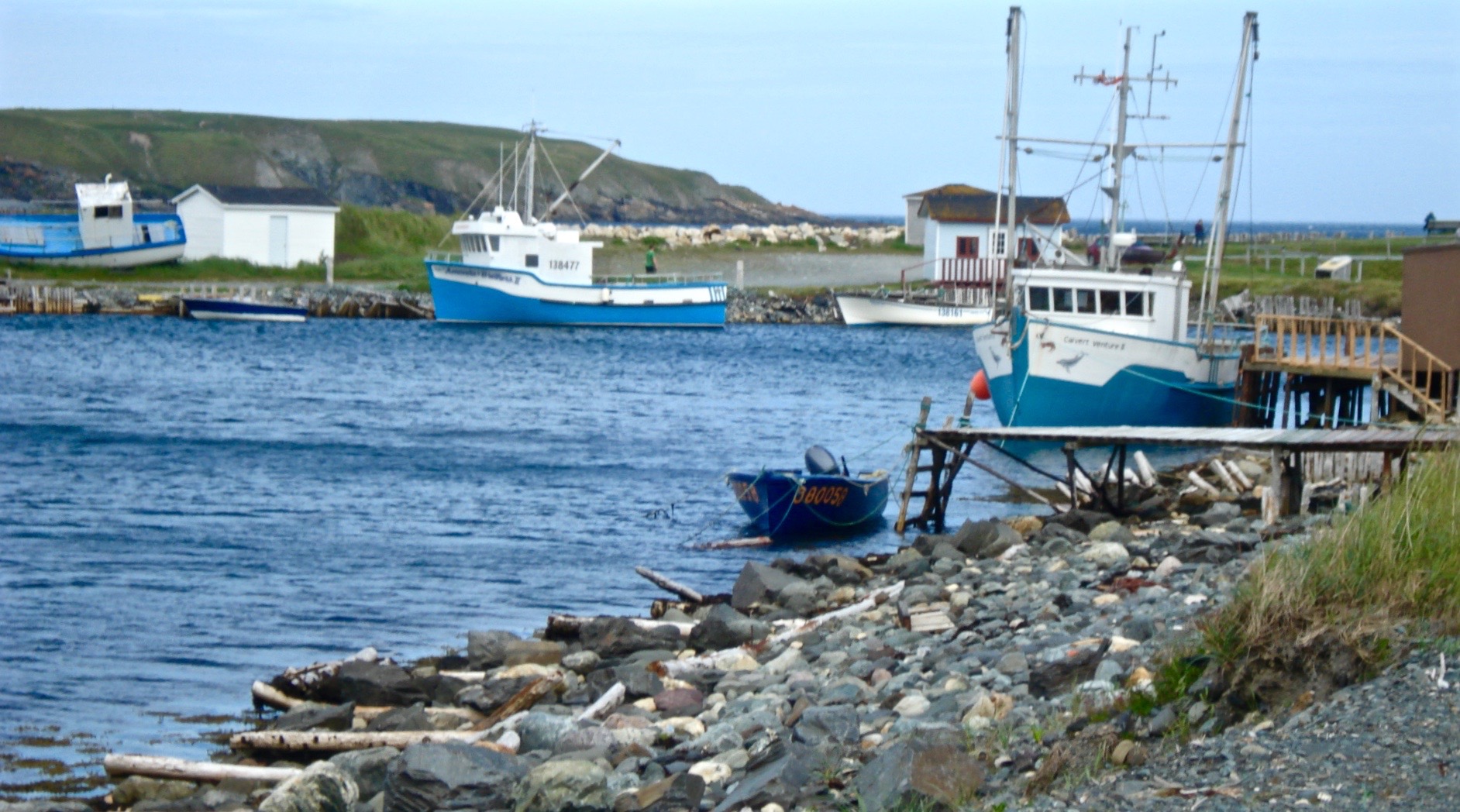
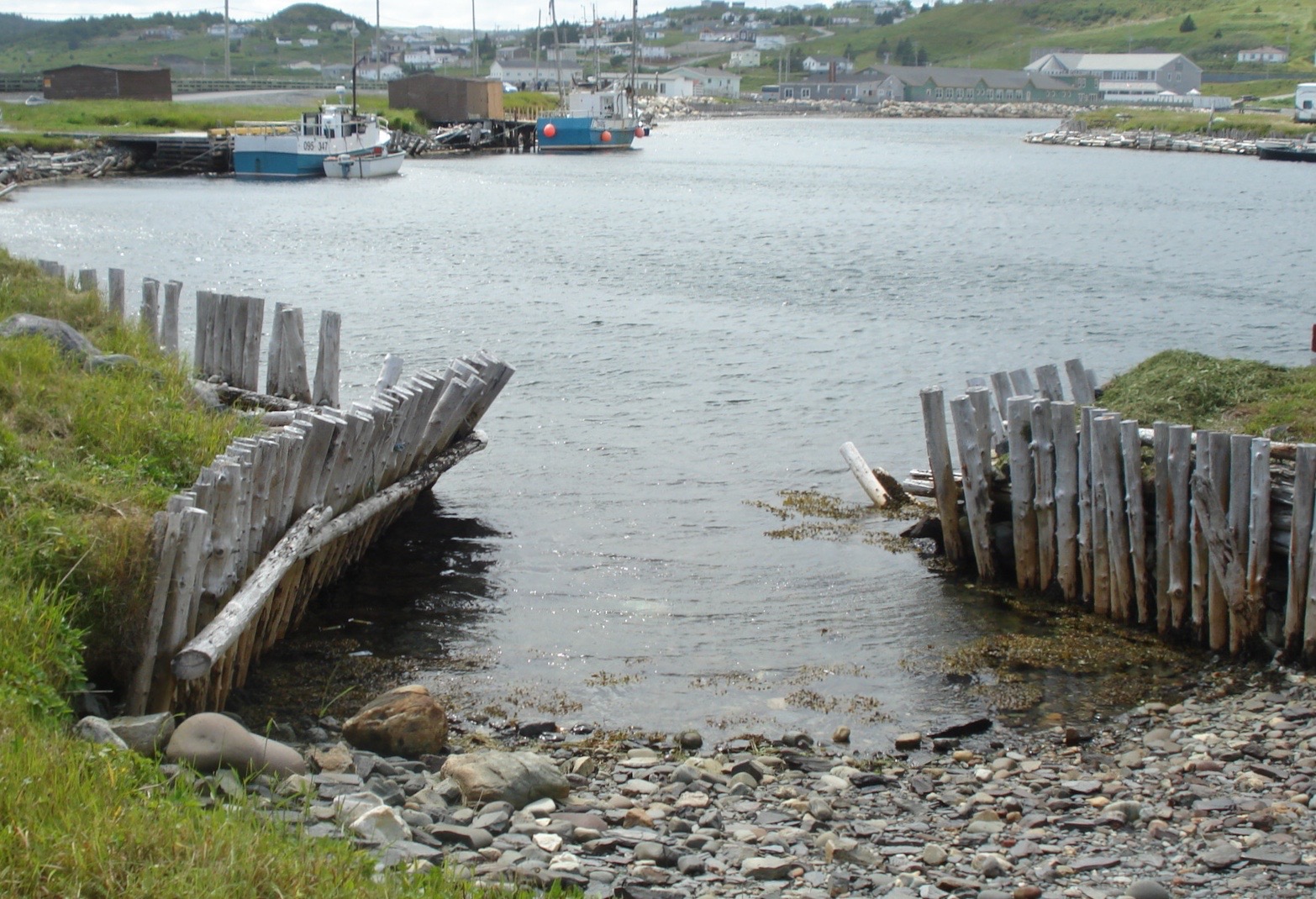
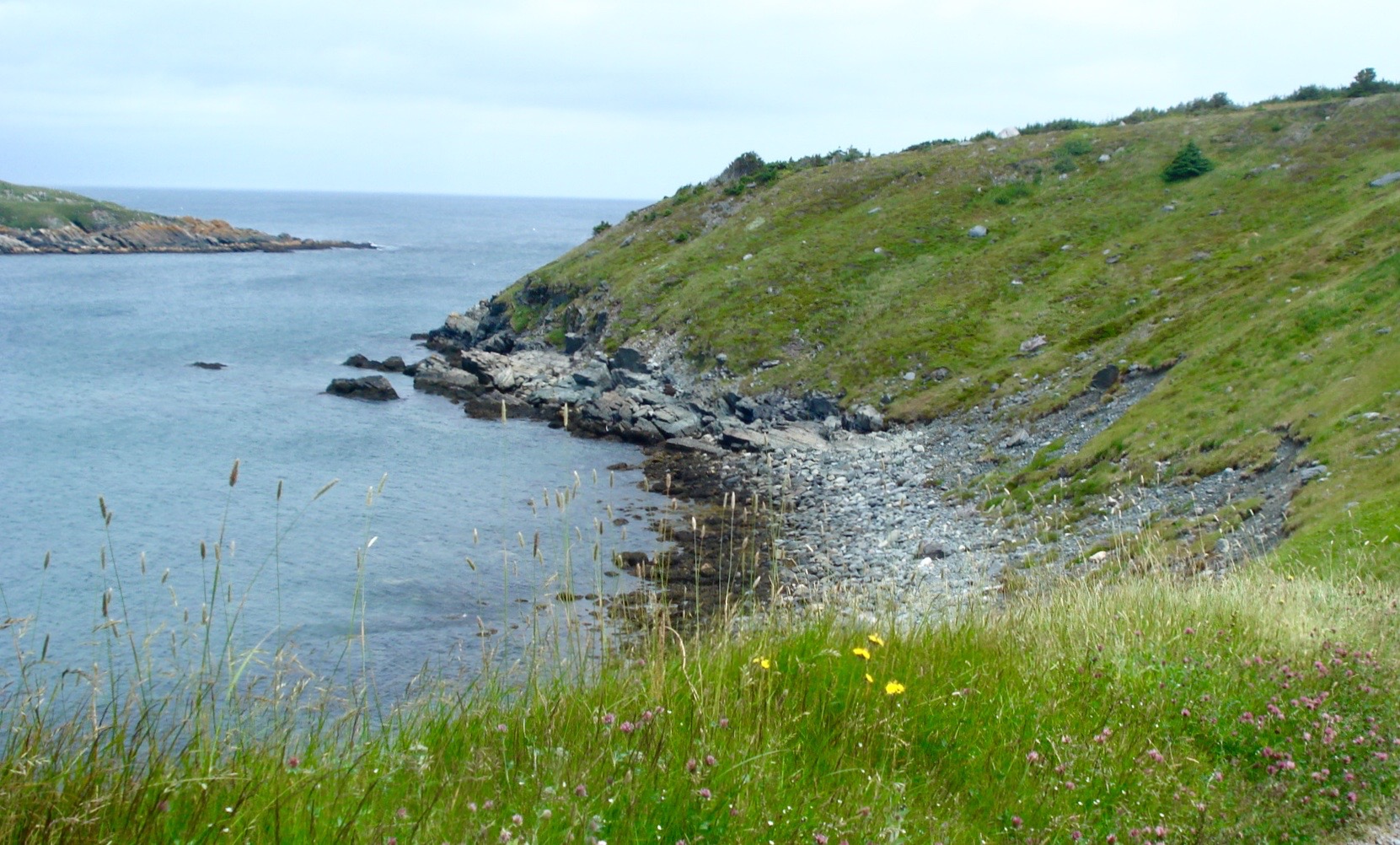
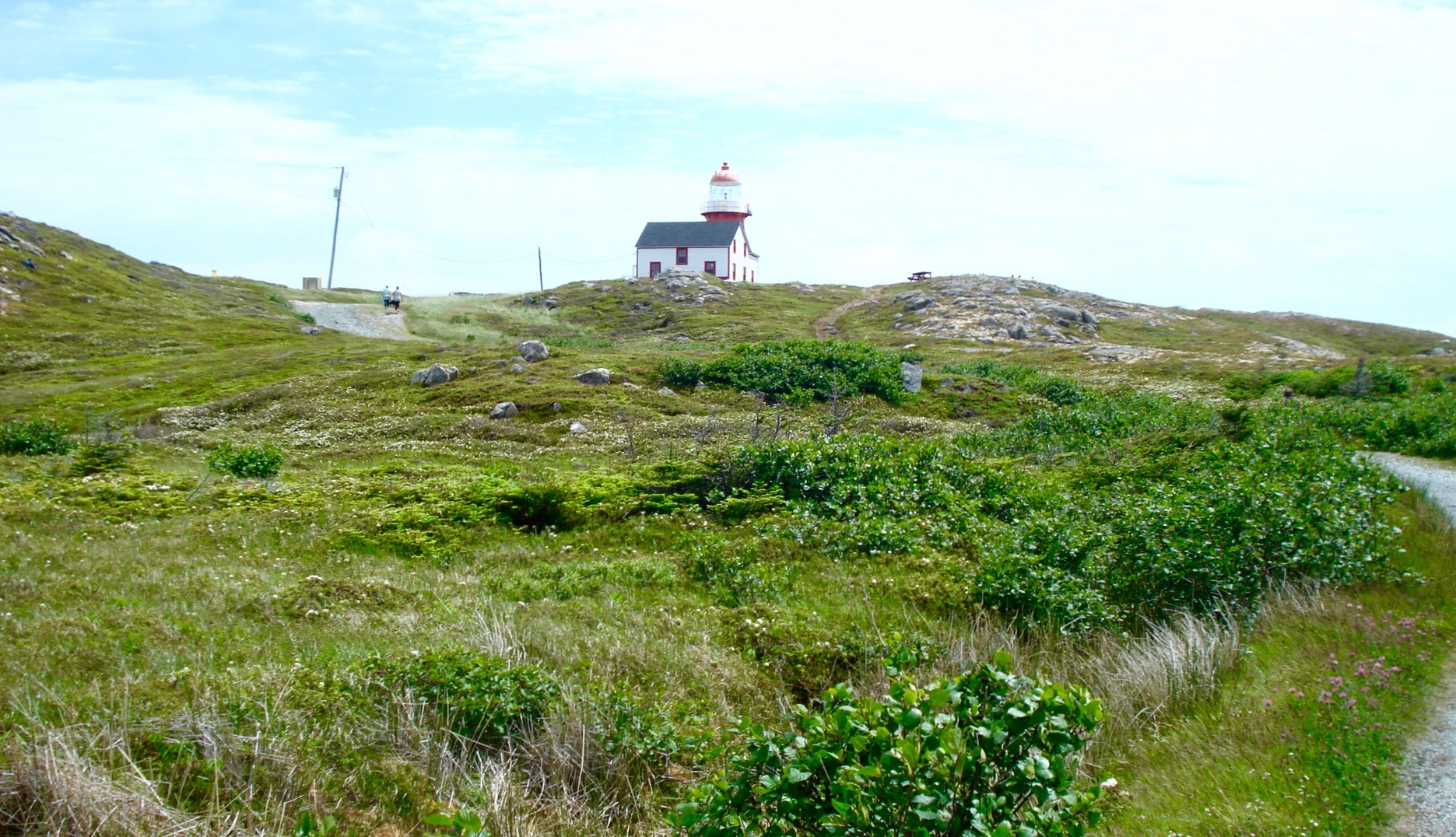
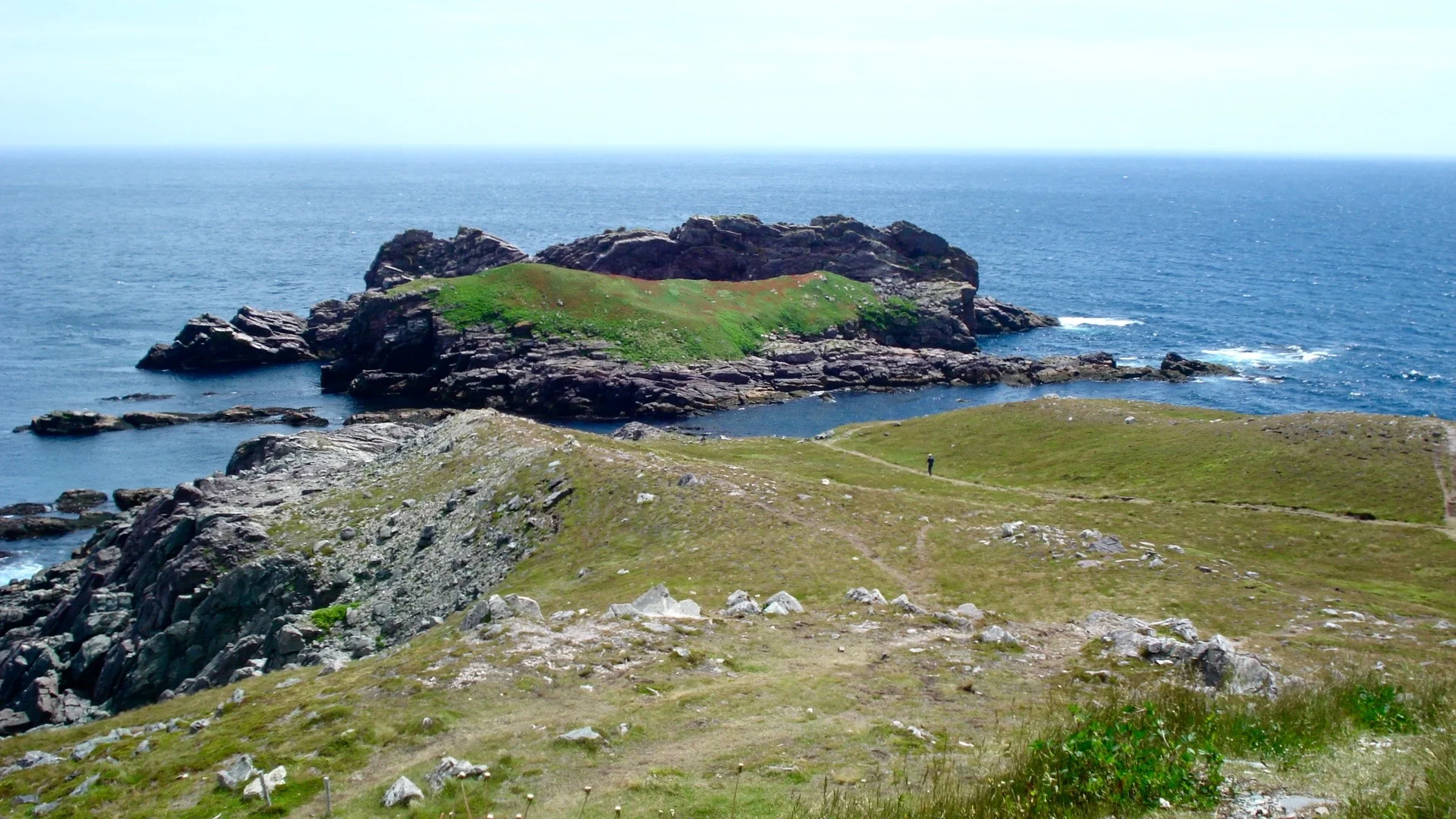
For our second foray away from St. John’s, we traveled first around Conception Bay, west of St. John’s, through the small fishing villages of Holyrood and on to Brigus and then Cupids, where the oldest (1610) English settlement had existed. In Brigus, Beth changed her mind. This was now the place she wanted to live, and this time she actively talked about buying a summer home. It was that charming and idyllic. We toured Captain Bob Bartlett’s old home. He had been a famous explorer, best known for taking Perry to the North Pole. We saw the tunnel cut through the cliff so that the sea captains could unload their catches from the harbor onto horse drawn wagons in the tunnel and not have to make the trek around the cliffs. The town was known to hold several festivals each year, and we came to the conclusion that people did indeed have summer homes here, scattered around on the slopes and cliffs surrounding the harbor and on the gentle slope up into the main downtown area. Keep in mind that when I say “downtown” I am talking about a small fishing village, now turned into heaven on earth. This was my favorite town on our trip.
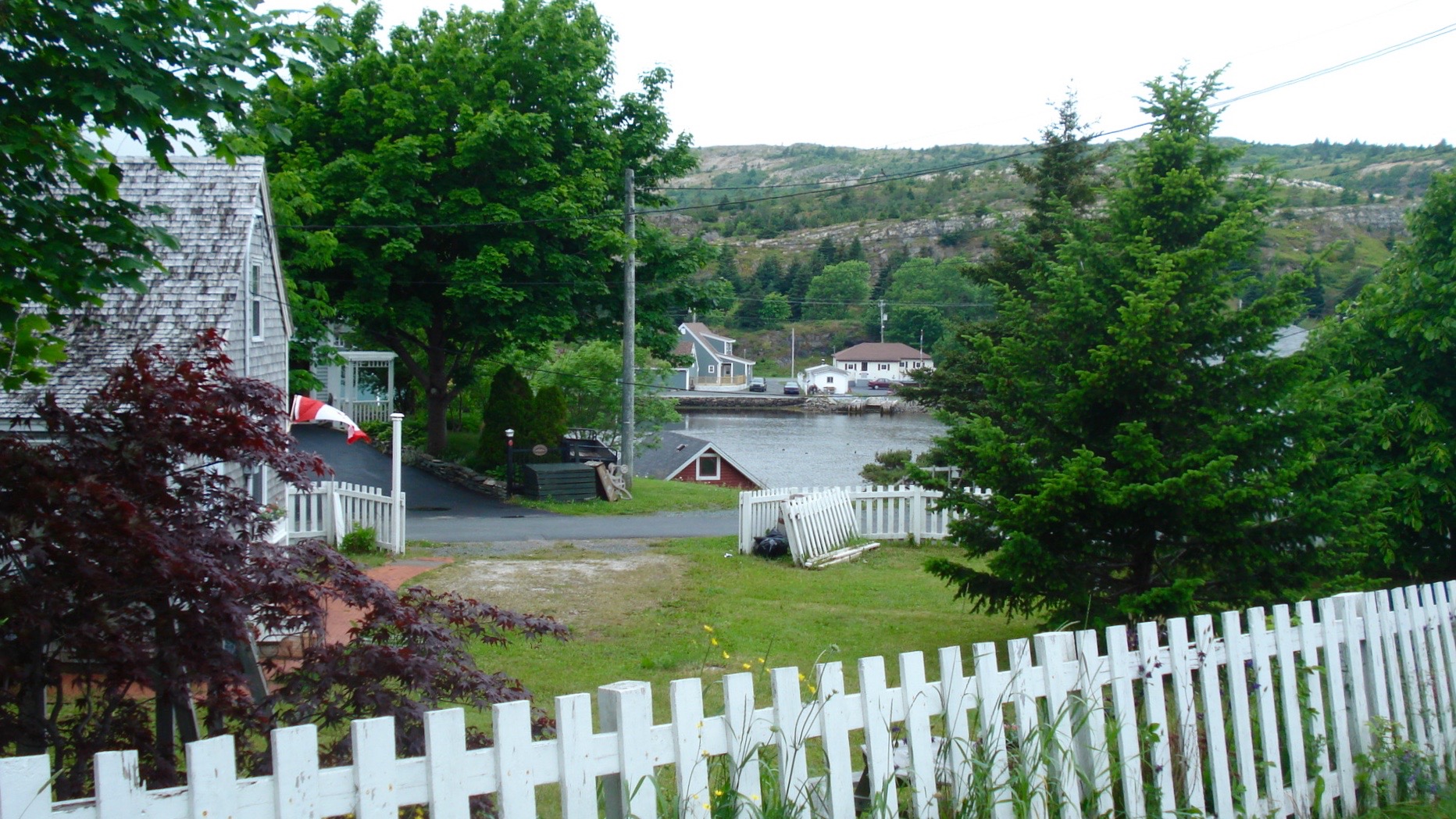
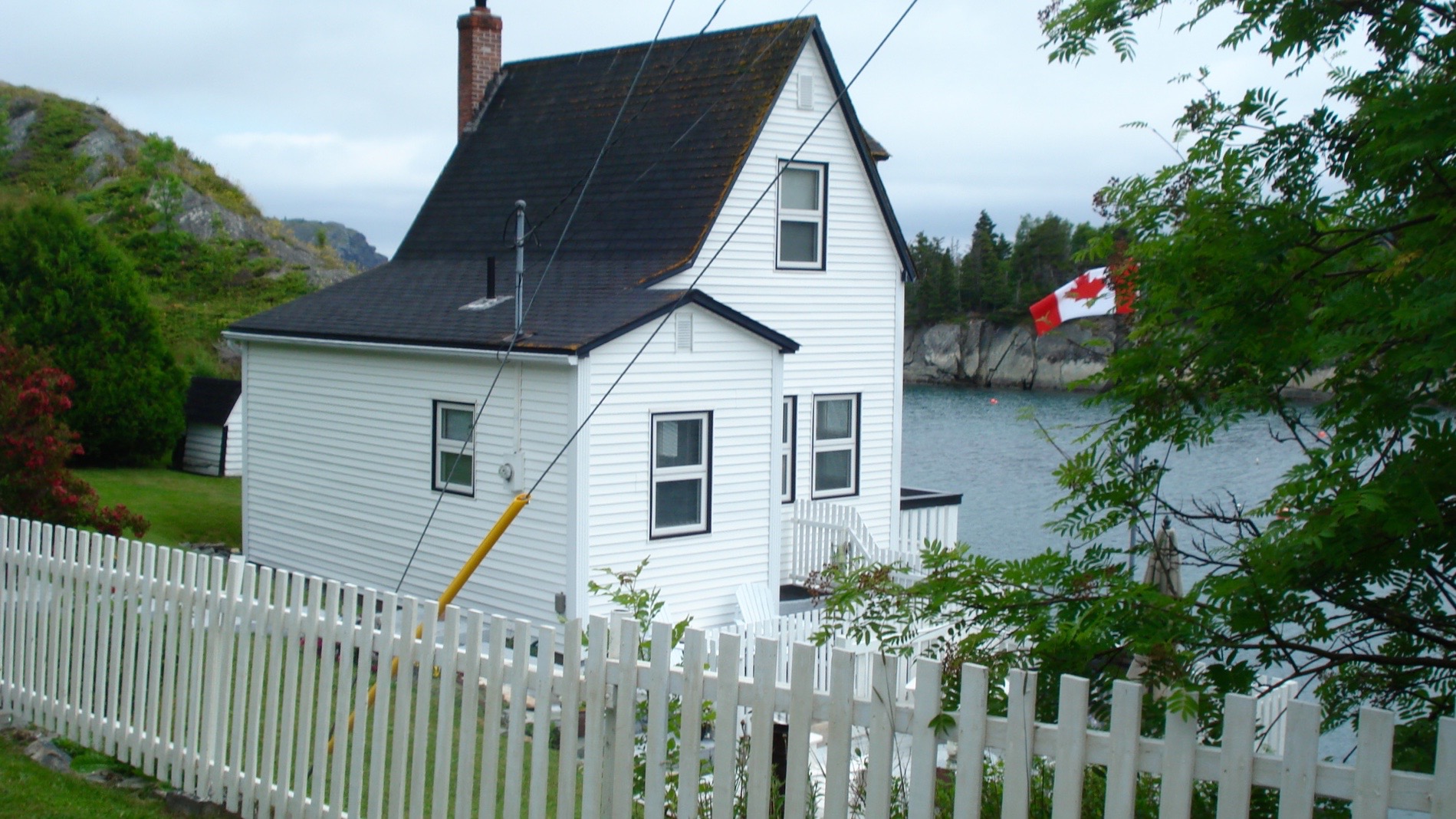
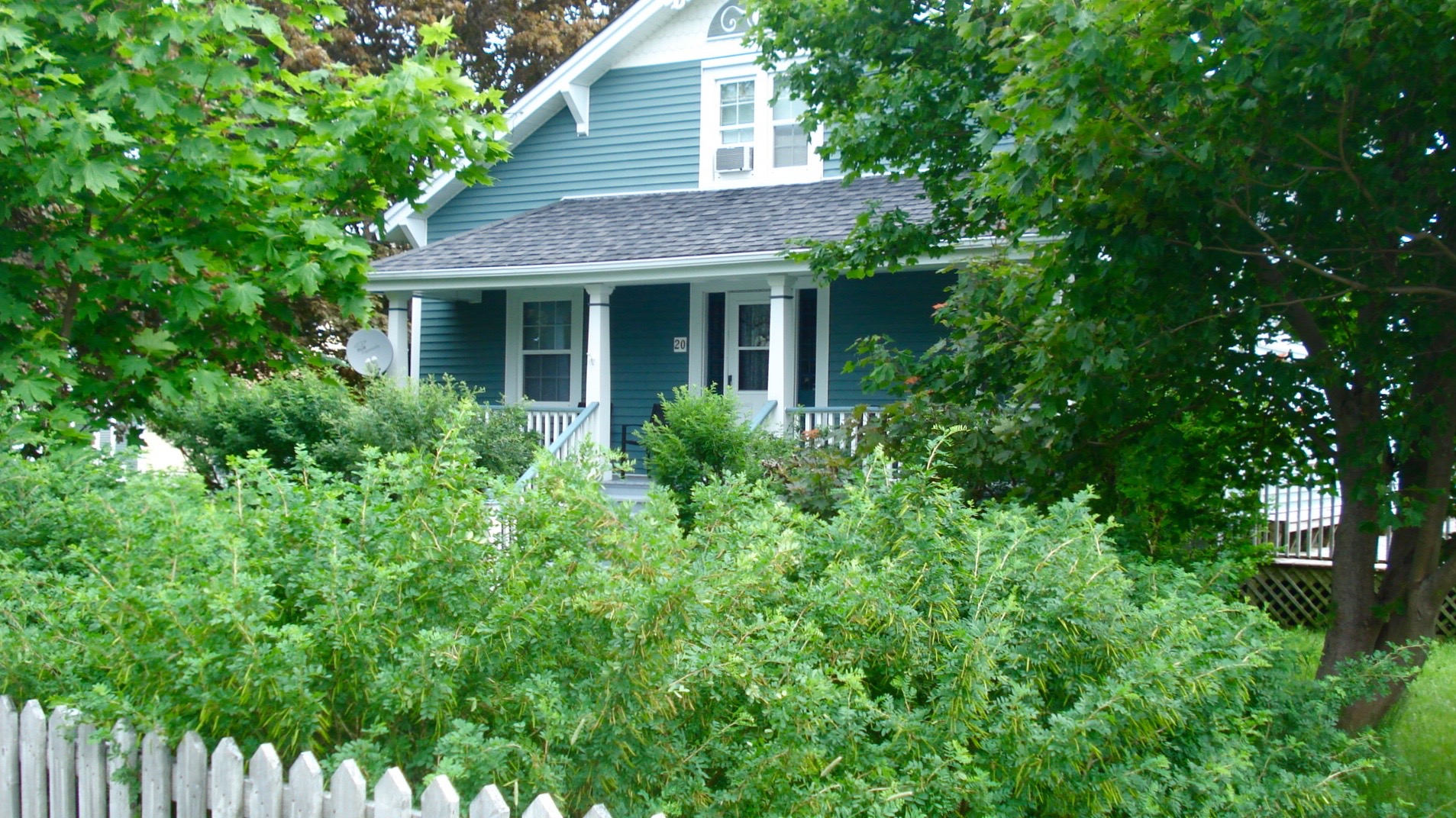
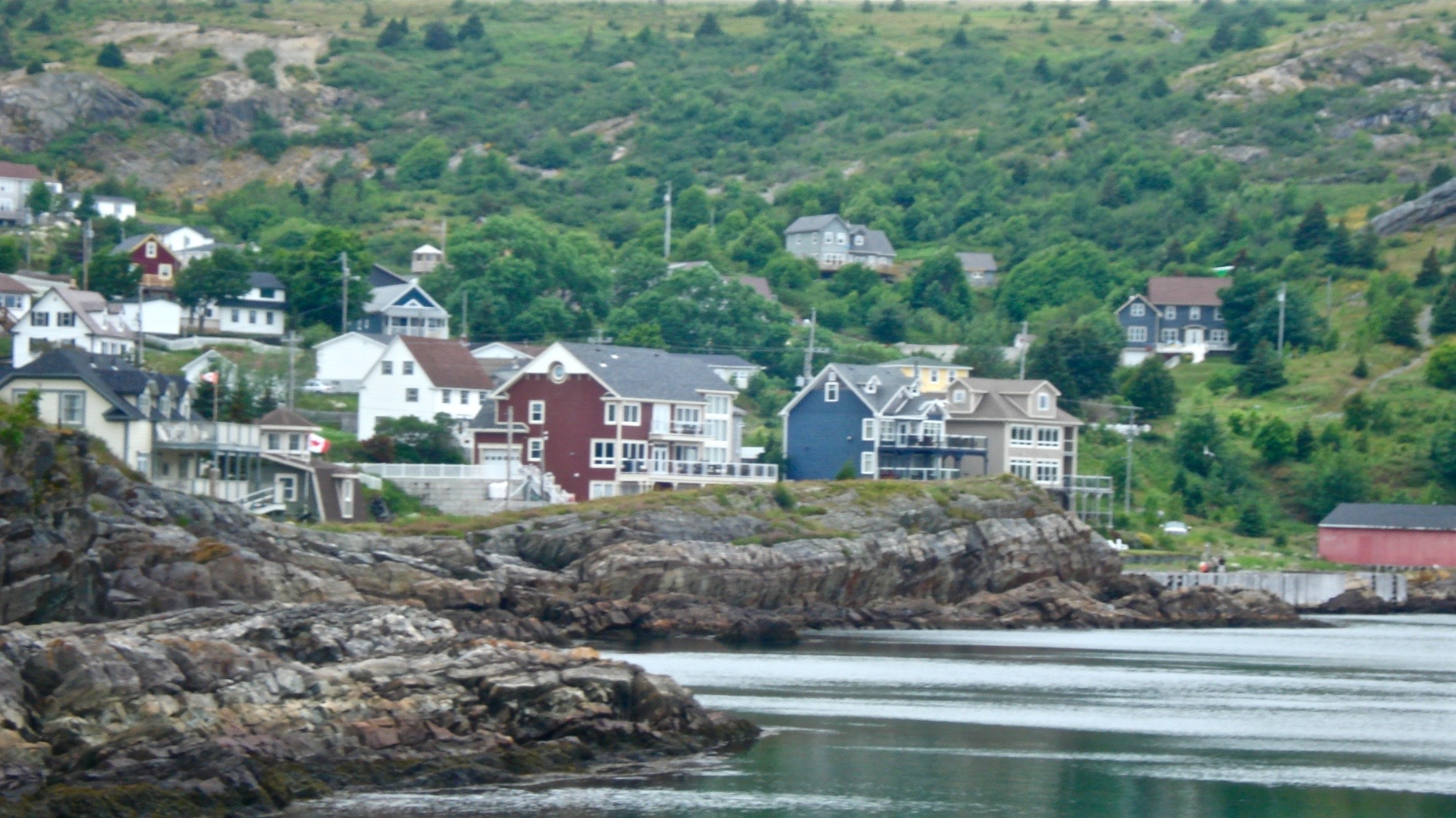
We then traveled on north, around Trinity Bay and on up the Bonavista Peninsula. We stayed for two nights in a Bed and Breakfast in the town of Trinity, and you guessed it, now Beth said she had updated her decision—Trinity was where she wanted to live. Like the other towns, the homes of Trinity were spread out but all within short walking distances of each other. These homes were painted bright colors with bright trims, reminiscent of the colors of St. John’s. We had a wonderful cod dinner here right on the water and attended a delightful play at a summer playhouse. We wandered around the town in the evenings, and, during the days, we drove up to other towns on the Peninsula.
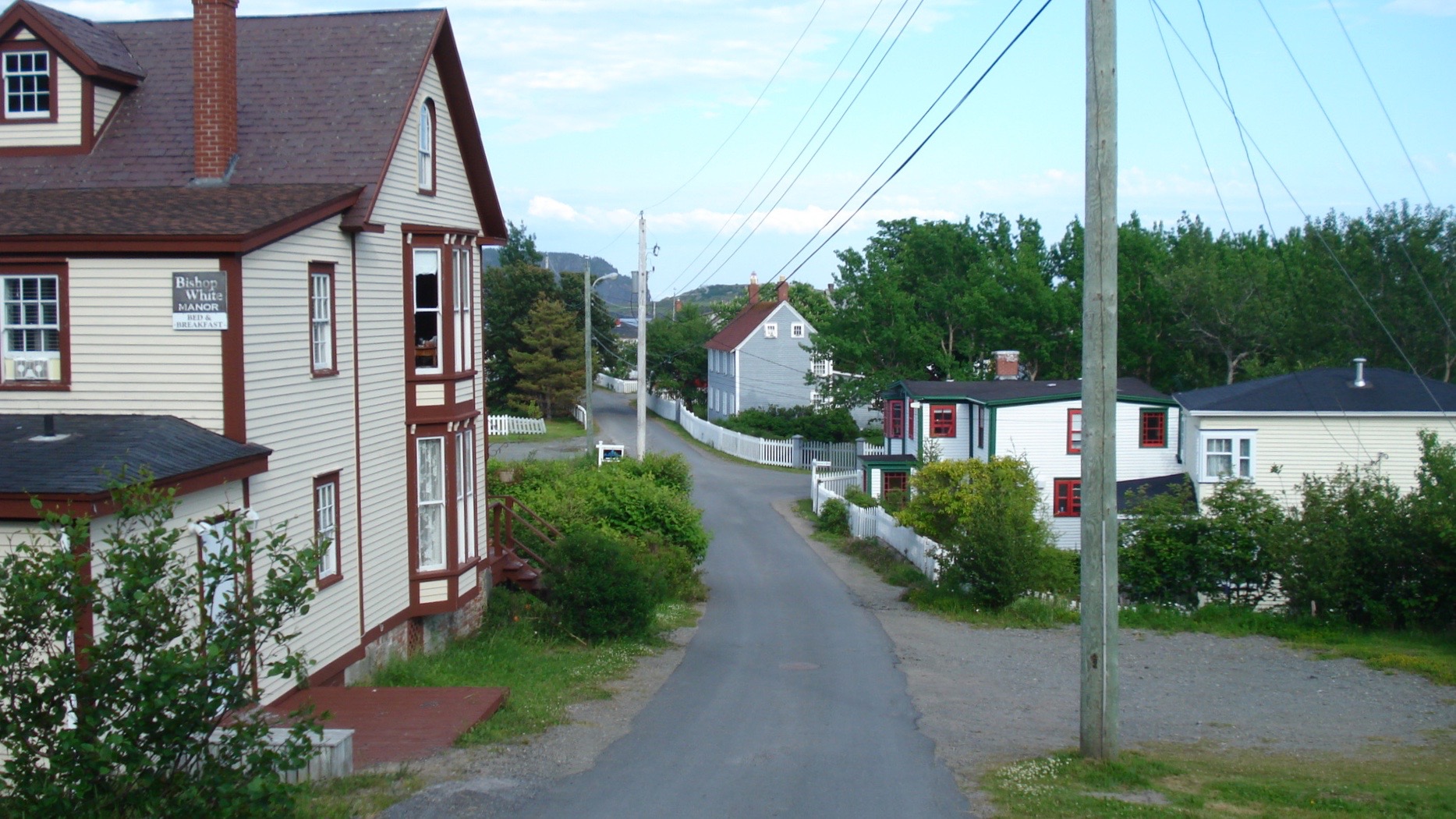
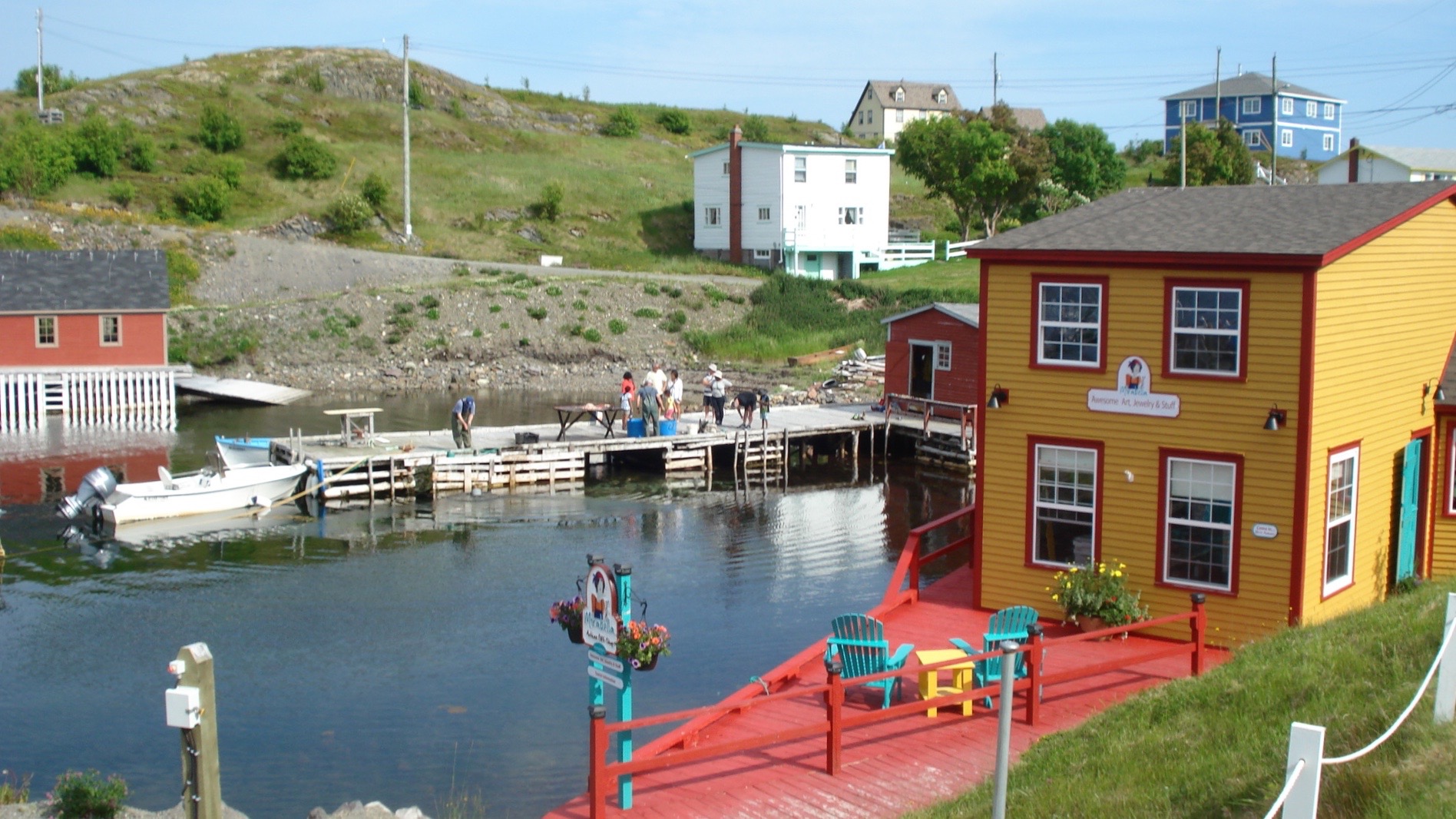
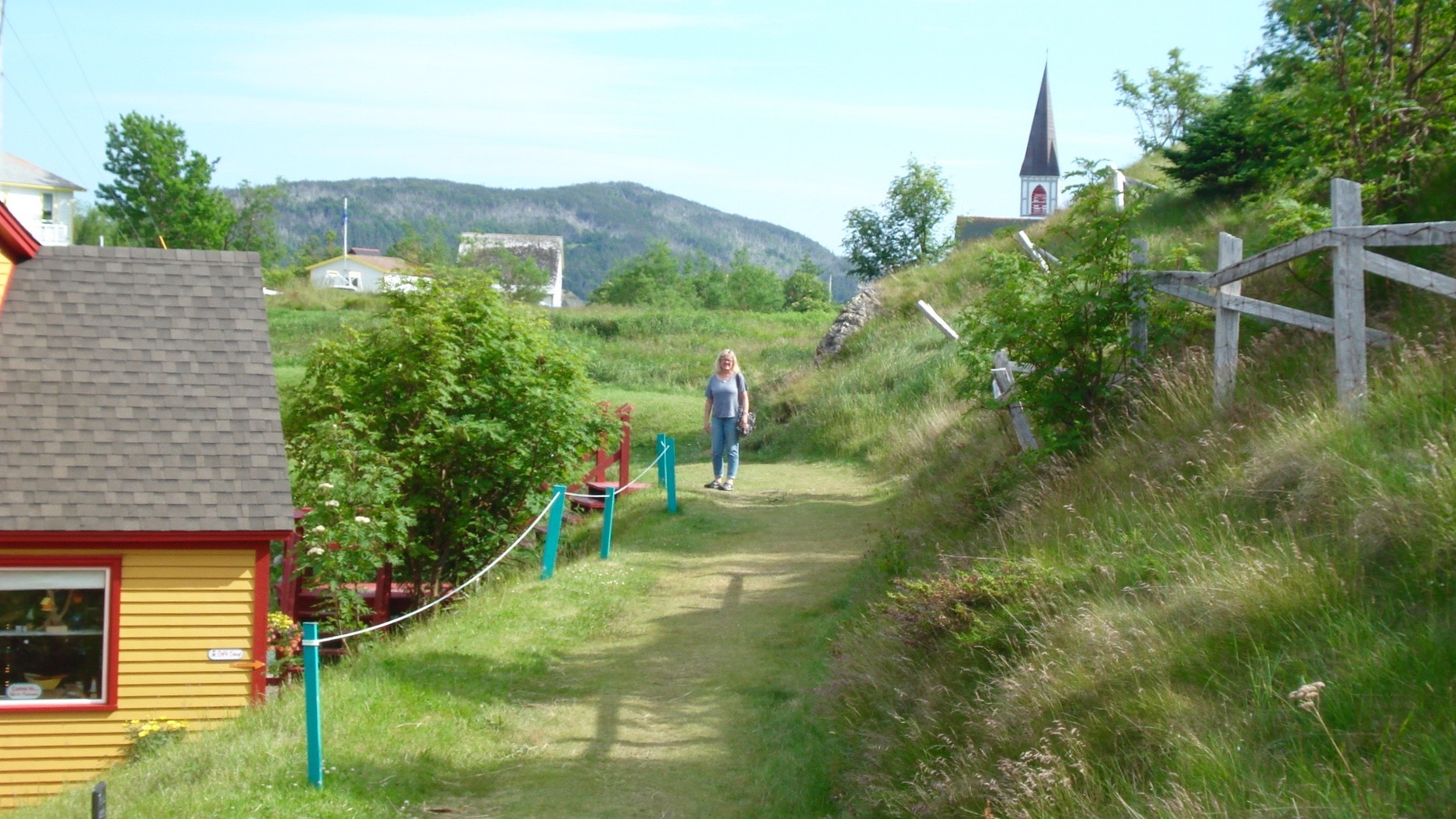
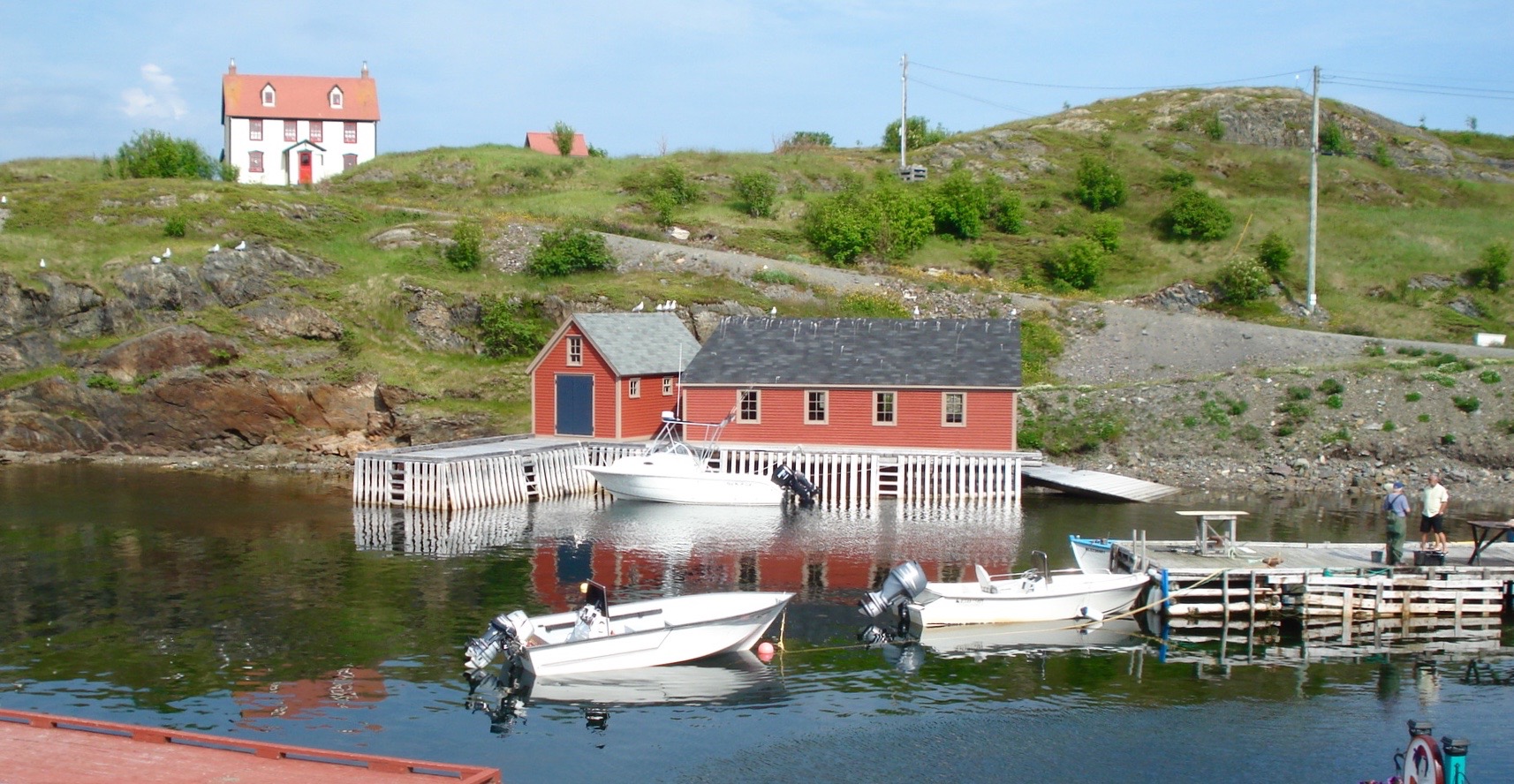
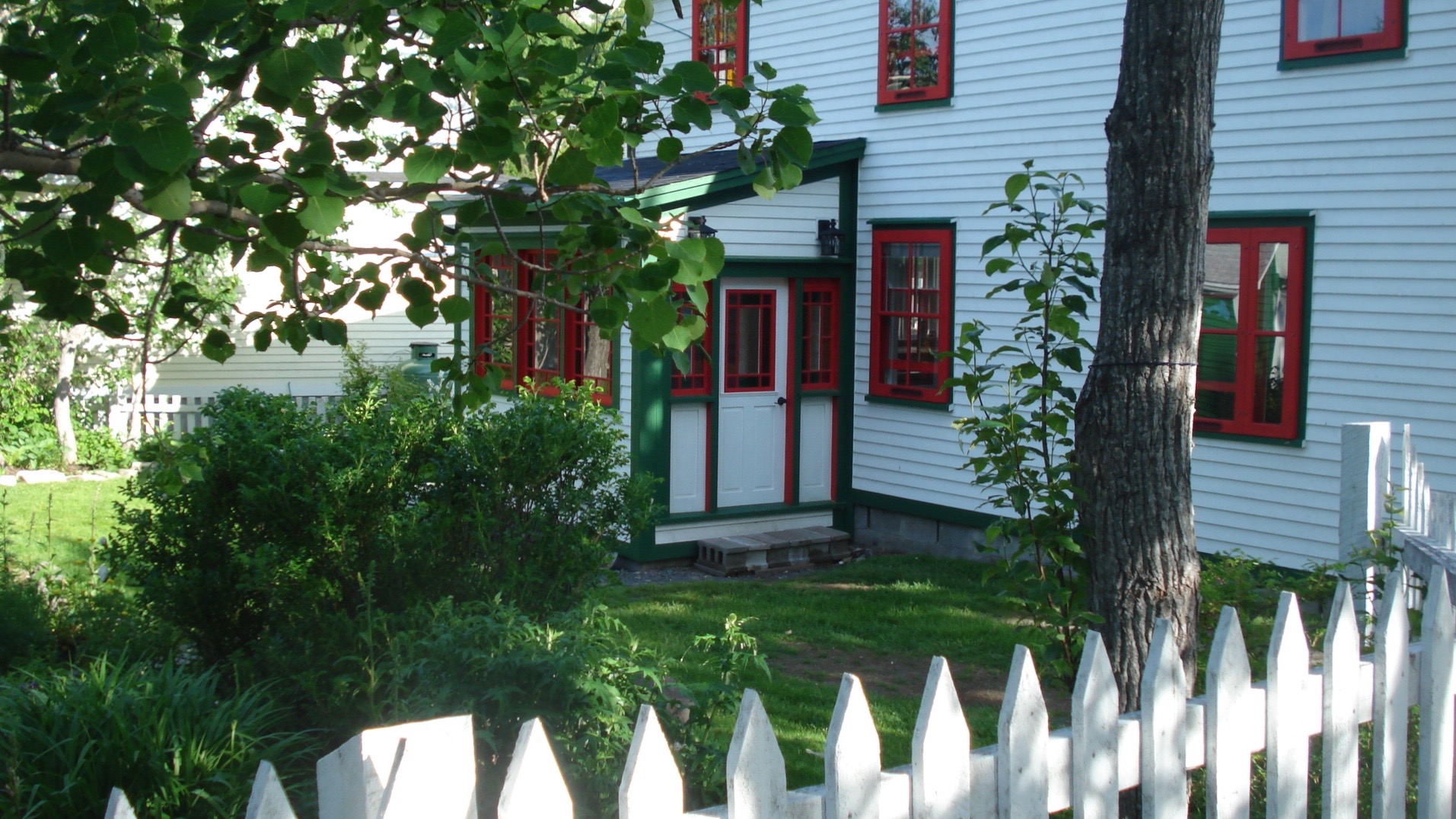
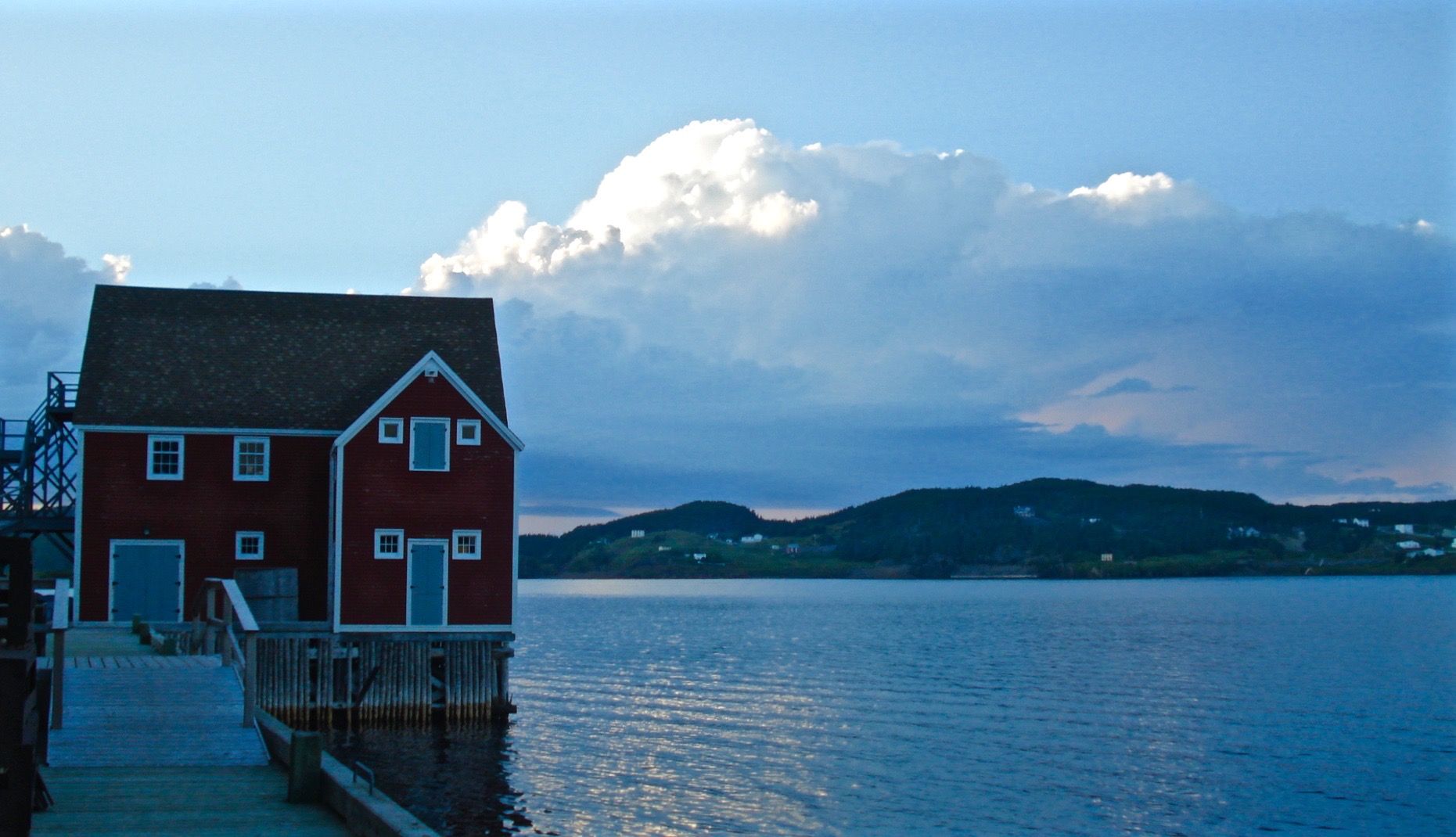
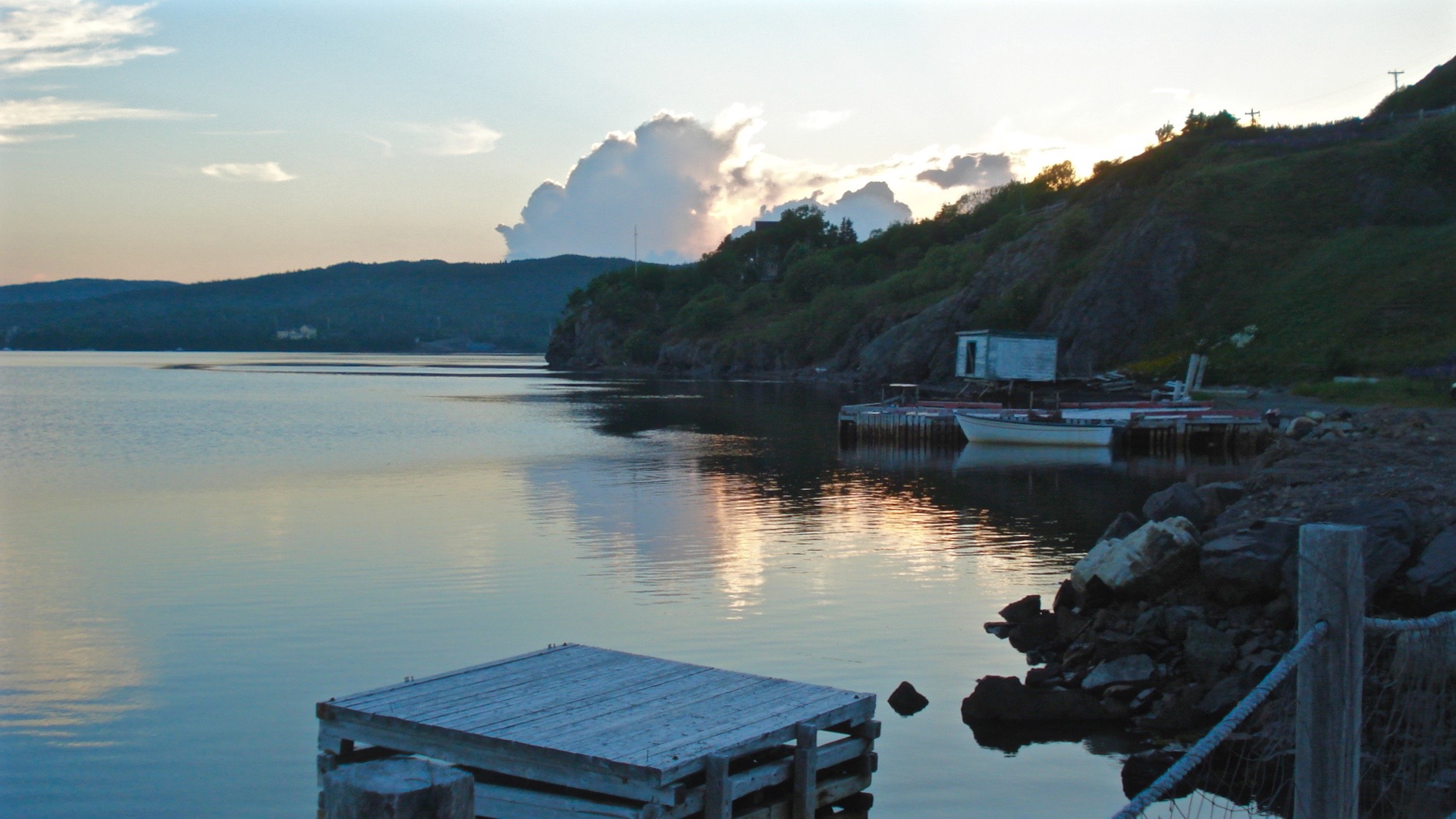
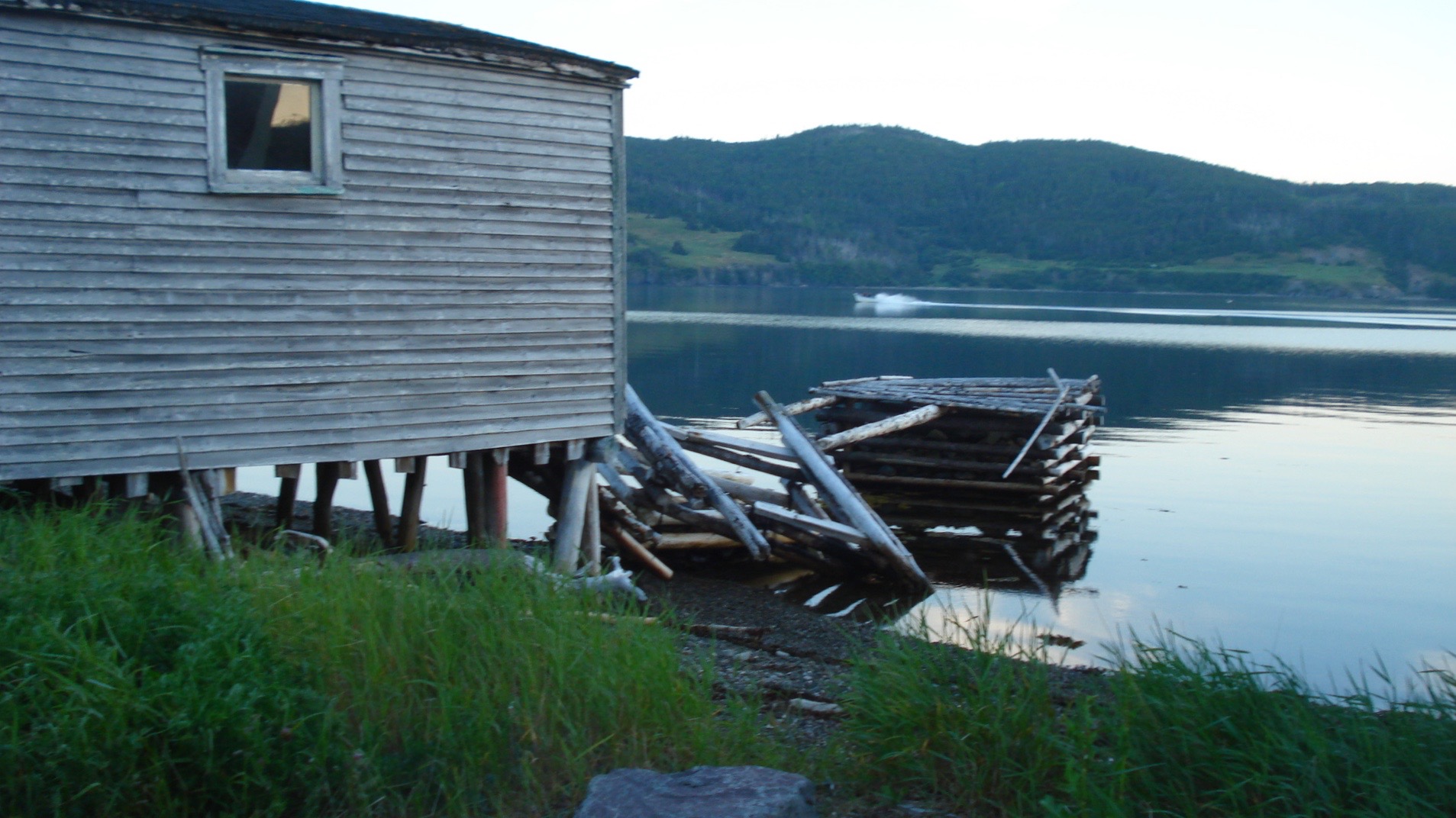
We visited the houses of an old cod processing plant in the town of Bonavista; we visited the town of Union Point where the poor fishermen had first unionized to obtain better pay from the owners of the cod businesses; and we visited Elliston, which has the dubious distinction of being the root cellar capitol of the world—simply put, every home has a stone root cellar built into the hills around the house. We also learned about the seal hunting industry that got underway as cod fishing was in decline. Now that job of seal hunting was particularly dangerous, with more men lost at sea or on the ice than in the fishing business. And it disturbed me because the hunting method was to club to death baby seals, all for the fur for wealthy individuals. Some people up there still argue for its existence and engage in seal hunting, and seal-skin products are still for sale. But when I see them I think--baby seals killed for an unnecessary luxury.
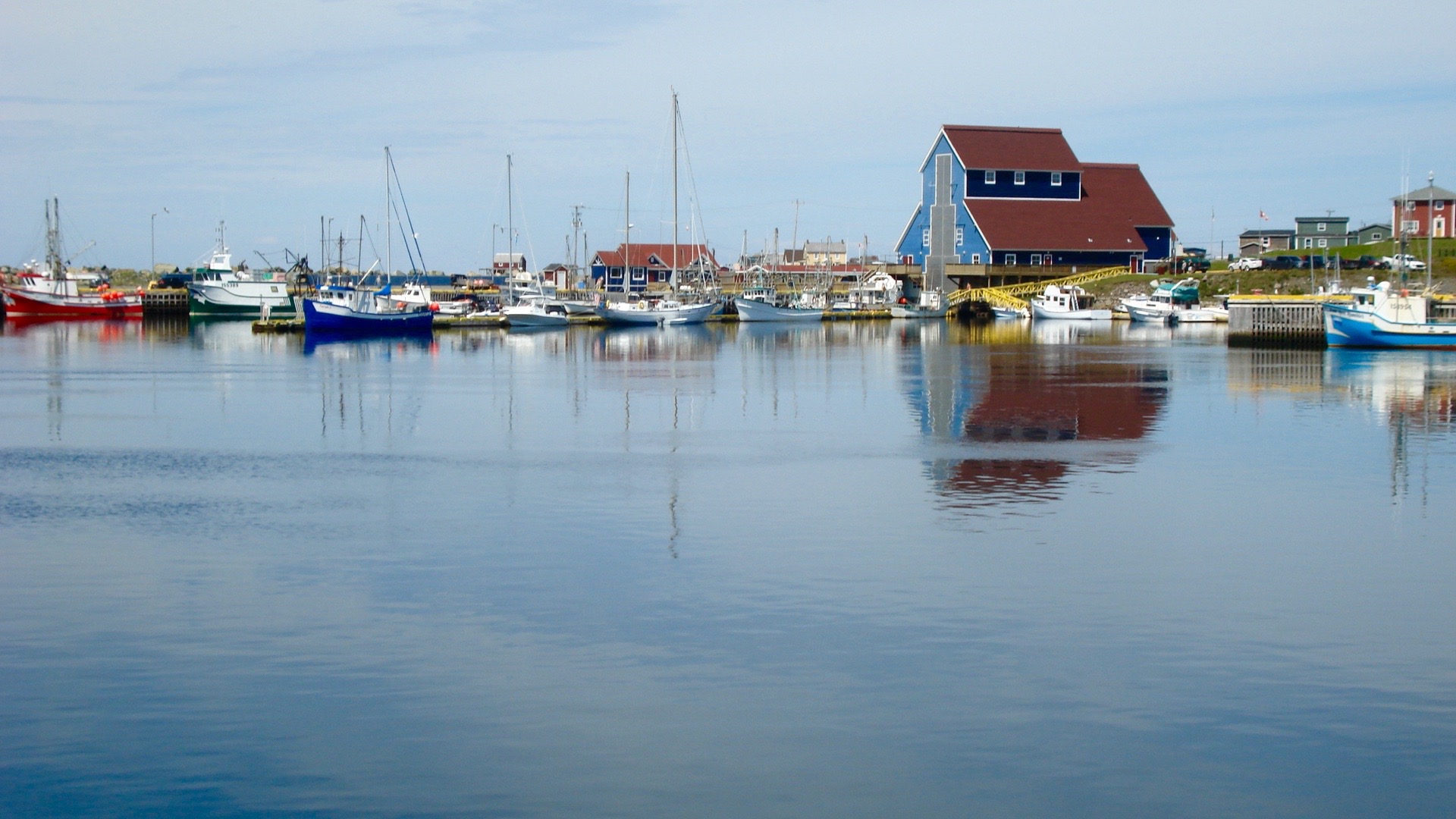
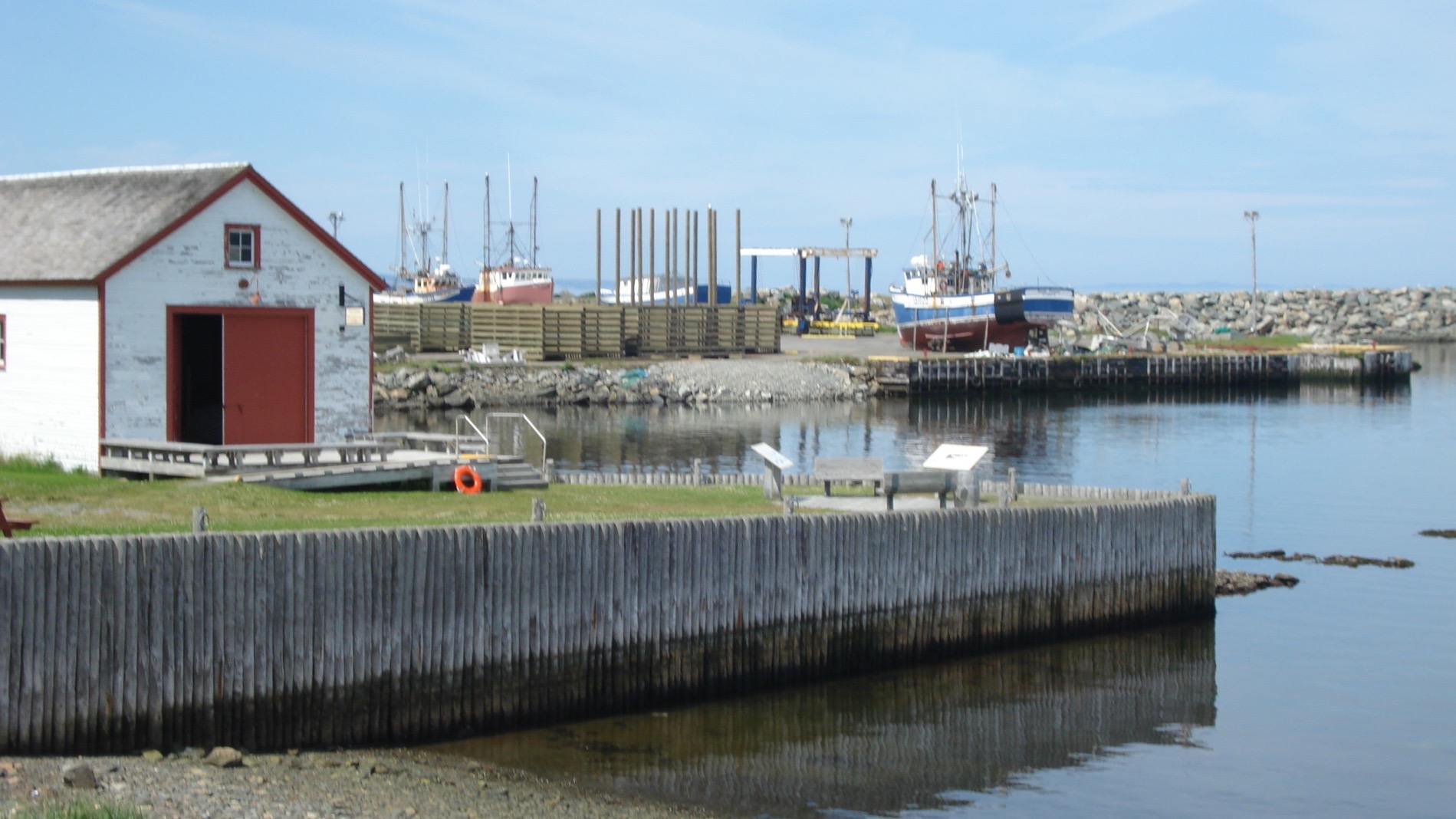
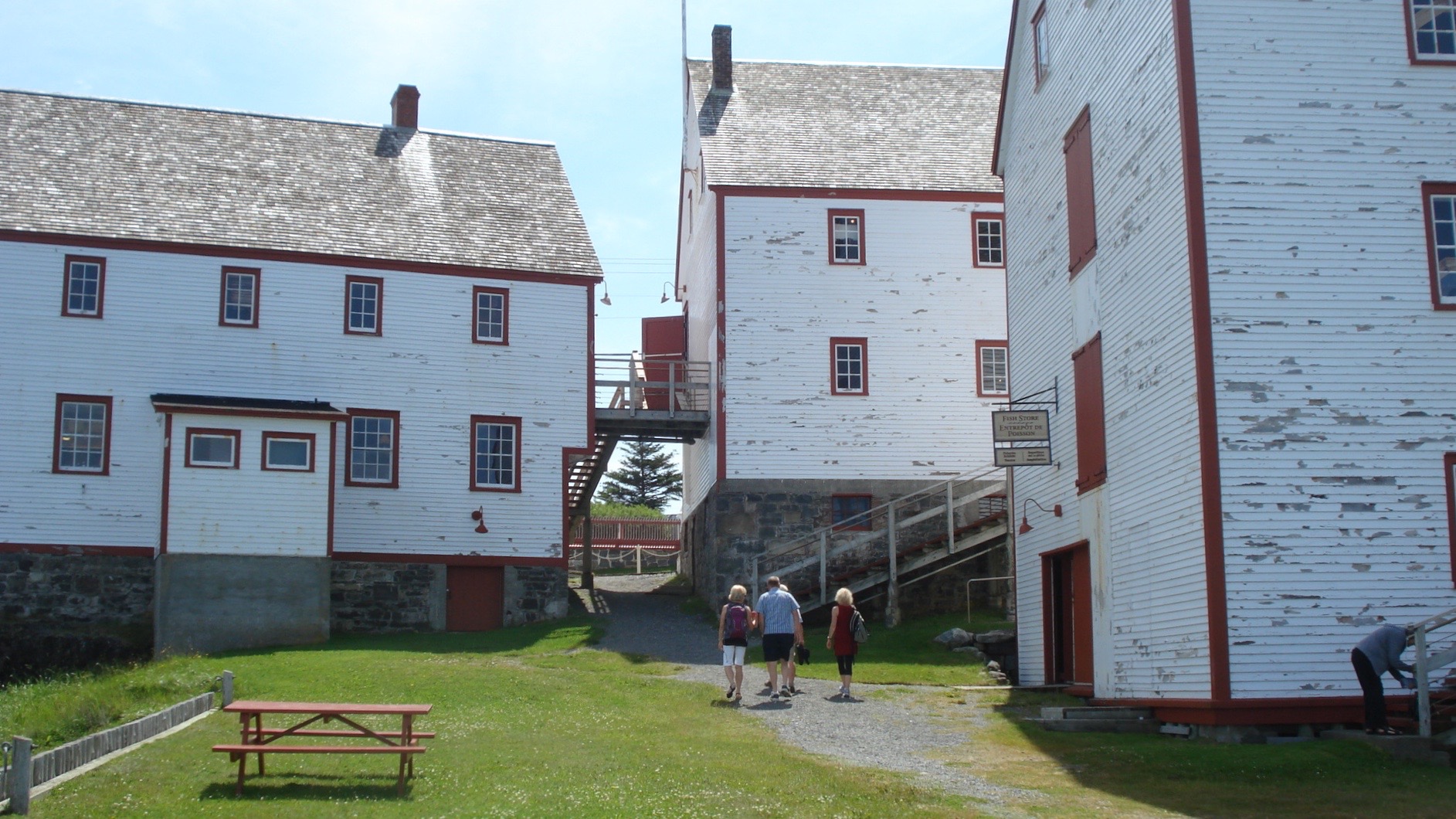
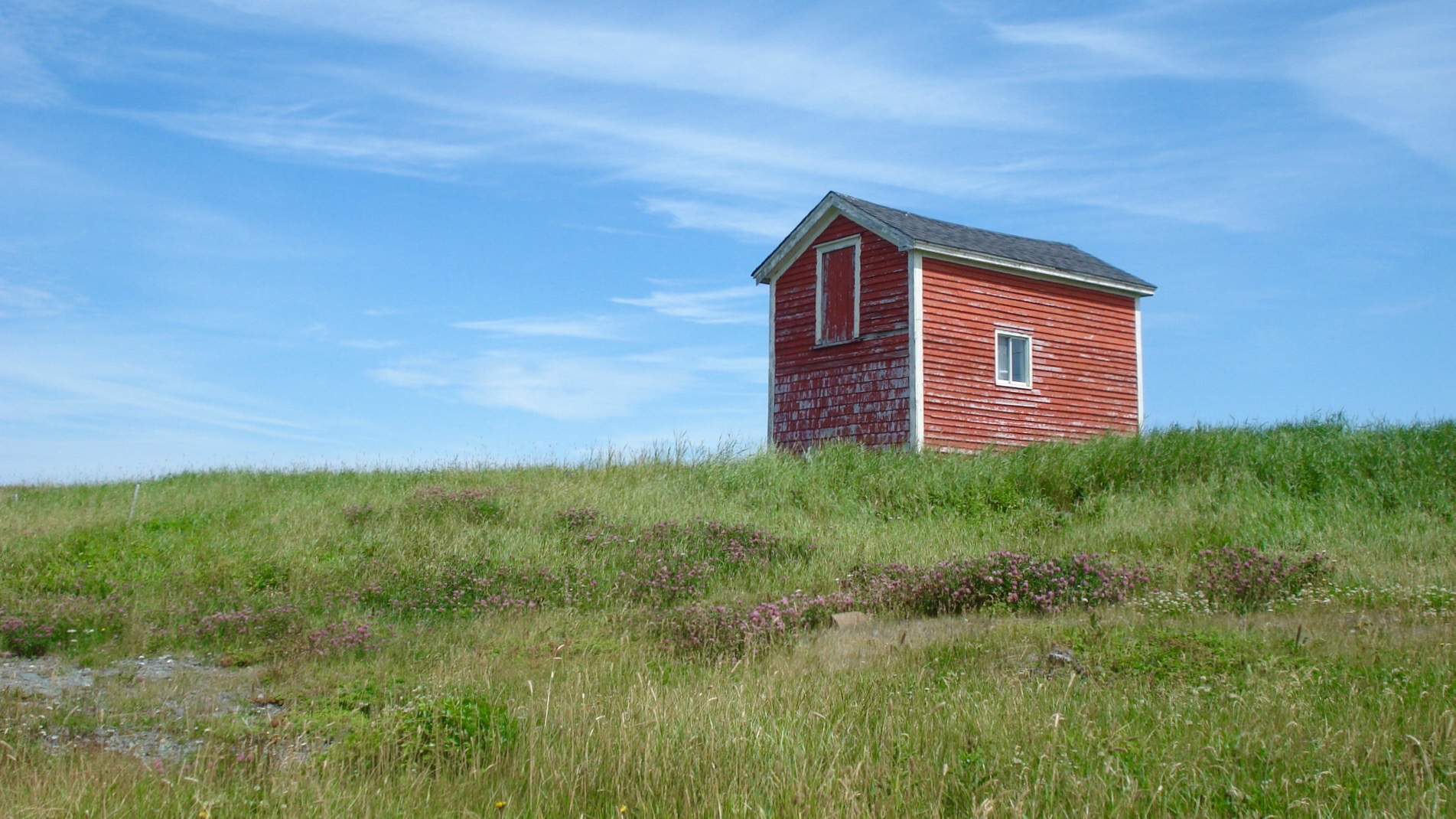
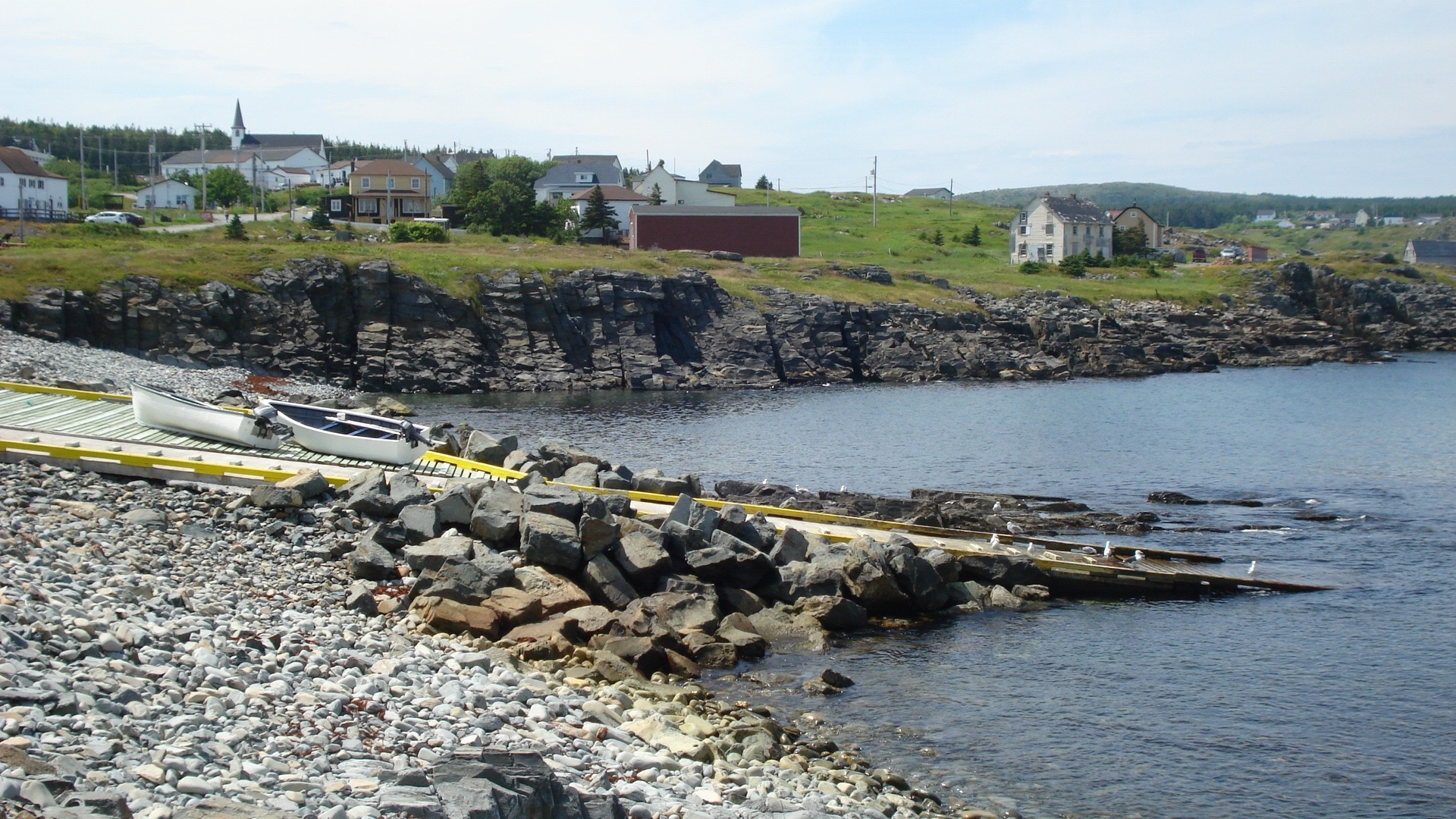
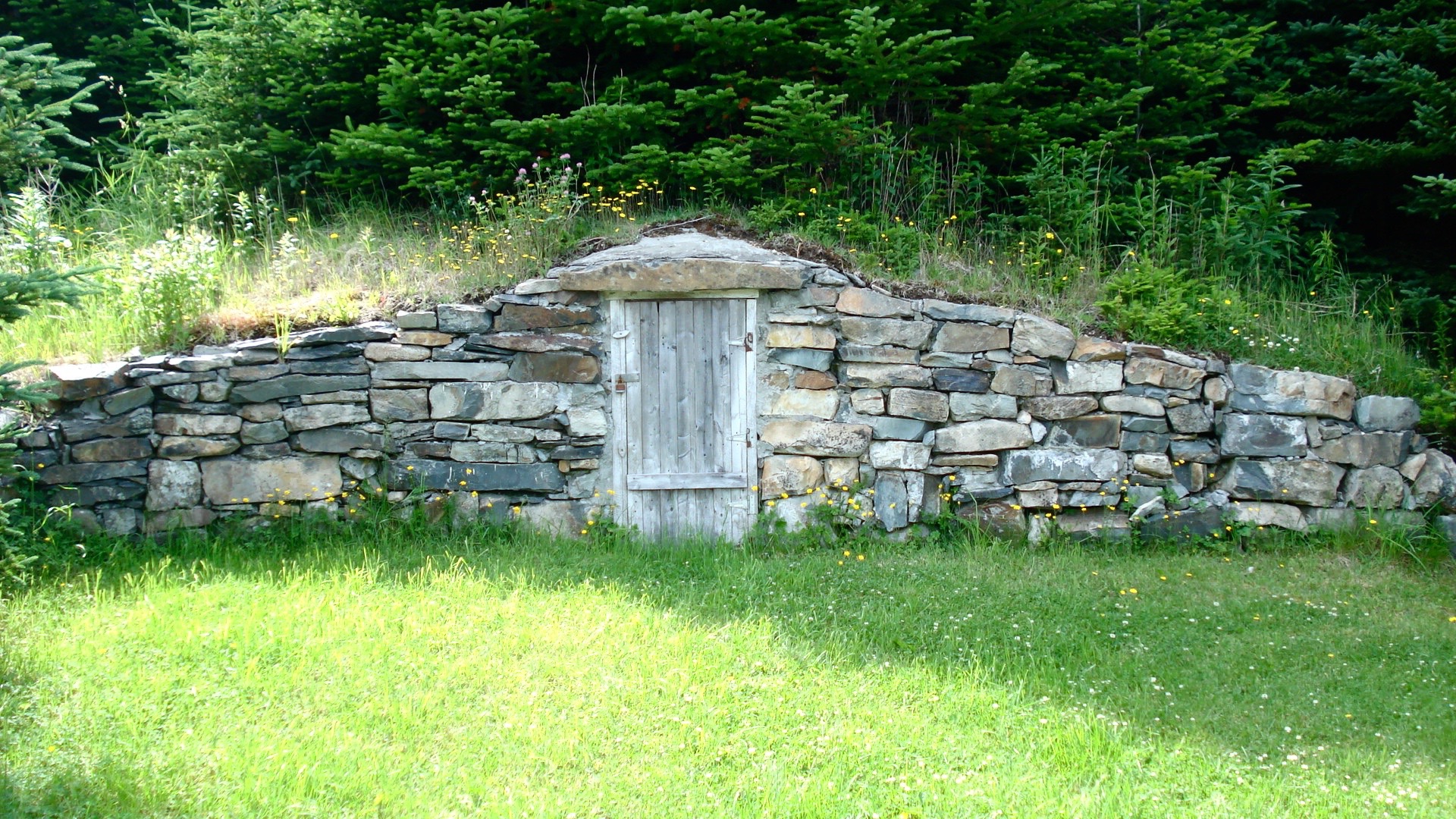
The most beautiful point was around the lighthouse at the end of Cape Bonavista, situated as it was in sheer cliffs over blue green water and with yet another puffin rookery just off shore on some island cliffs. The land leading to the cliffs at lands end sported wild irises, myriad flowers and grasses, and rain pools cut into the rocks and soil. The sea and coastline was enveloped in mist and fog, but the cliffs and grasslands were sunny and crispy clear.
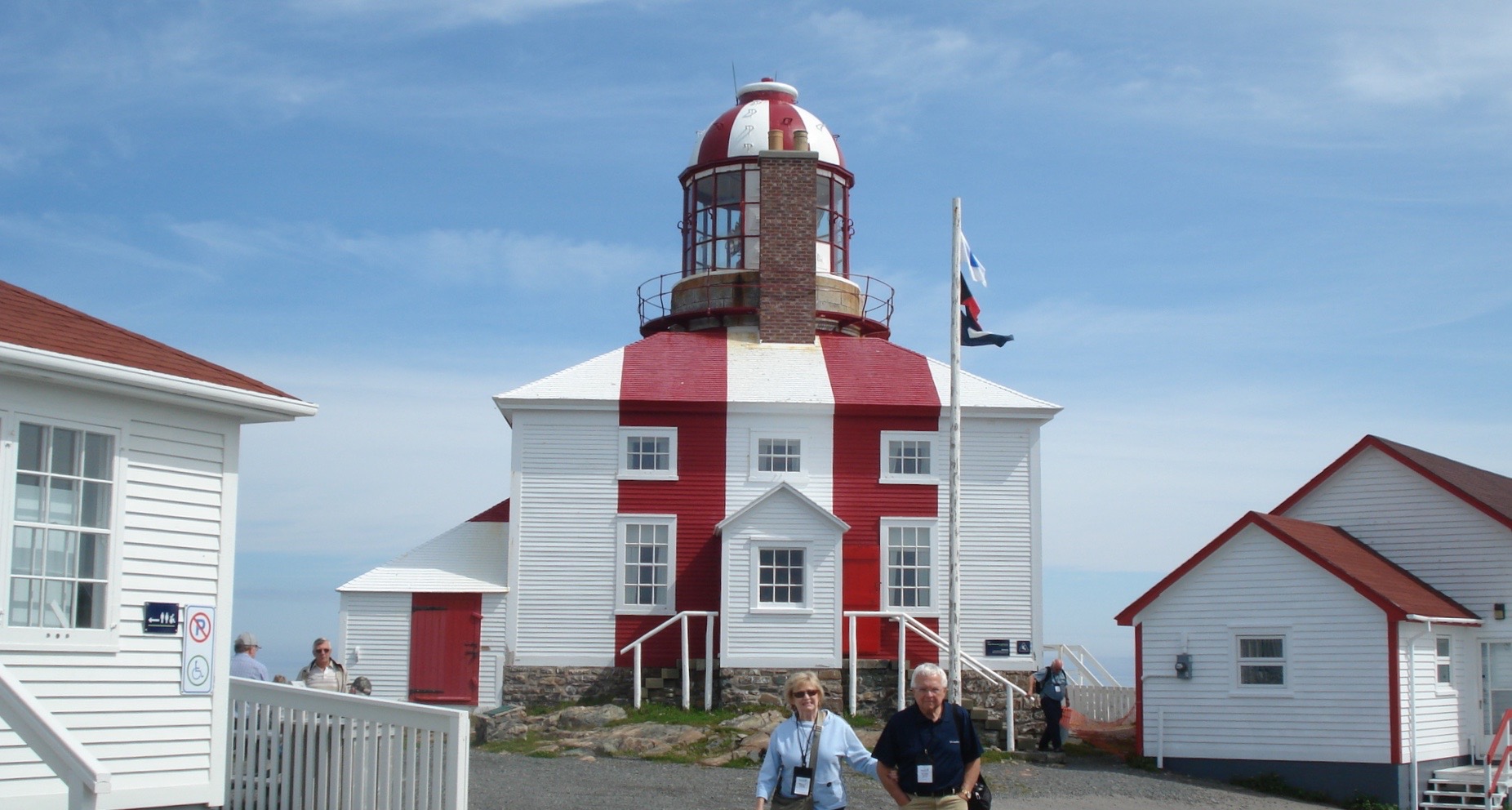
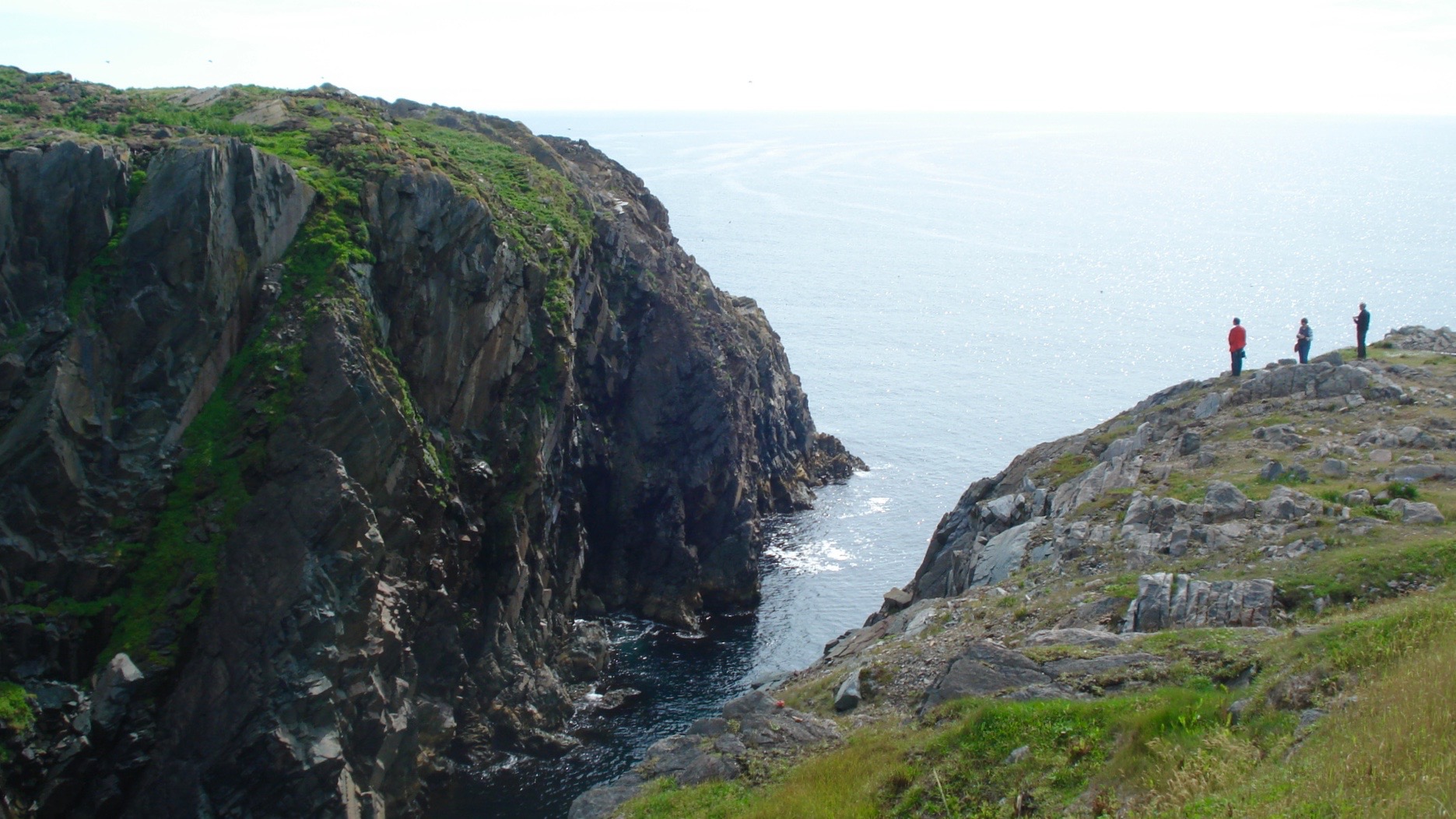
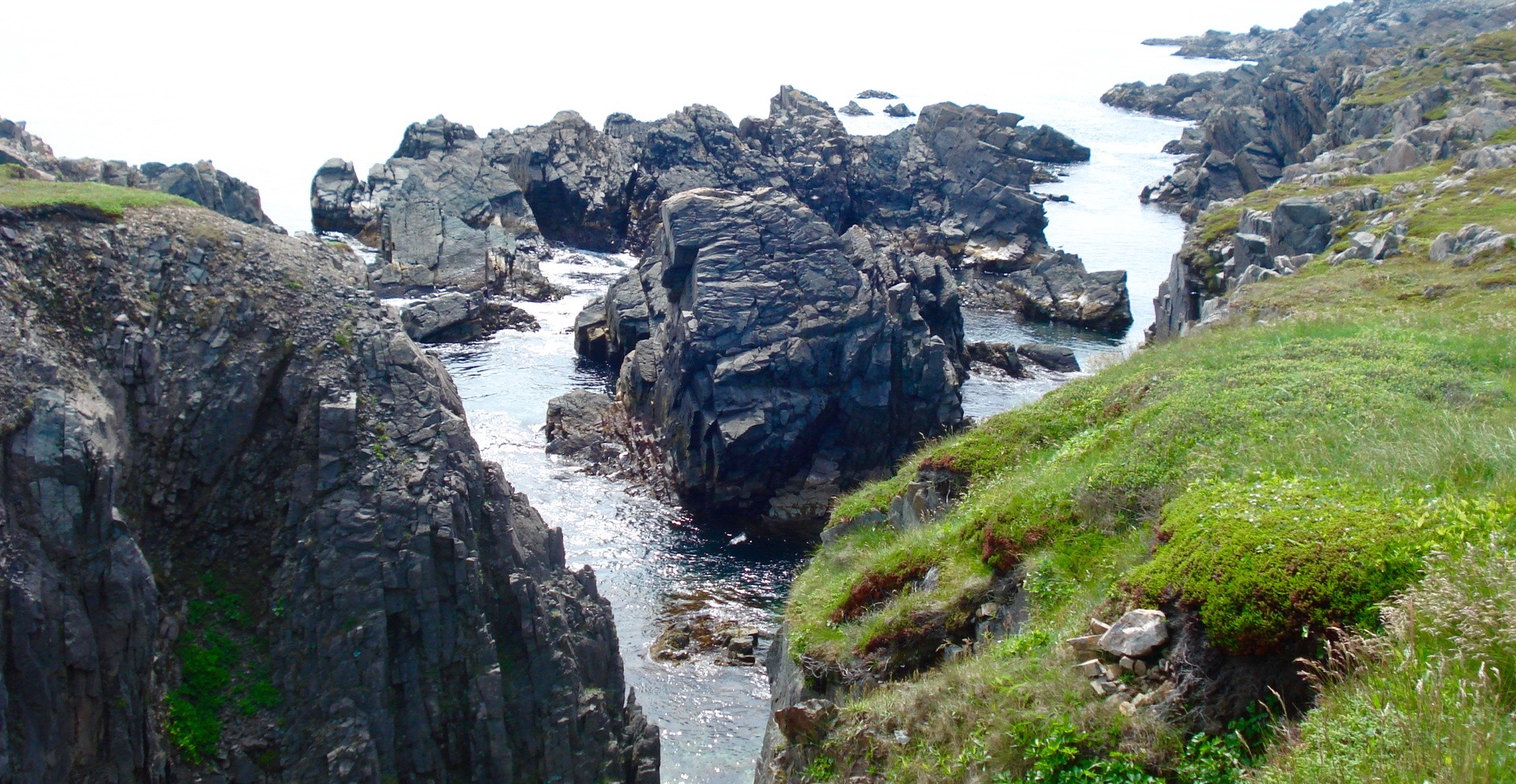
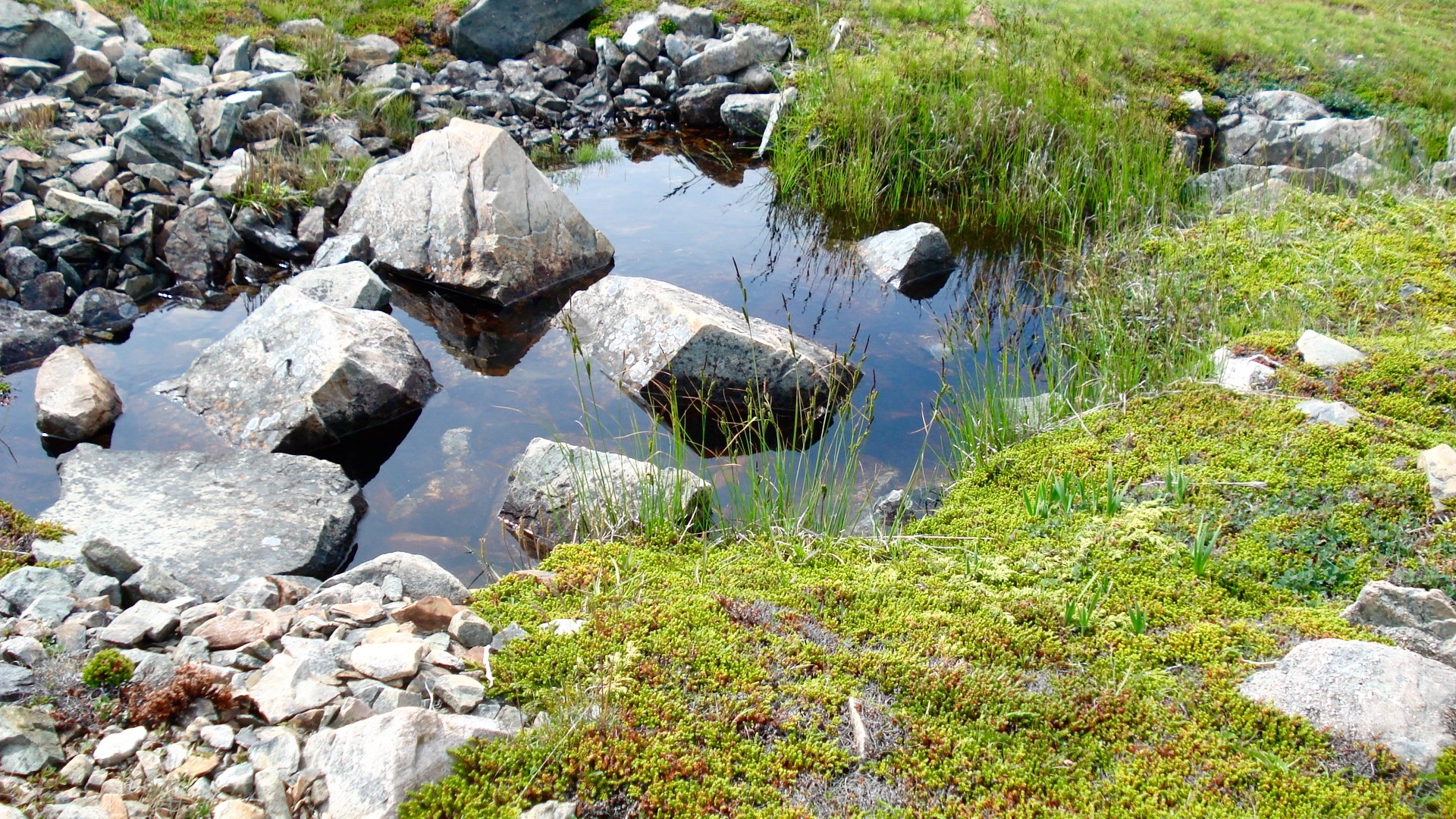
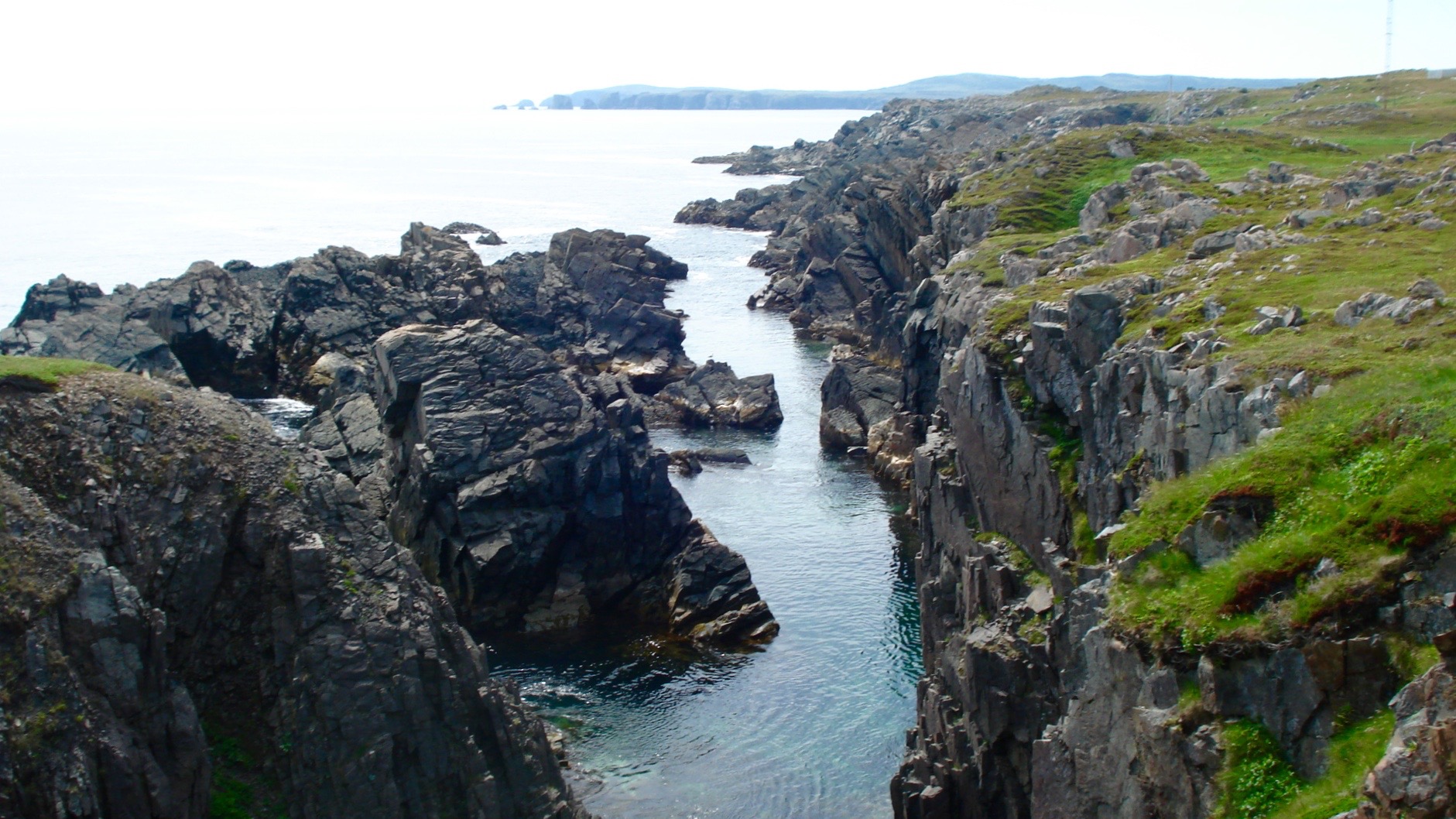
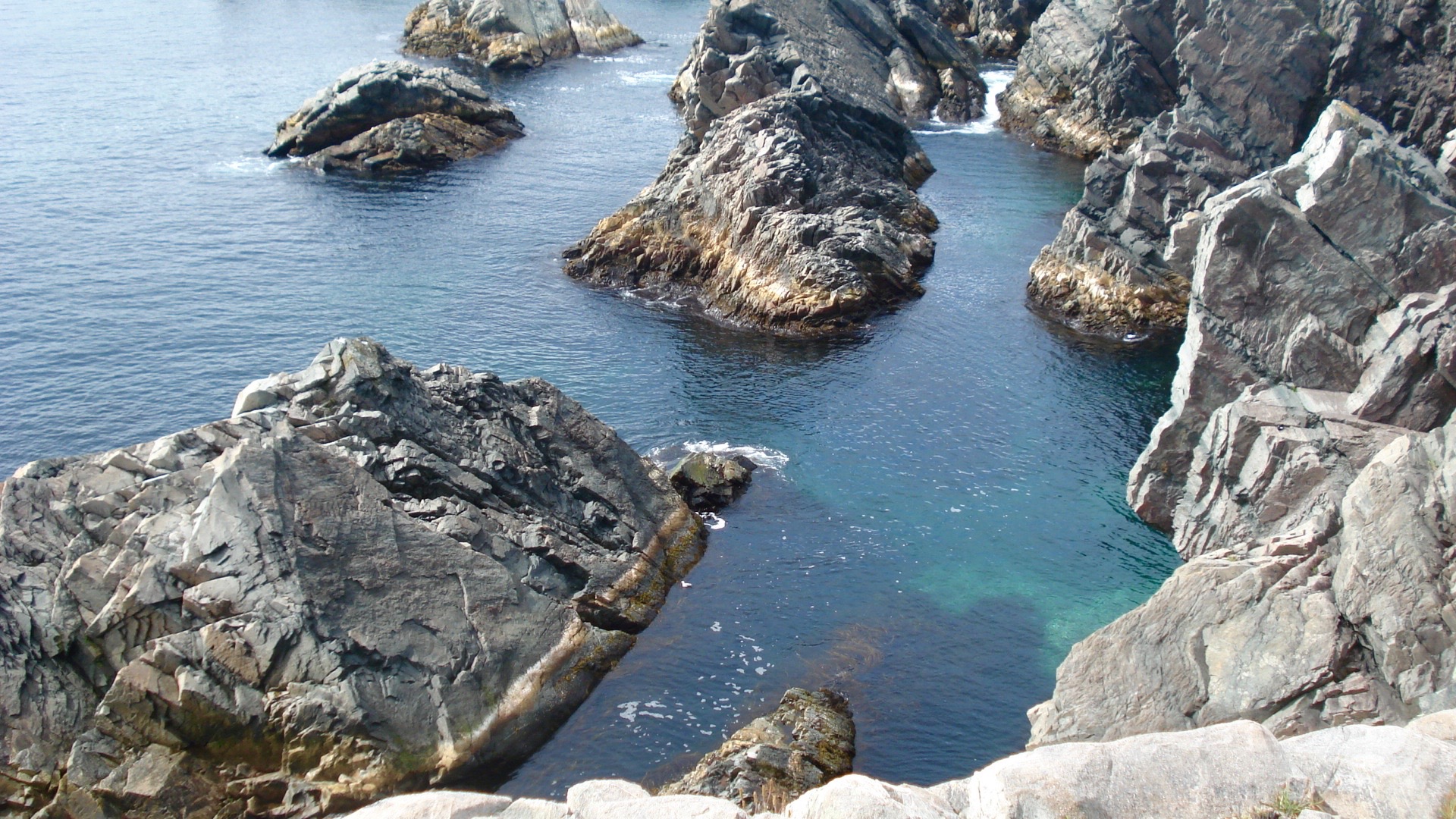
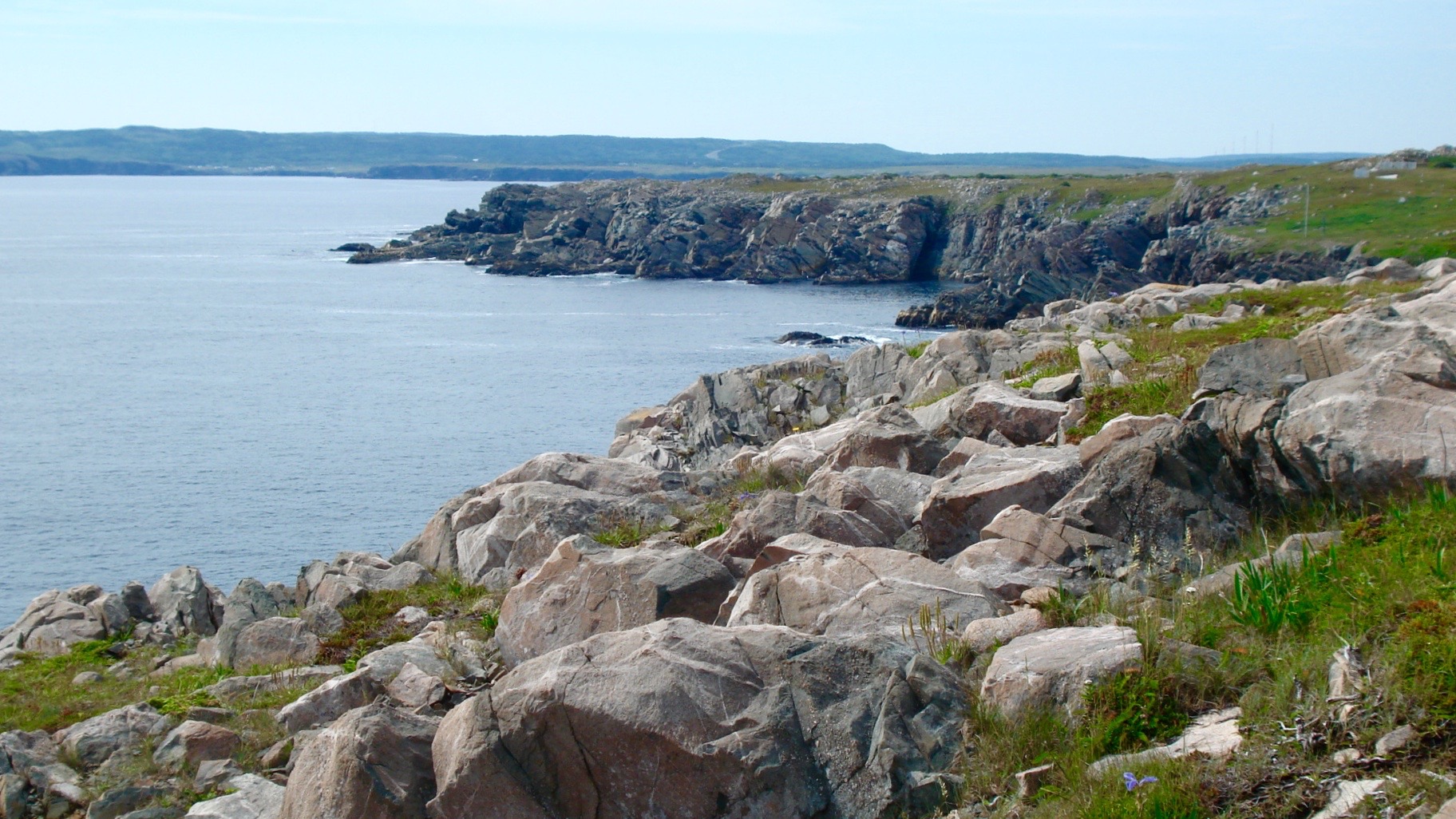

Our sojourn next took us from Trinity down south to the Burin Peninsula, through Marystown to Fortune, where we caught a boat to France. Yes, France, not French Quebec, but to two small islands off the southern tip of Newfoundland called Saint Pierre and Miquelon. You see, back in the day, France and England each wanted a part of the rich Grand Banks fishing grounds, and France established its stronghold on these islands. For years the two countries fought over their ownership, but France eventually won out—a small compensation for not getting more of Newfoundland. The islands are truly French—they use the Euro, they speak French, they have French customs and stores, and they require passports to enter. Today, hardly anybody lives on Miquelon, but about 5000 people live on St. Pierre. Without the booming fishing industry, what do they do to survive? I’m not so sure. We learned that 80% of the people work for the French government, one way or the other; so it seems like France subsidizes them to a large extent and ships people over in shifts to maintain the population. I think France just wants to keep a toe hold in North America. We took a tour of the small island and the town and then spent some time on our own exploring. Like St. John’s they have painted their homes in varied colors, and they do have a picturesque harbor and a lot of fog, particularly beautiful on the outer cliffs. We saw virtually no farming or cattle but a lot of horses, and even though one could get anywhere by foot, they had an abundance of cars. We thought there would be a booming tourist industry. There is not. There are few hotels and restaurants or even appealing stores. I think a wonderful tourist industry could be developed, but it is rather meager at present.
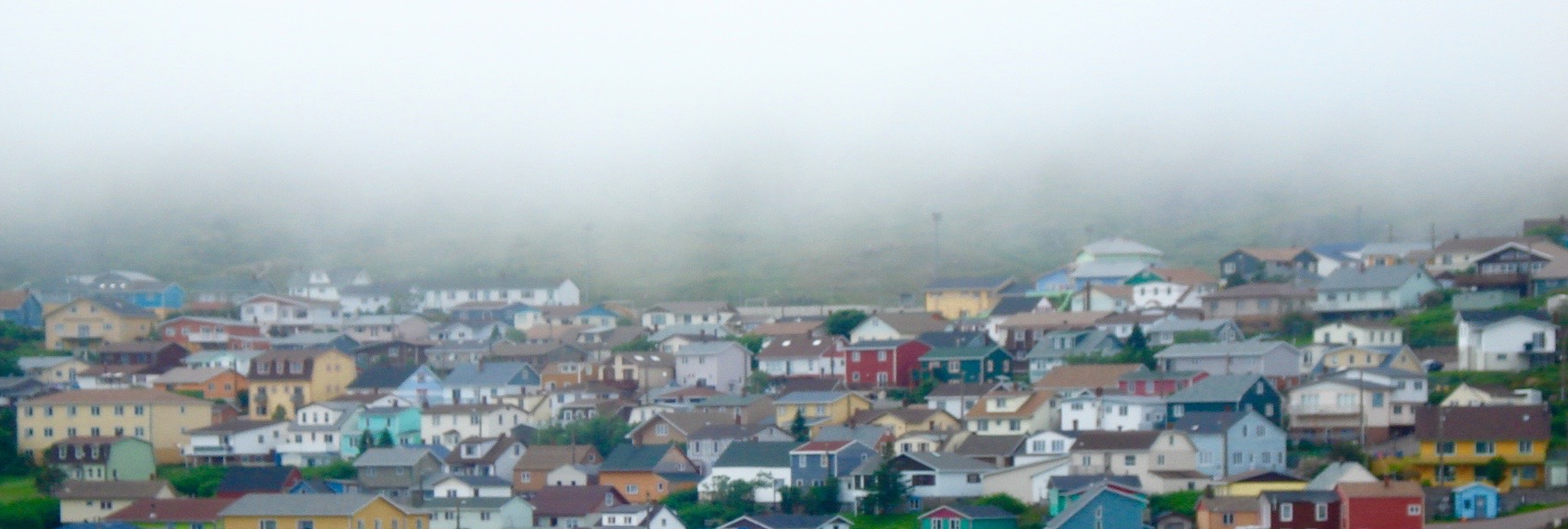
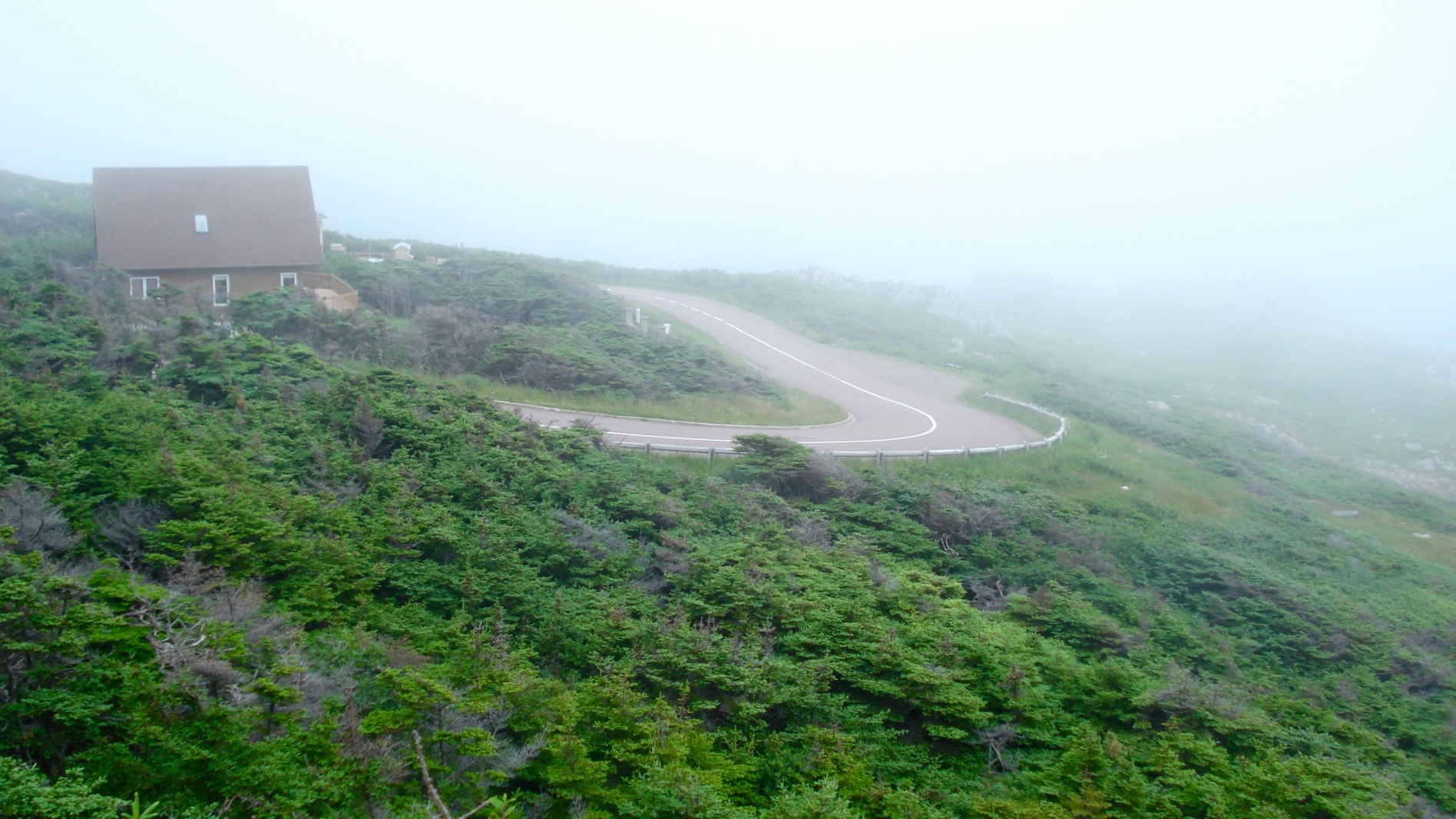
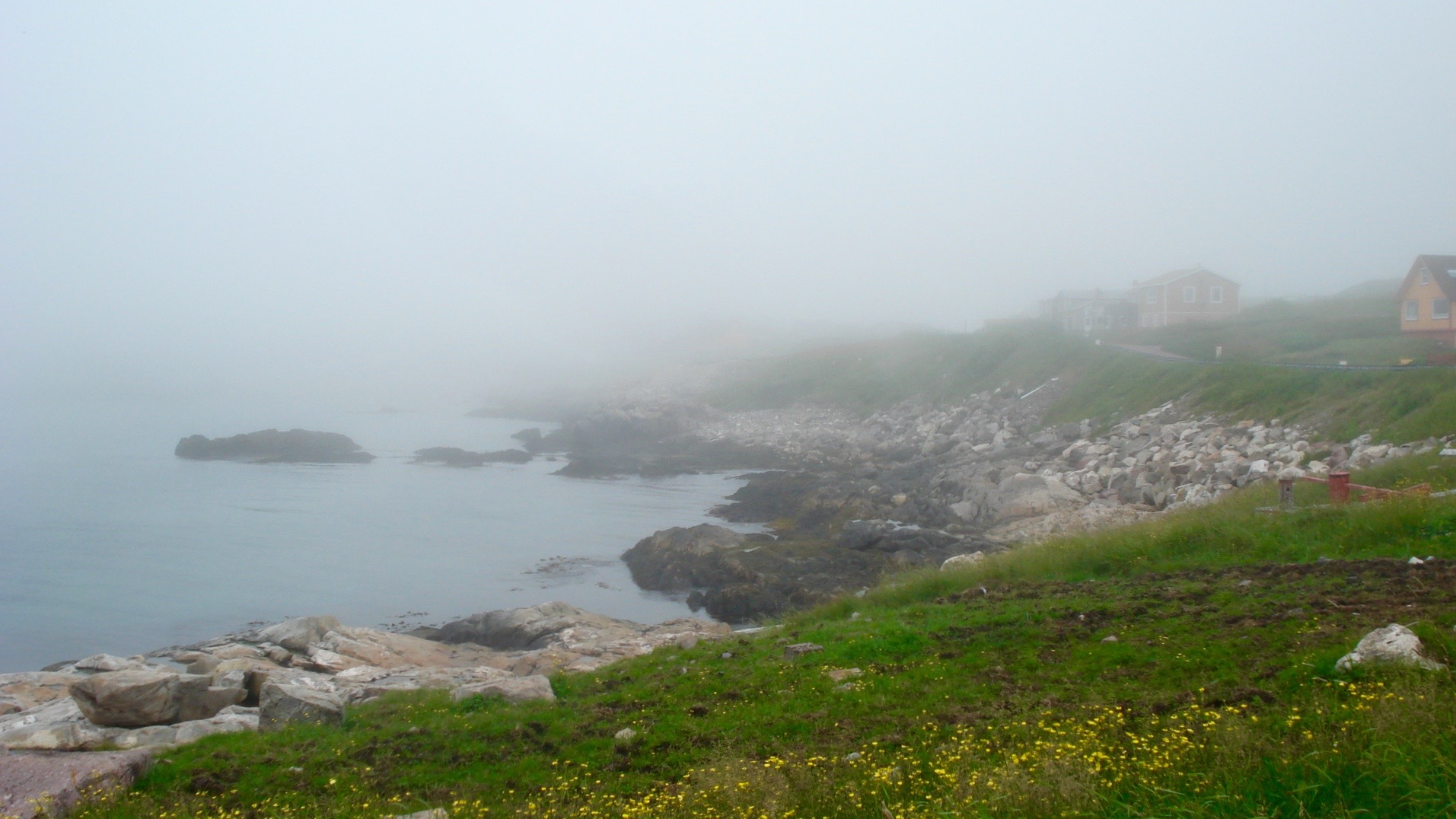
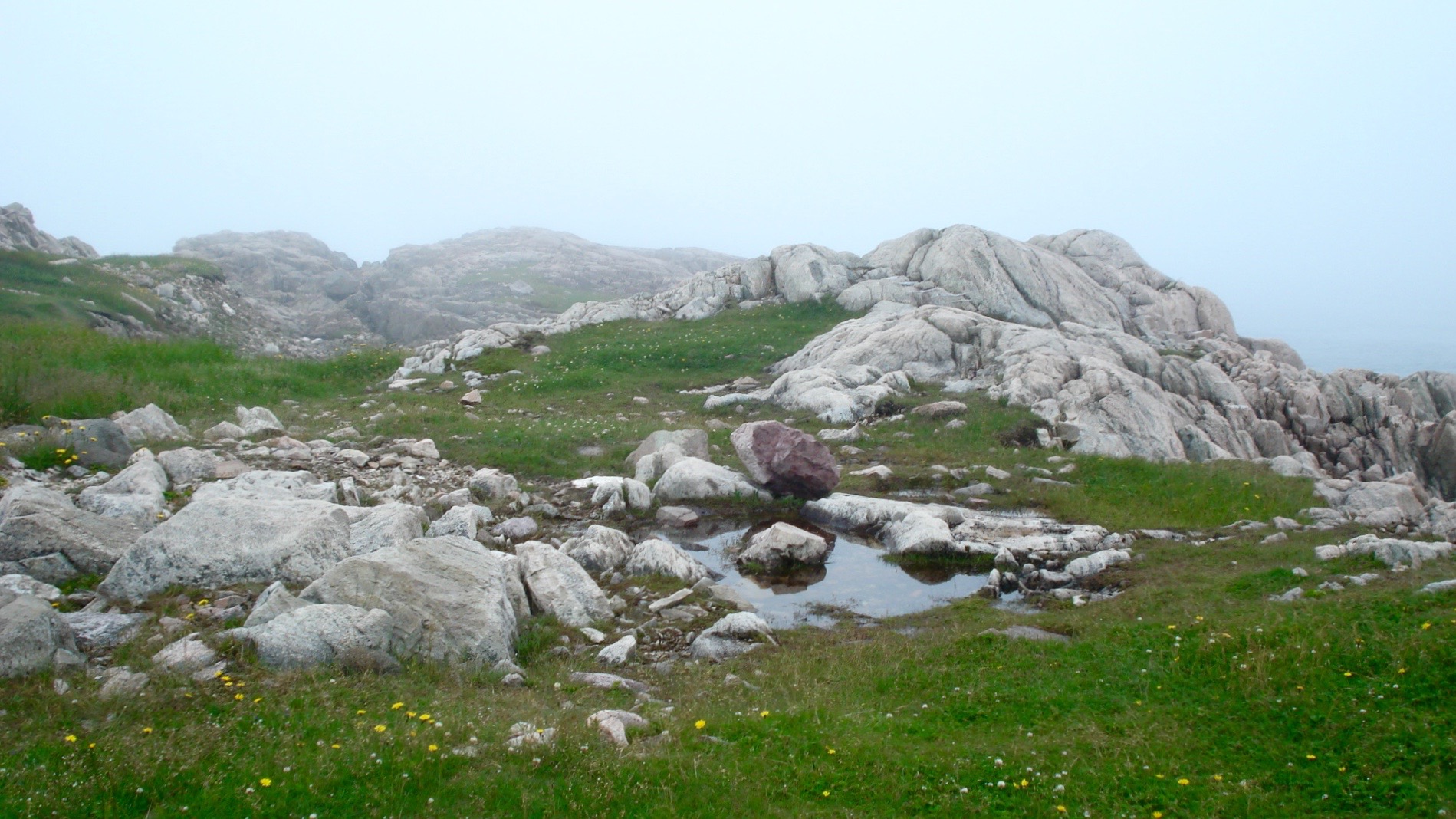
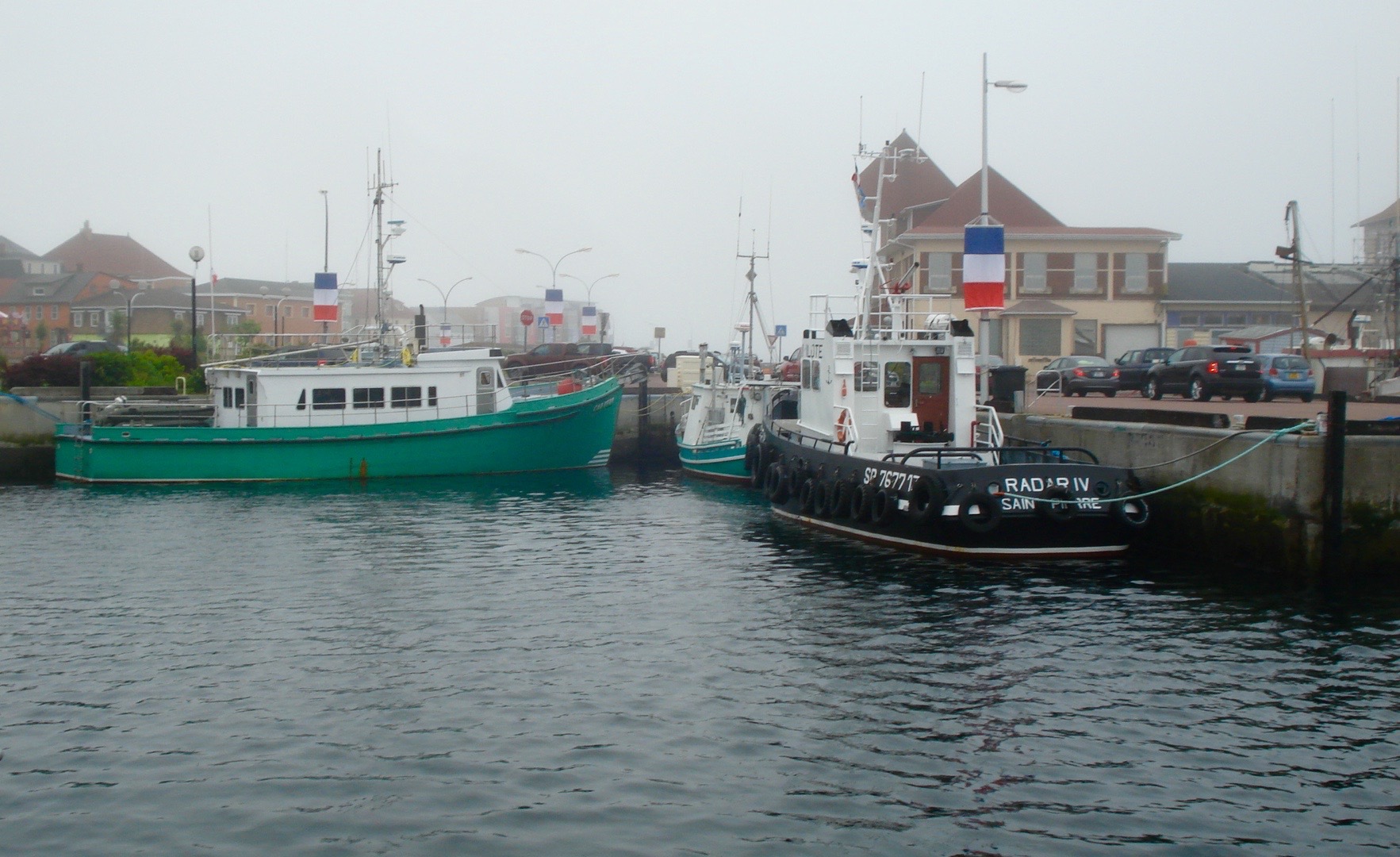
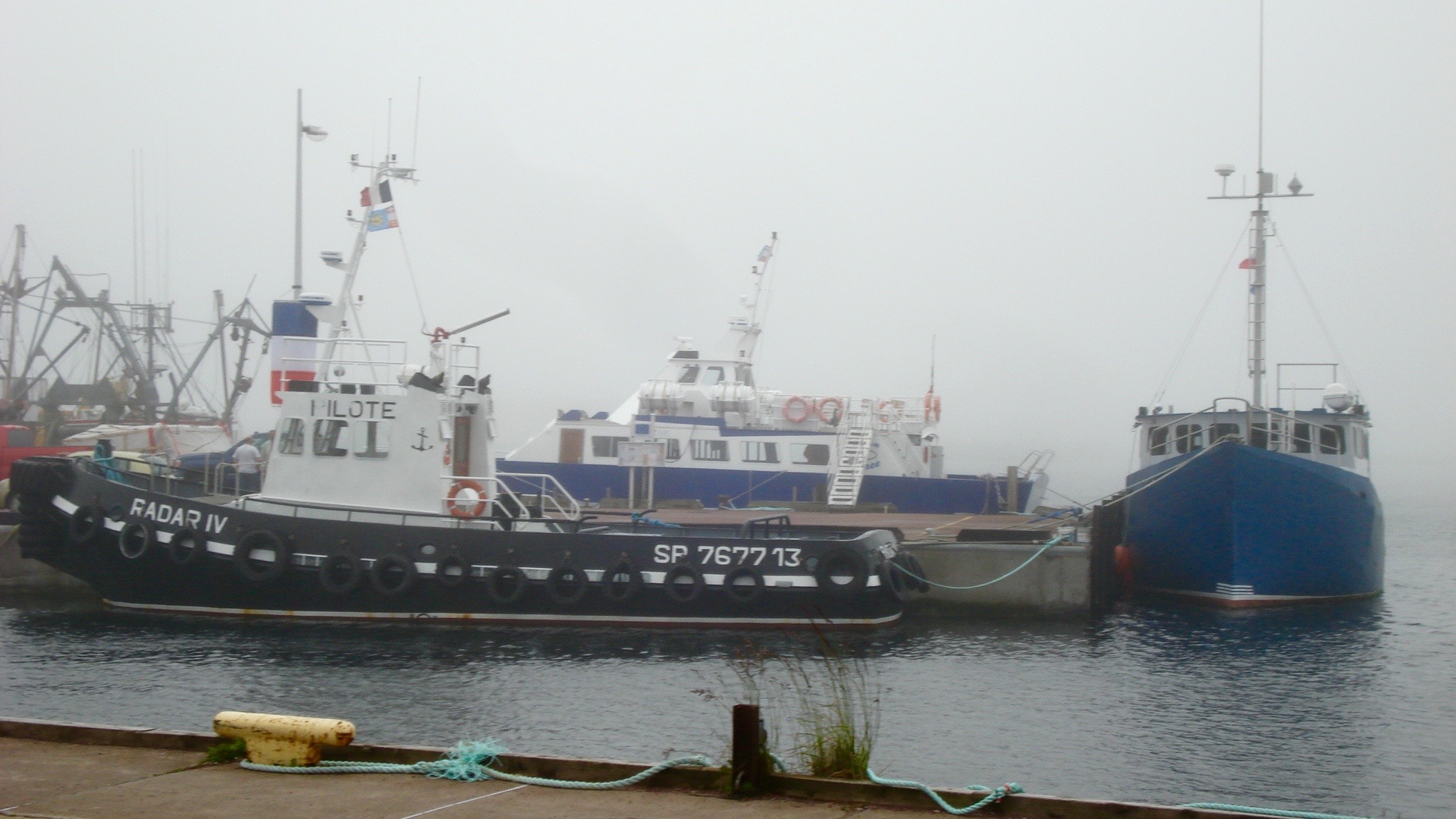
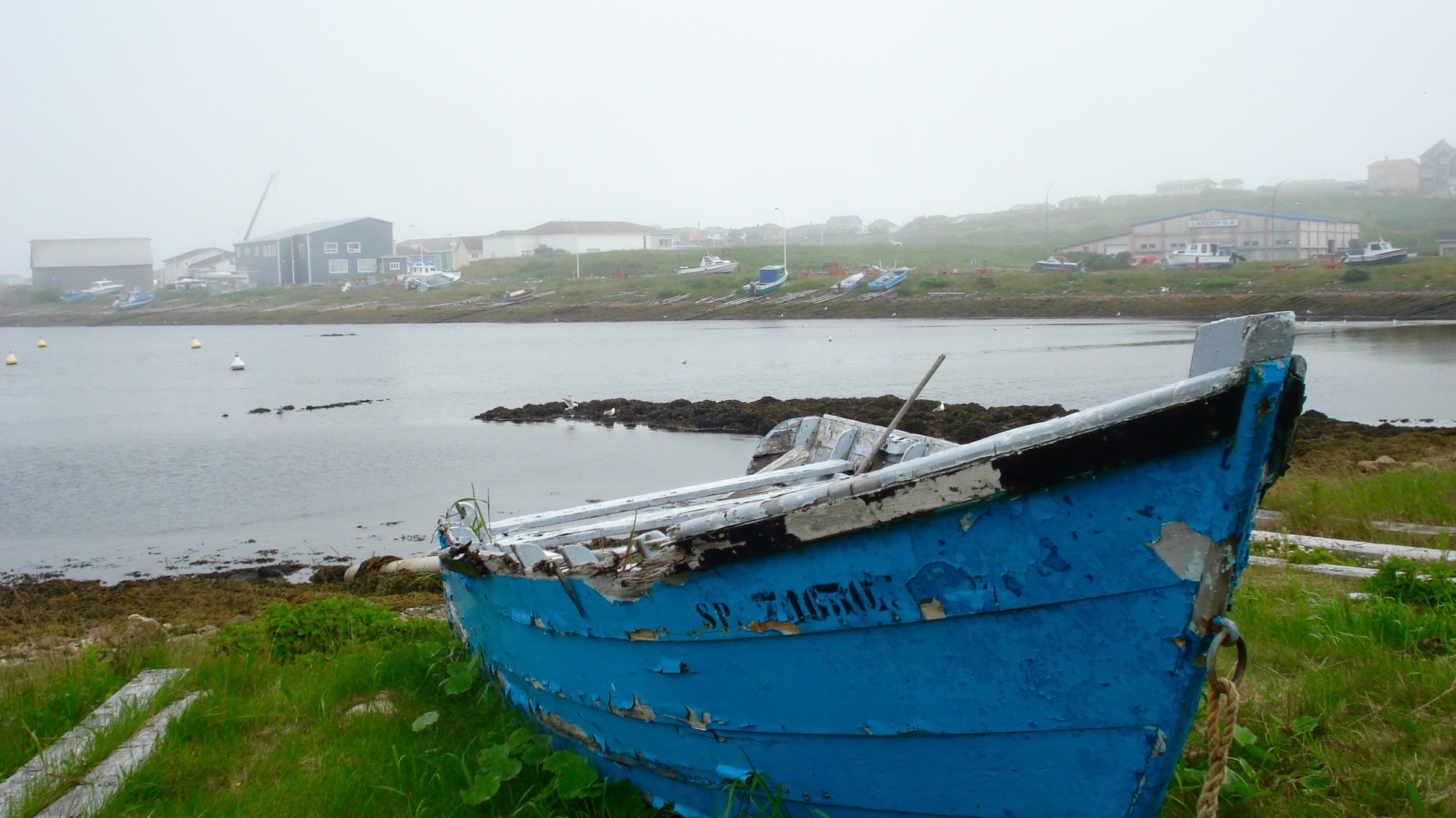
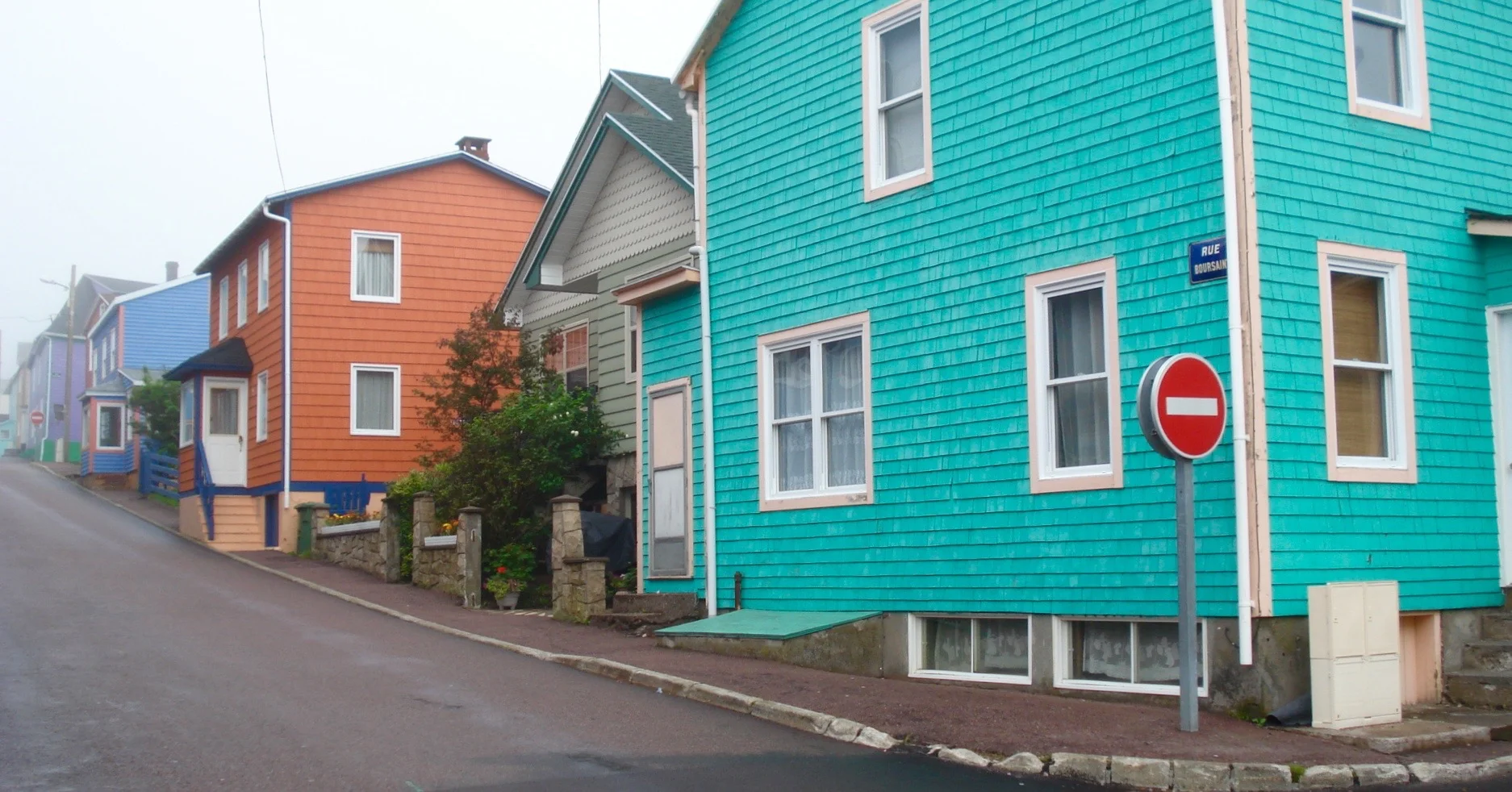
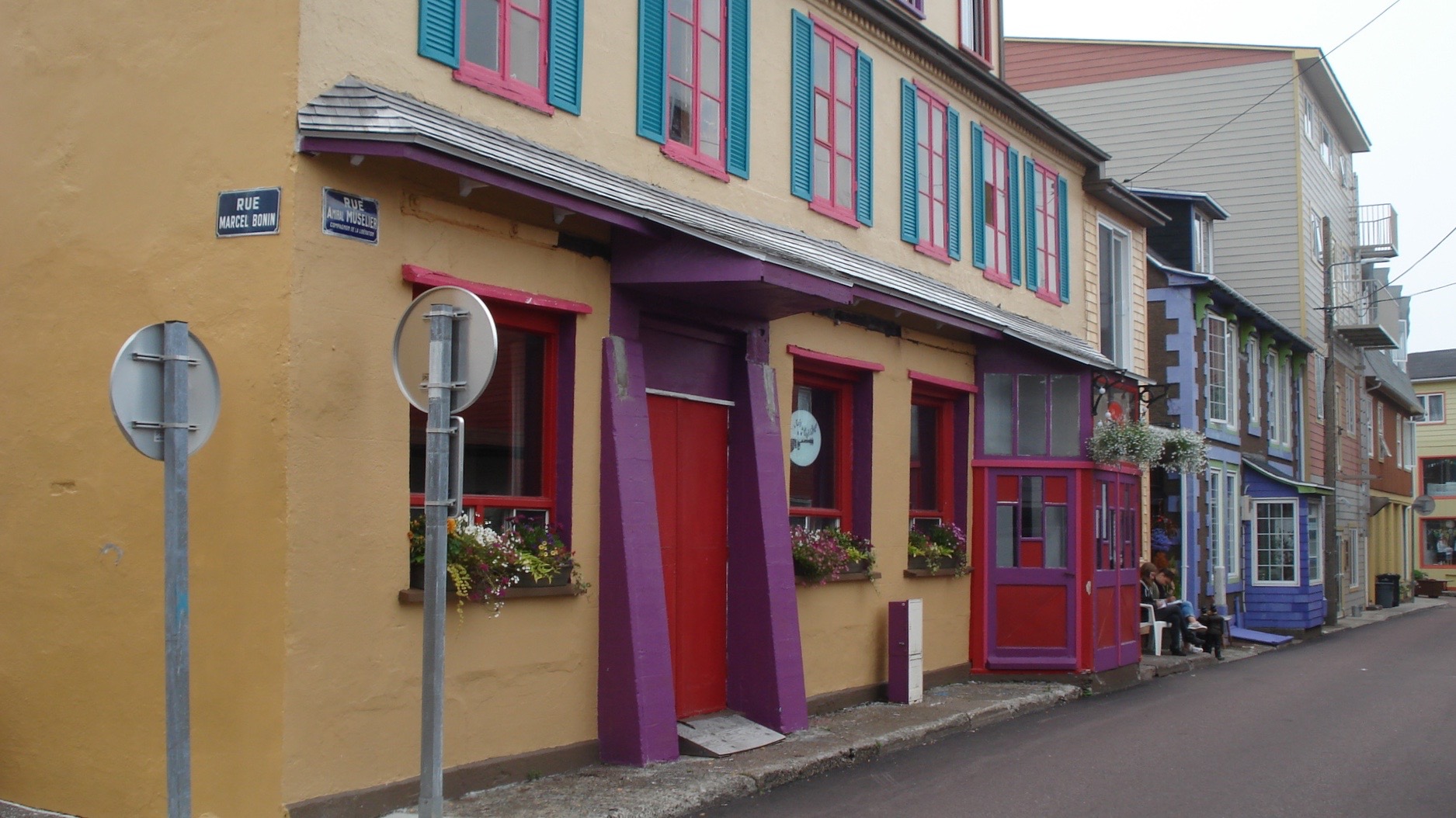
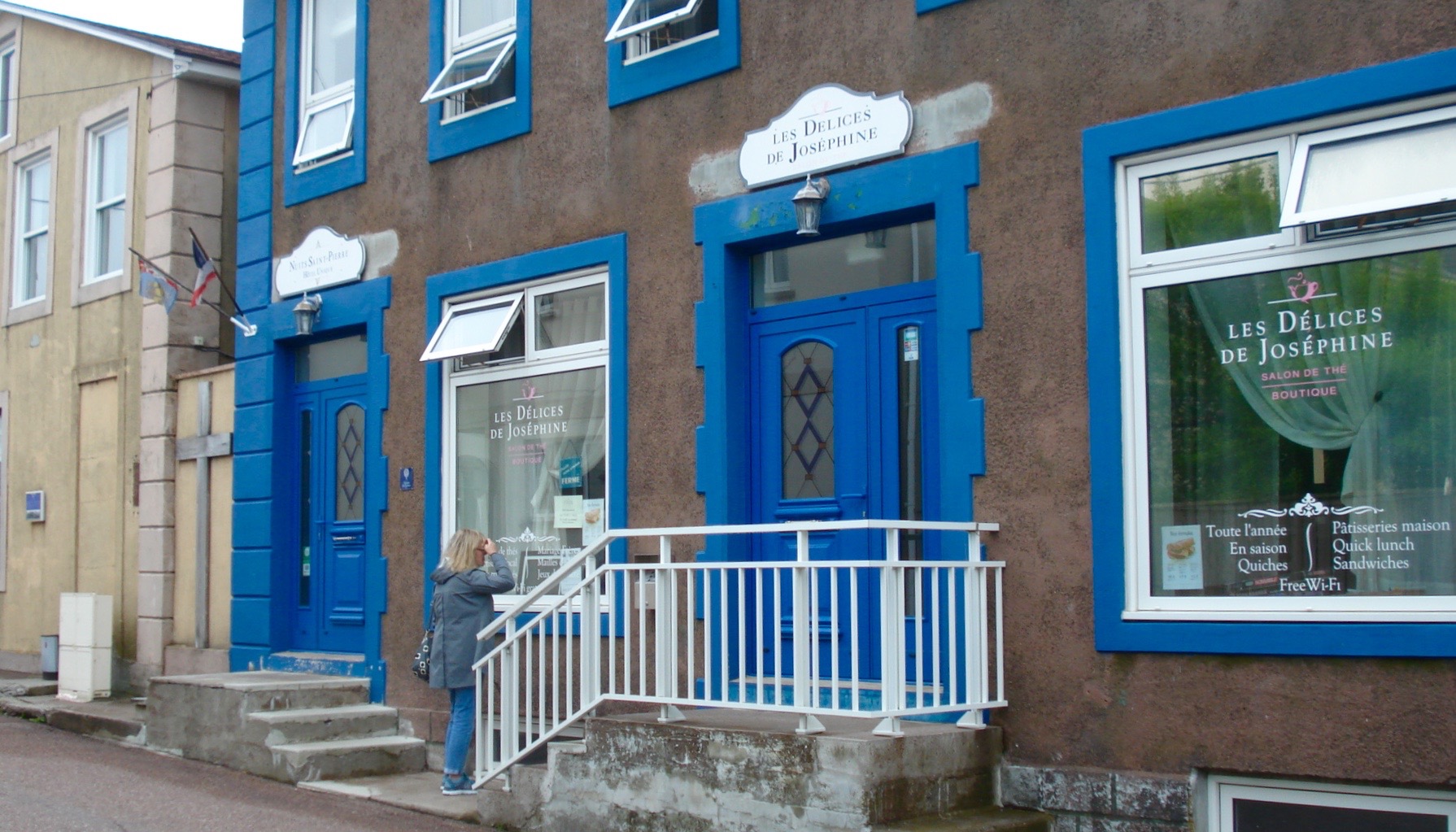

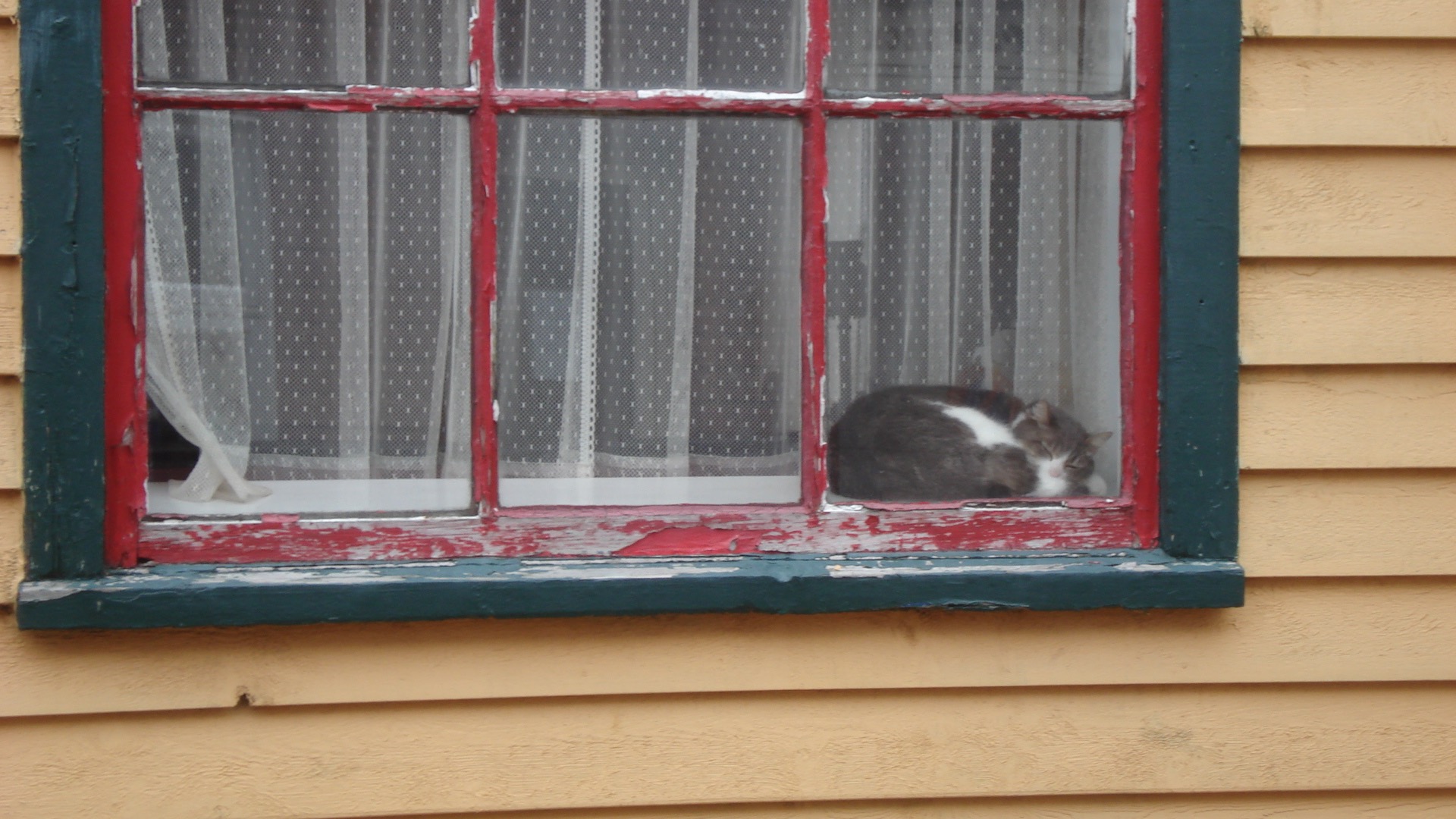
While on the Burin Peninsula we passed some areas where in the 1960s and ‘70s many people had moved in as part of a government resettlement program. People living in isolated communities, especially those who lived on isolated islands and relied on fishing, were in dire straits and in need of modern services—health, schools, and so forth. The government devised a program to pay each person who would move off the islands and to an area that was more easily served by the government. To encourage people to move, the government would also pay for them to move their houses as well. We saw photographs of houses being rolled along, being pulled by the entire townsfolk to a dock and then loaded onto makeshift barges and pulled across the bays by small fishing boats. They then moved the houses to new locations and tried to refurbish them again. Was this a worthwhile program? It’s difficult to say, but, as you might expect, these Newfoundlanders, tied to their island communities, did not want to move. To make it happen, the government increased the amount of money they paid each person (still not much) and said that nobody would get the money unless an entire town agreed to move with nobody remaining on the island. I guess it accomplished the goal, but you can imagine the pressure and bitterness that must have occurred as some people wanted to accept the deal and others wanted to hold out.
The third novel about Newfoundland that I mentioned is called Sweetland by Michael Crummy and is the story of one such island community and one person who wanted to hold out. It is my favorite of all three books and evokes Newfoundland and the people in unforgettable ways.
Not surprisingly, there are poems and songs about the Resettlement. Here is an excerpt from one of them, called Out from St. Leonard’s:
Well, the news it soon spread to the harbours and coves,
That the young crowd were leaving in hoards and in droves;
For to go to Toronto to follow their goals,
Or to go to Placentia to live on the dole.
And it’s out from St. Leonard’s and out from Toslow,
They’d steam ‘cross the bay with their houses in tow;
With their beds in the bow and their stoves in the stern,
Bound away with their sons and their daughters.
You might ask, did we see any Newfoundland dogs or Labrador Retrievers? Very few, but I learned that the citizens consider the Newfies to be particularly smart dogs. As one story goes, in the town of Fortune, which we visited, a spate of thefts had occurred. To help solve the crime, the local priest contacted the authorities in St. John’s, who sent a policeman to help catch the culprit. The policeman never figured out who the culprit was, but he did like pushing around his authority in the town, where the townsfolk came to revile him, especially the young boys. You see, he used to yell at them and pinch their ears and grab them by the necks. One boy had a loyal Newfie named Champ that growled whenever he saw the policeman hurting his boy. One day the policeman went down to the docks to use an outhouse built out over the water near one of the fishing stages (fishermen’s shacks used to store their gear). When the policeman was inside with his pants down, Champ ran at the outhouse with all his might and pushed it into the land wash of the harbor. Champ ran away and hid, but some townsfolk had seen the incident. The policeman, all covered in mud and sewage became the laughing stock of the town and was forced to leave. Good old Champ, the Newfie.
We saw several pictures and little carvings in gift shops of strange people dressed up as if for Halloween but with pillowcases over their heads and women’s baggy dresses on or potato sacks and lamp shades for hats. We learned that they were the Mummers. At Christmas time, there is a tradition, especially on some of the islands and in outlying communities, for people to dress up in these homemade disguises and go from home to home to sing songs, give gifts, and get fed. People are supposed to guess who each mummer is.
I vaguely remember the story of hoards of people stranded on airplane flights that had been diverted to Gander Airport in the middle of Newfoundland during the 9-11 attacks. When we asked about the actual story, we learned that the entire town of Gander showed up at the airport and took in all the travelers to their homes and fed them and took care of them until they could arrange to leave.
I could go on, but I will leave it there for my impressions of Newfoundland. A poem I read sort of captures the story of the Newfoundlanders:
Why are we here? God?
Or cod? What drives us on? Zeal?
Or seals? Or the hunt?
Fairies, berries in the fall.
Songs, times and rhymes in the hall.
In closing I want to use the story in Genesis of Adam and Eve being kicked out of the Garden of Eden into the lone and dreary world as a metaphor. Earlier this summer, we visited the Great Smoky Mountains National Park, a beautiful, lush place. If the Smokies can represent the Garden of Eden, then Newfoundland can represent the lone and dreary world. But the irony is that the lone and dreary world—Newfoundland—is just as beautiful as the Garden of Eden, but in a different way.
It’s the finest kind.

